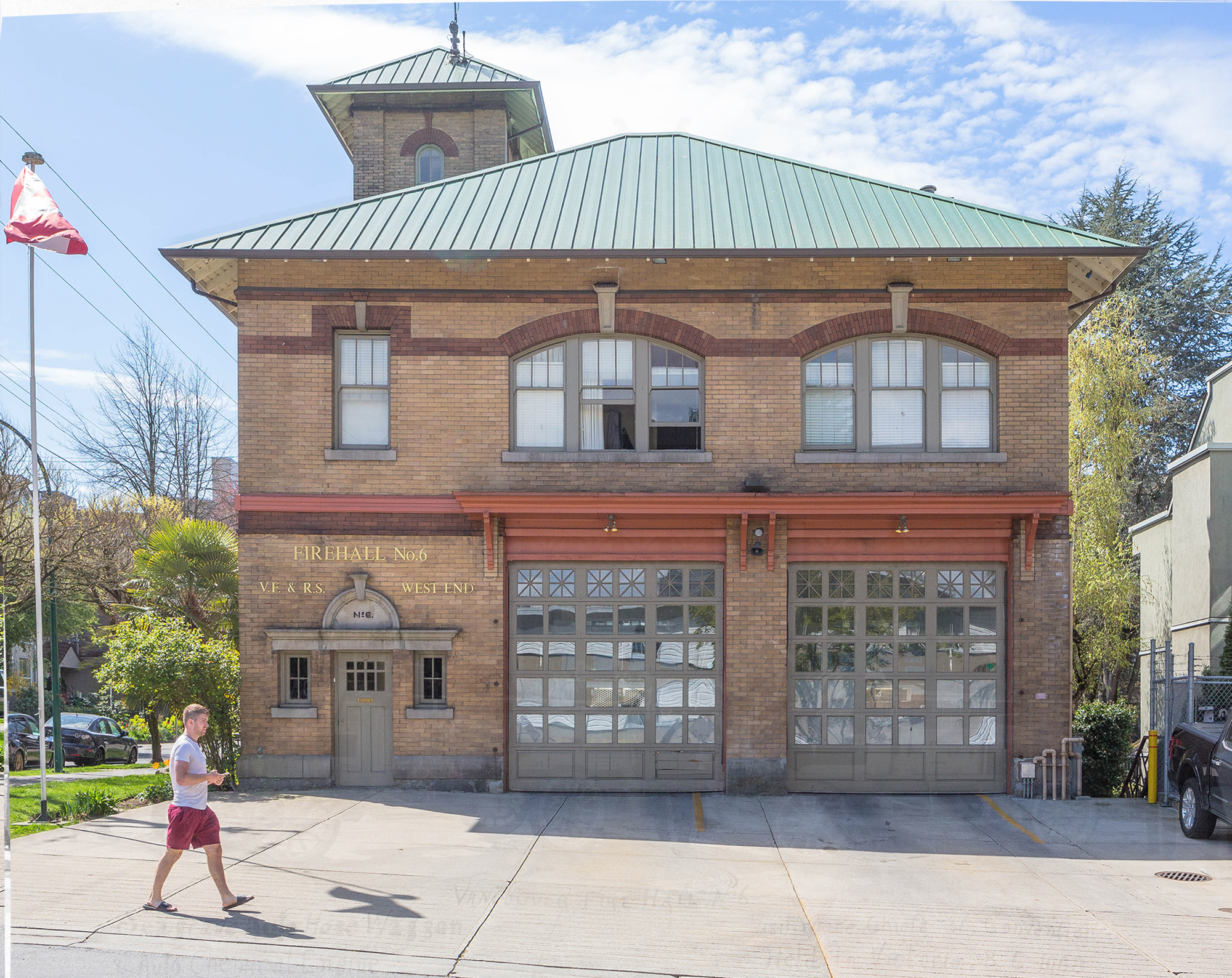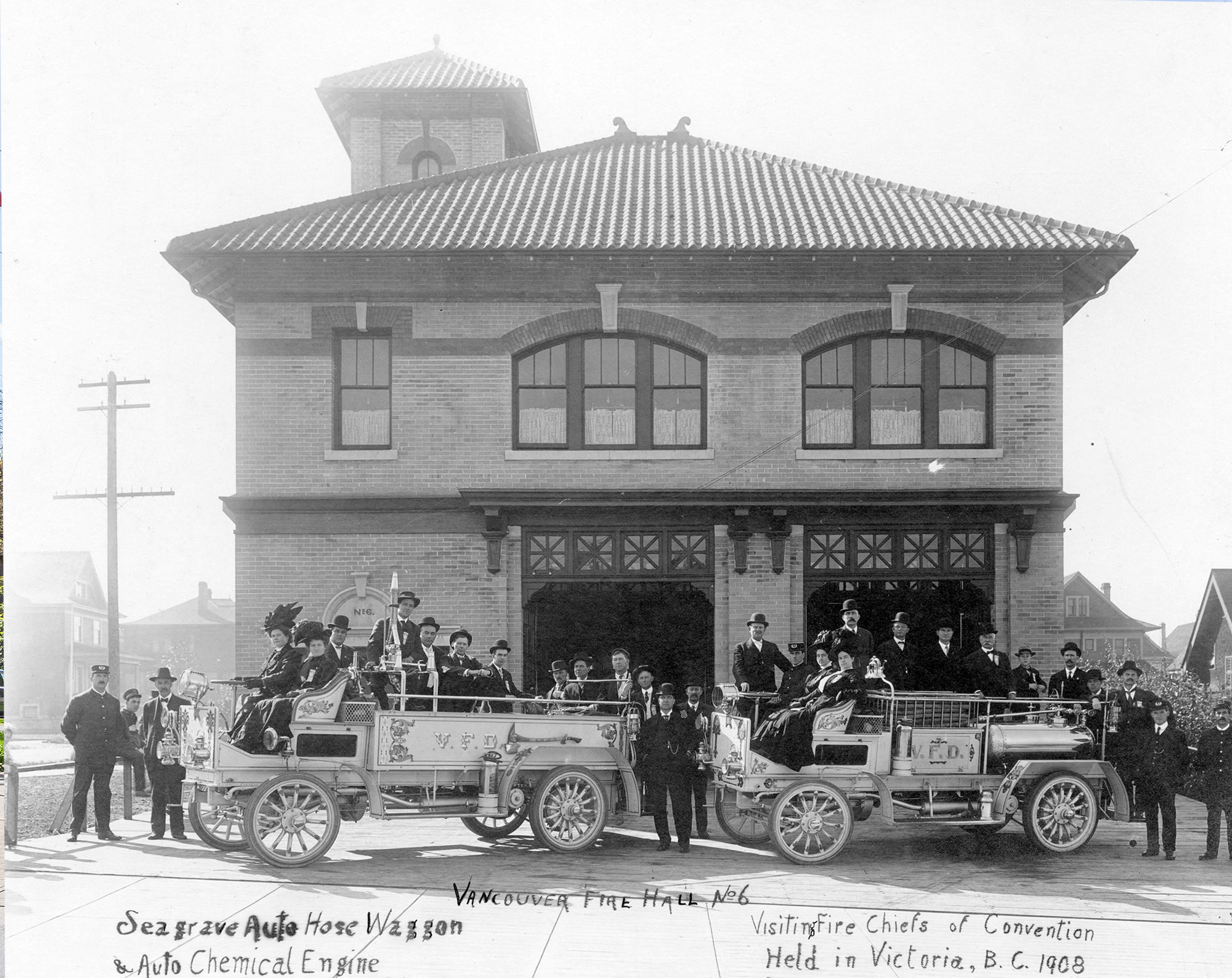Added May 22, 2020.
Beatty Street from Dunsmuir to Pender, 1927 and 2020.
There are a number of buildings appearing in both pictures, including the imposing World Building in the background. The green-domed structure is also called the Sun Tower, and for a couple of years laid claim to being the tallest building in the British Empire, boasting an impressive 17 floors. These days it seems to be in a constant state of repair (not surprising given its age and extreme vertical-ness).
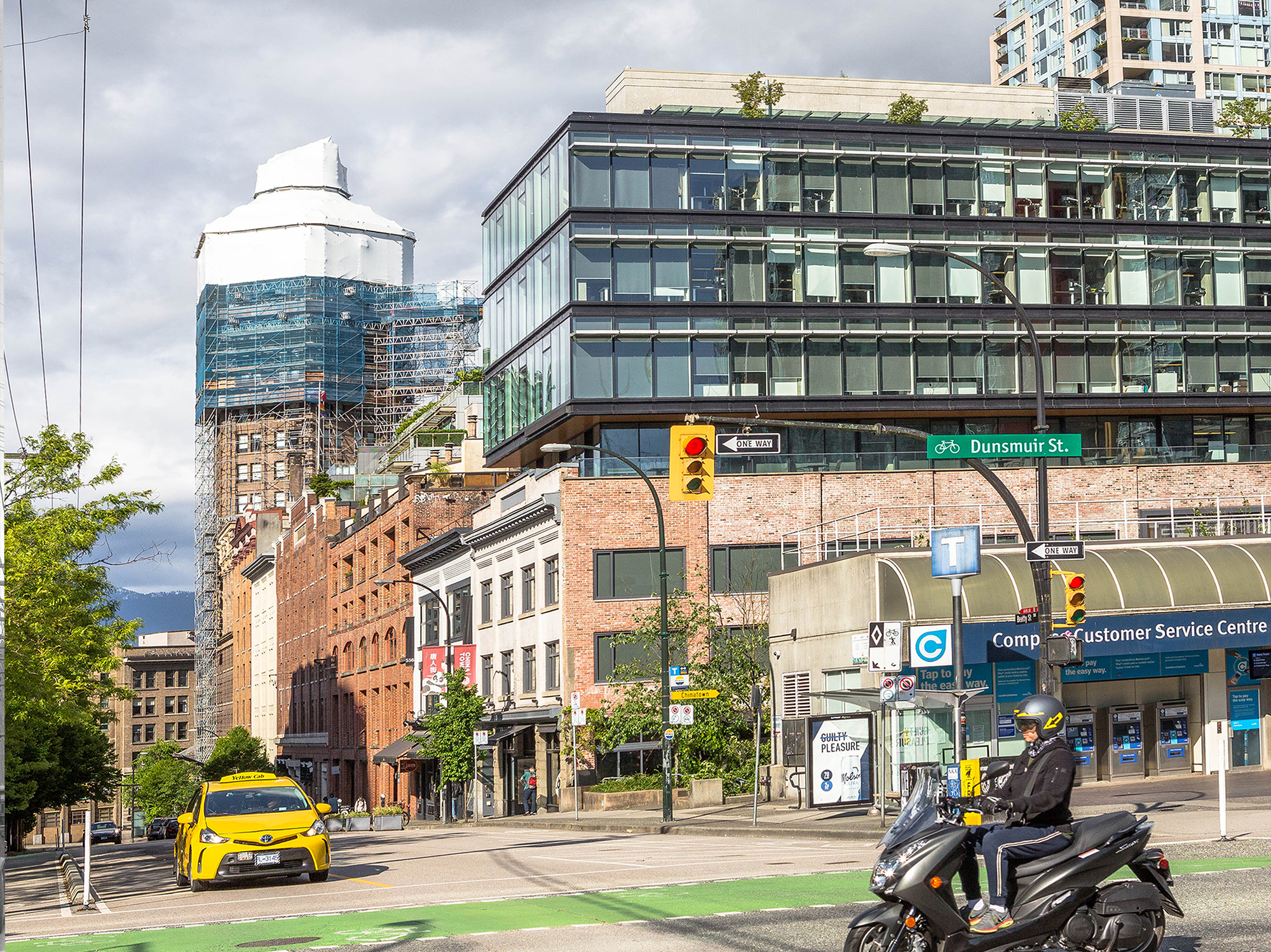
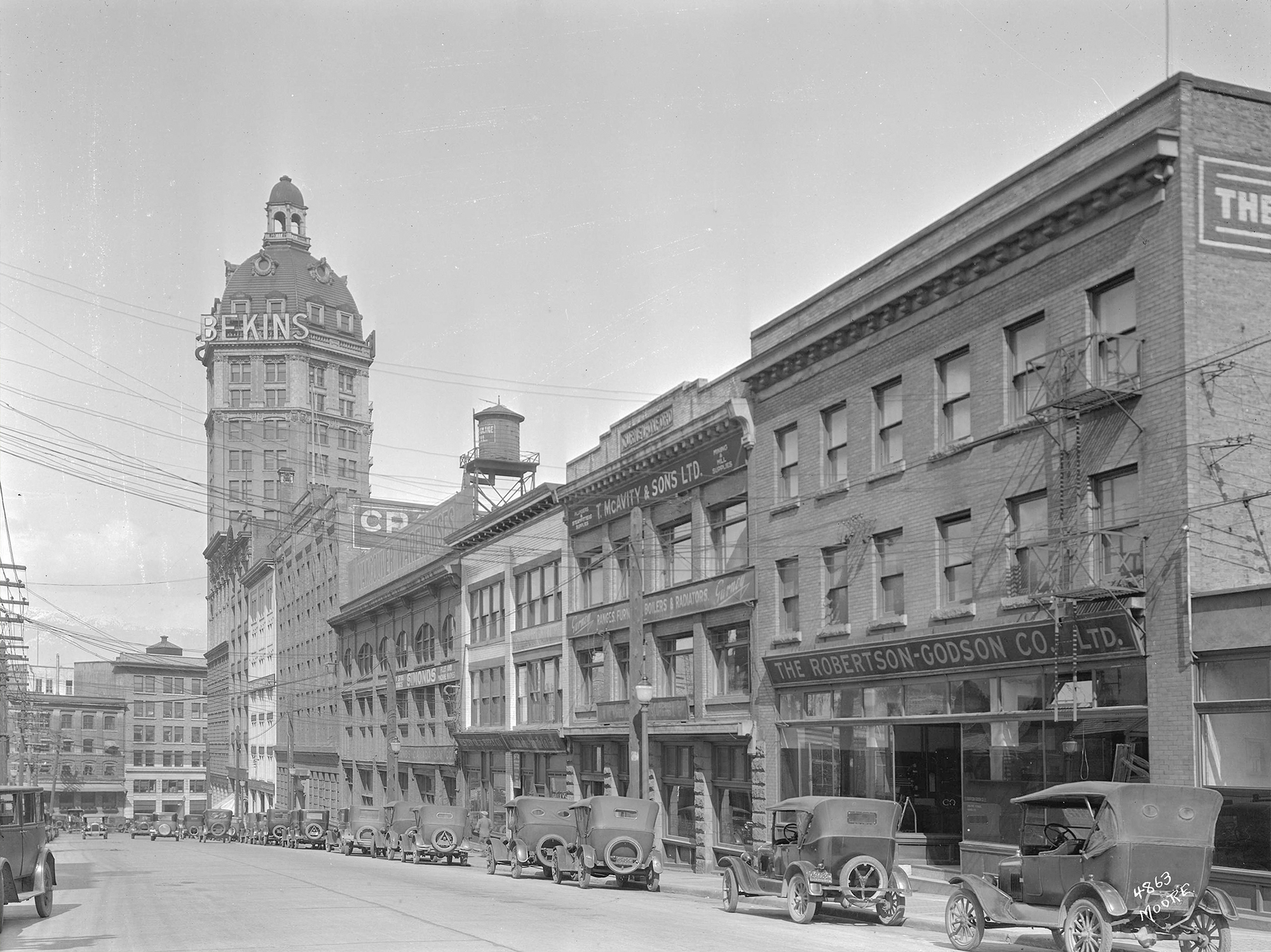
Granville and Cordova, 1926 and 2020.
This busy corner of the city has gone from selling furs, stationery and moving services to tacos for stoners. The old parking garage that was recently here is being replaced by a 30-storey office tower.
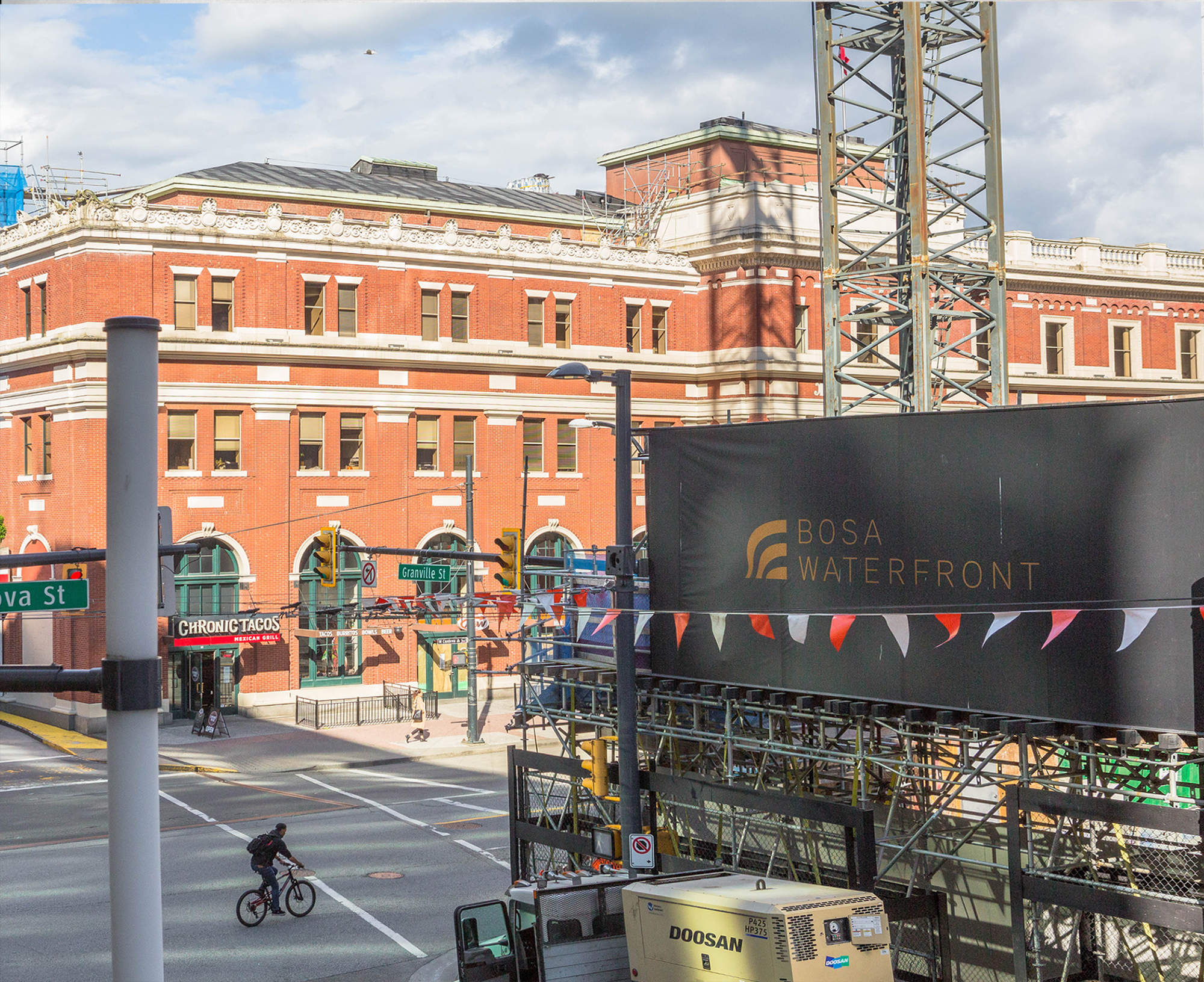
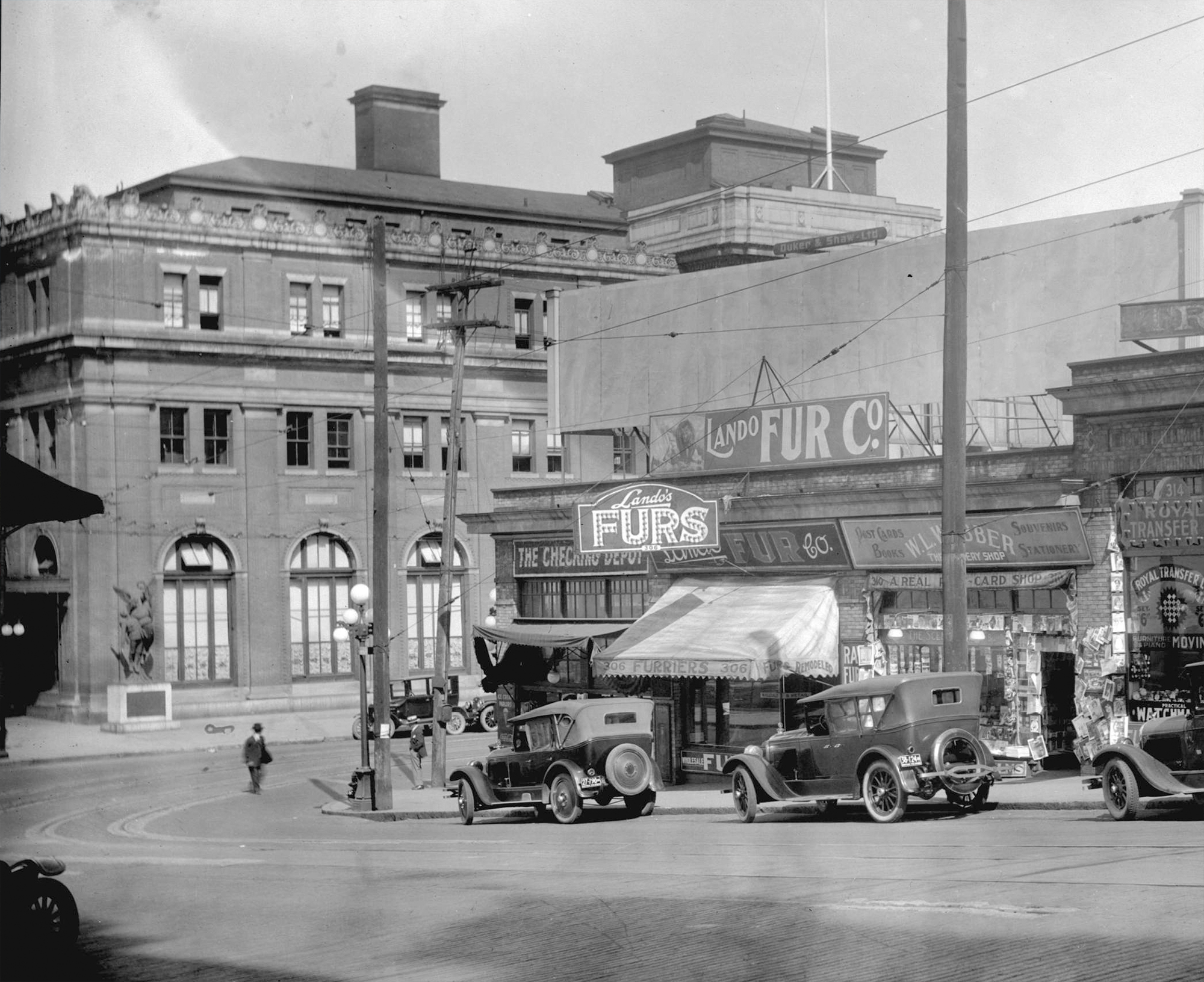
Added May 20, 2020.
Laundry Day, 1956 and 2020.
This is the rear of Point Grey Pharmacy, at 10th and Trimble. There are a number of papered-over windows on 10th Ave., which leads me to wonder how much longer this building will last. The pharmacy is now a couple of blocks west on 10th.
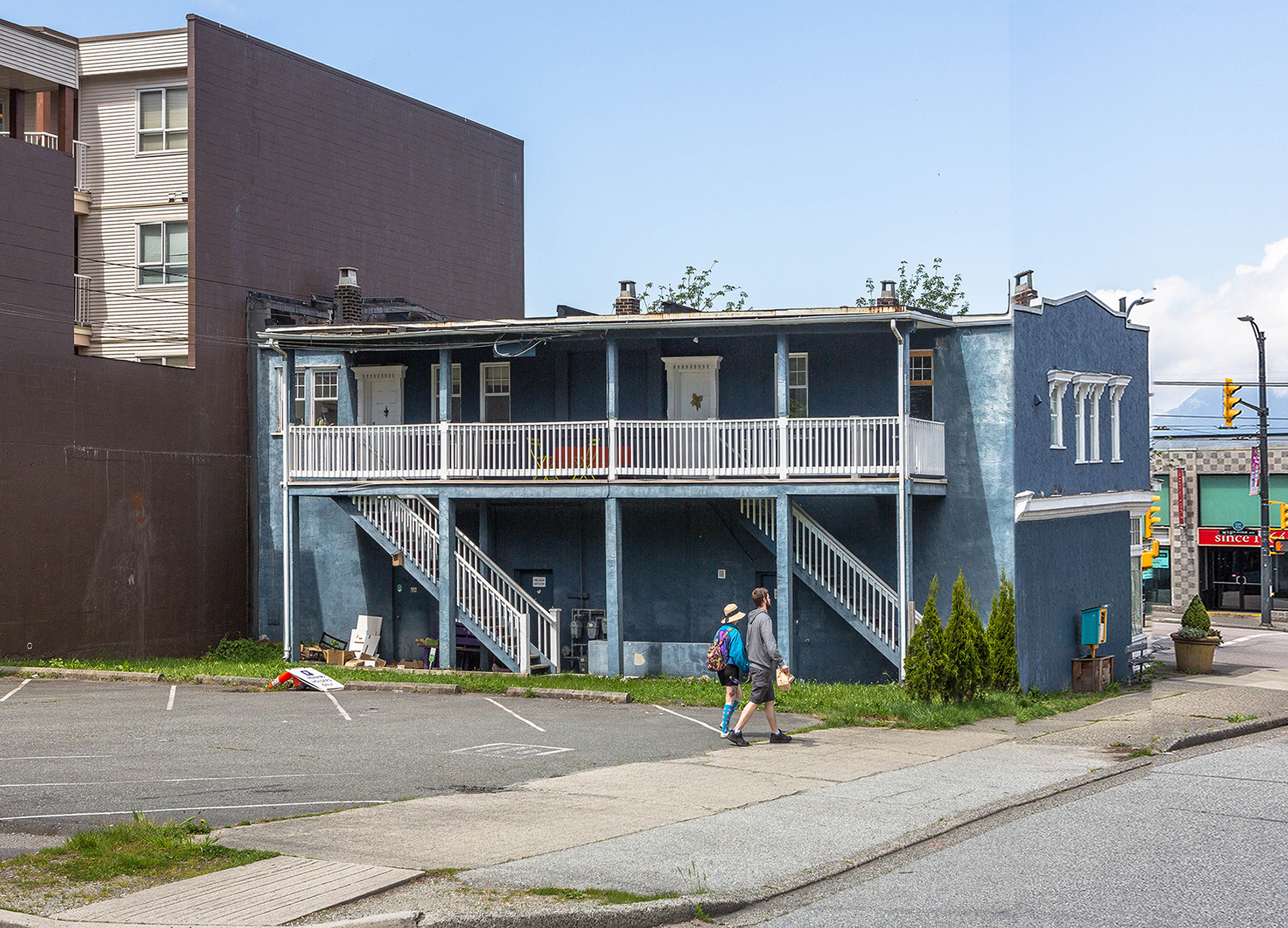
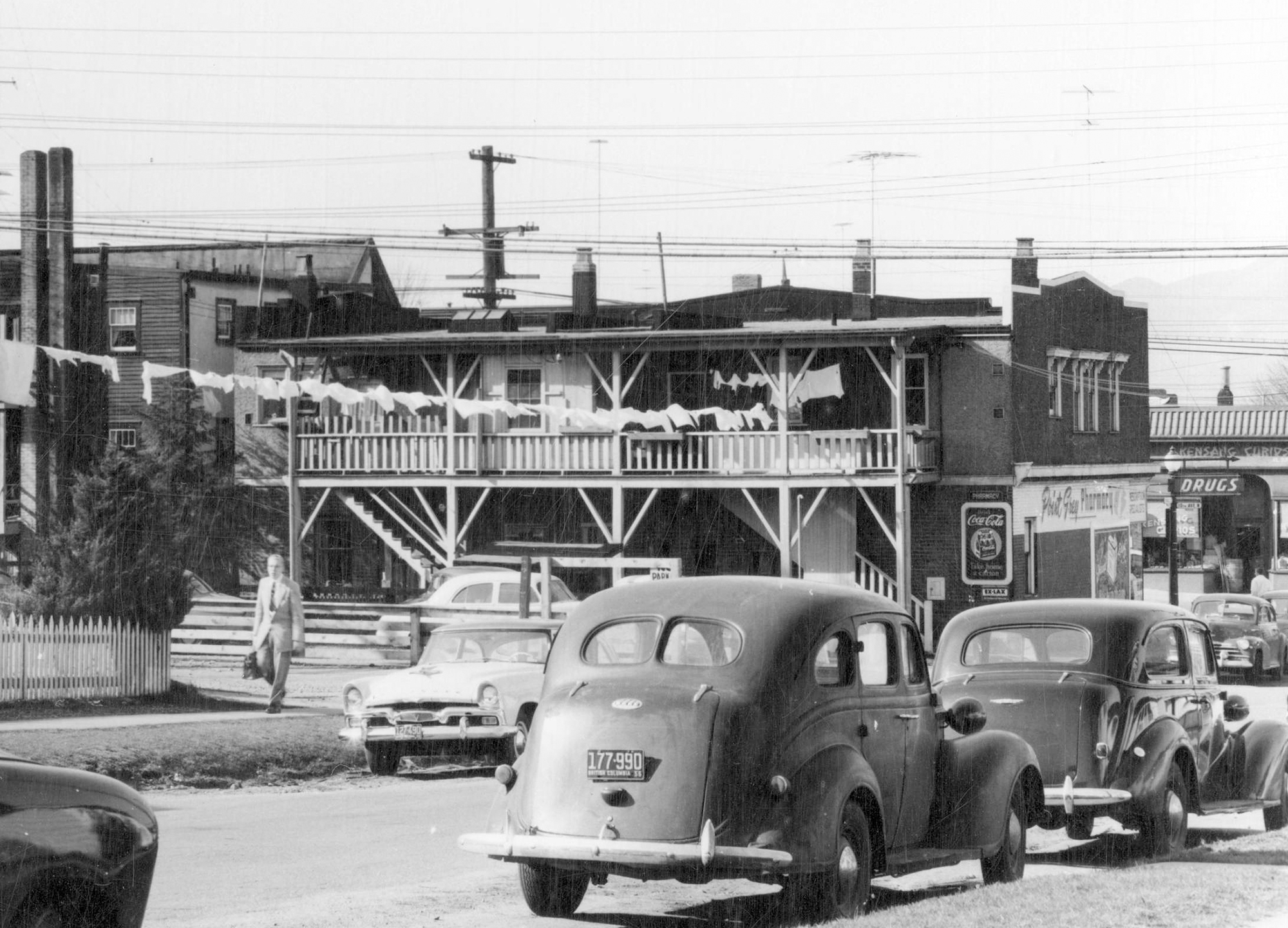
Renfrew Lodge, 1928 and 2020.
Built in 1925, still going strong. One of several well-preserved old apartment buildings in the South Granville neighbourhood. Surprisingly, the Renfrew is not on the heritage register.
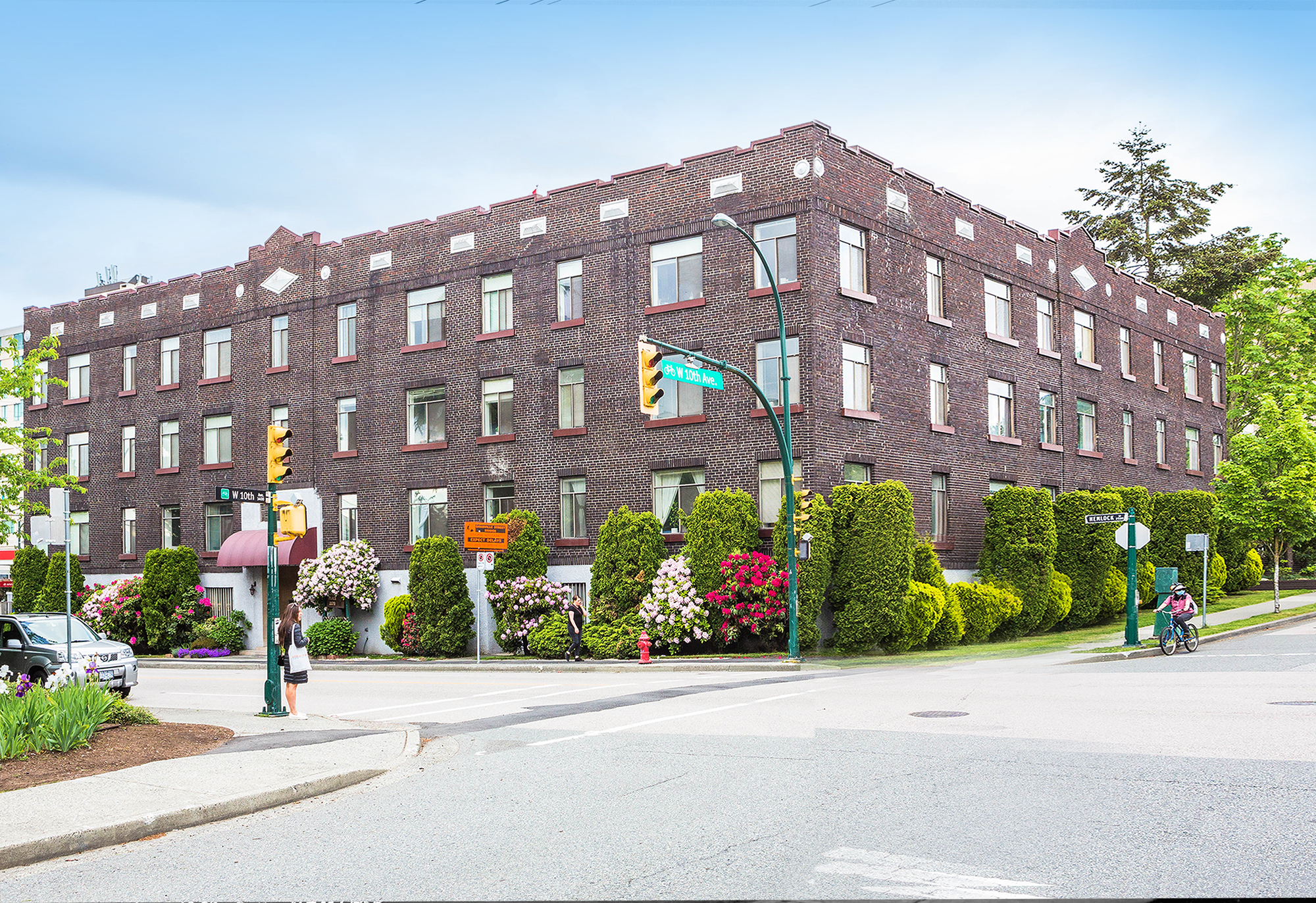
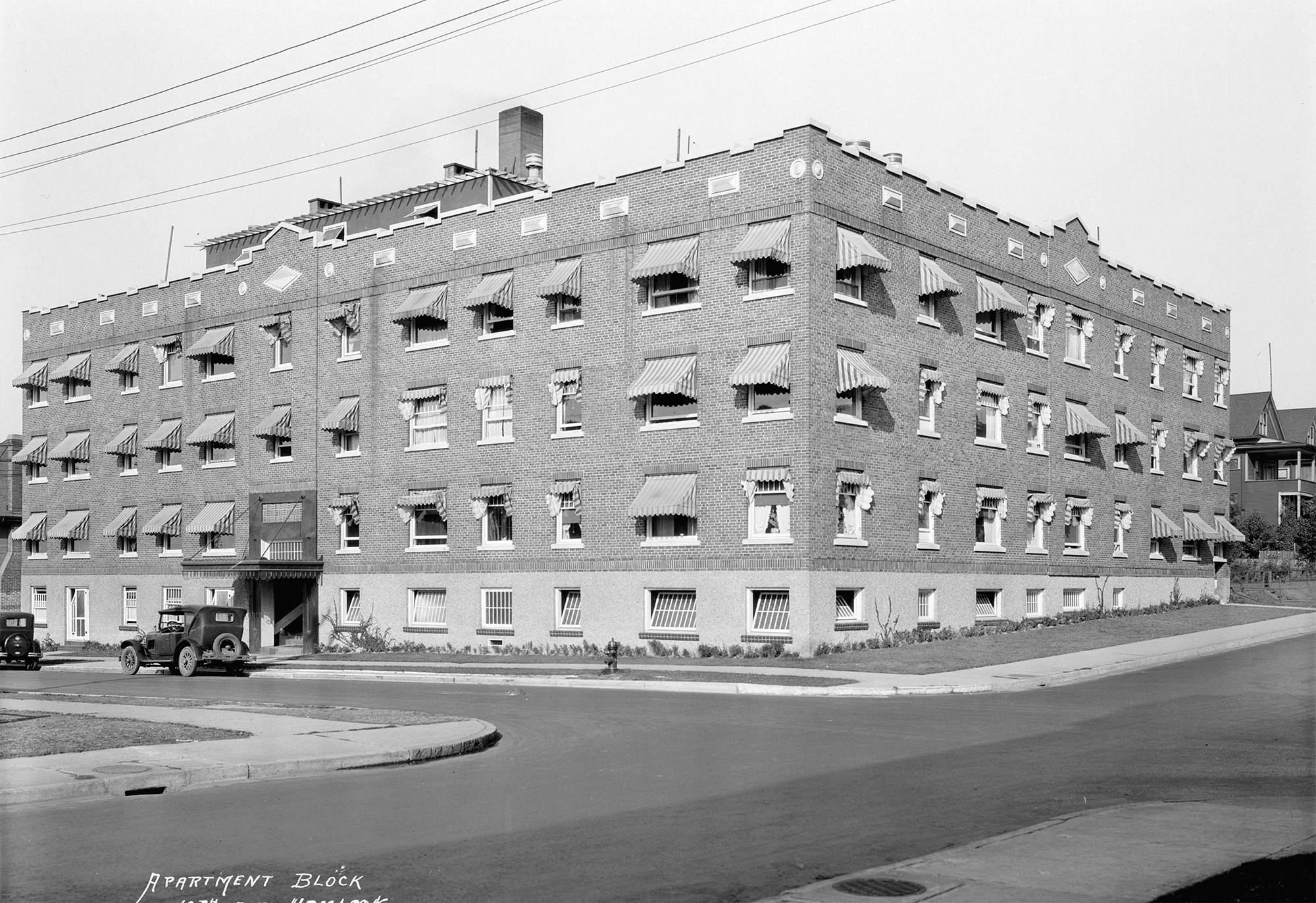
Granville and 10th, 1930 and 2020.
Originally a funeral home, and a big one at that. I’m not sure what the top two floors are now, but the street level is a fancy women’s clothing store.
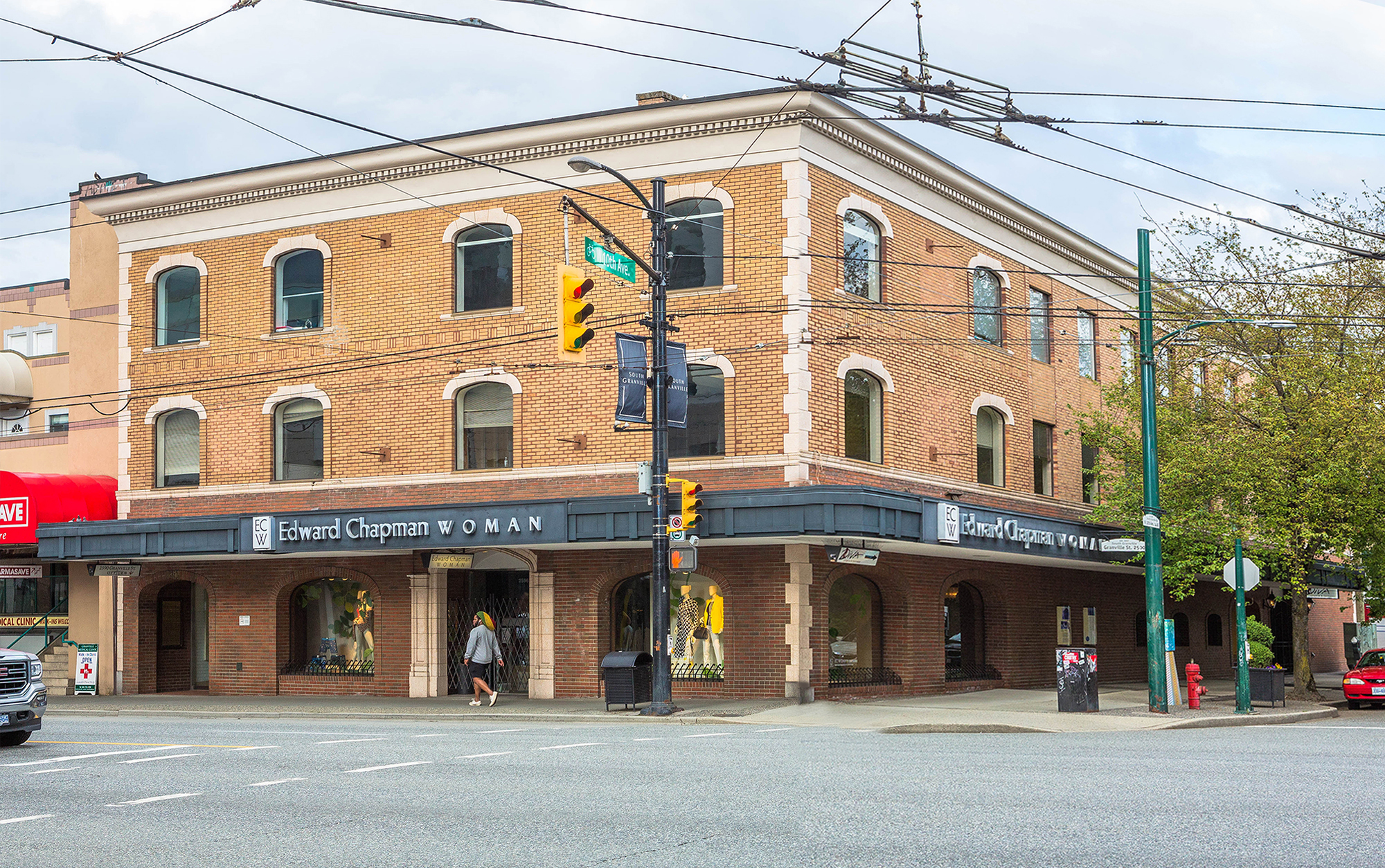
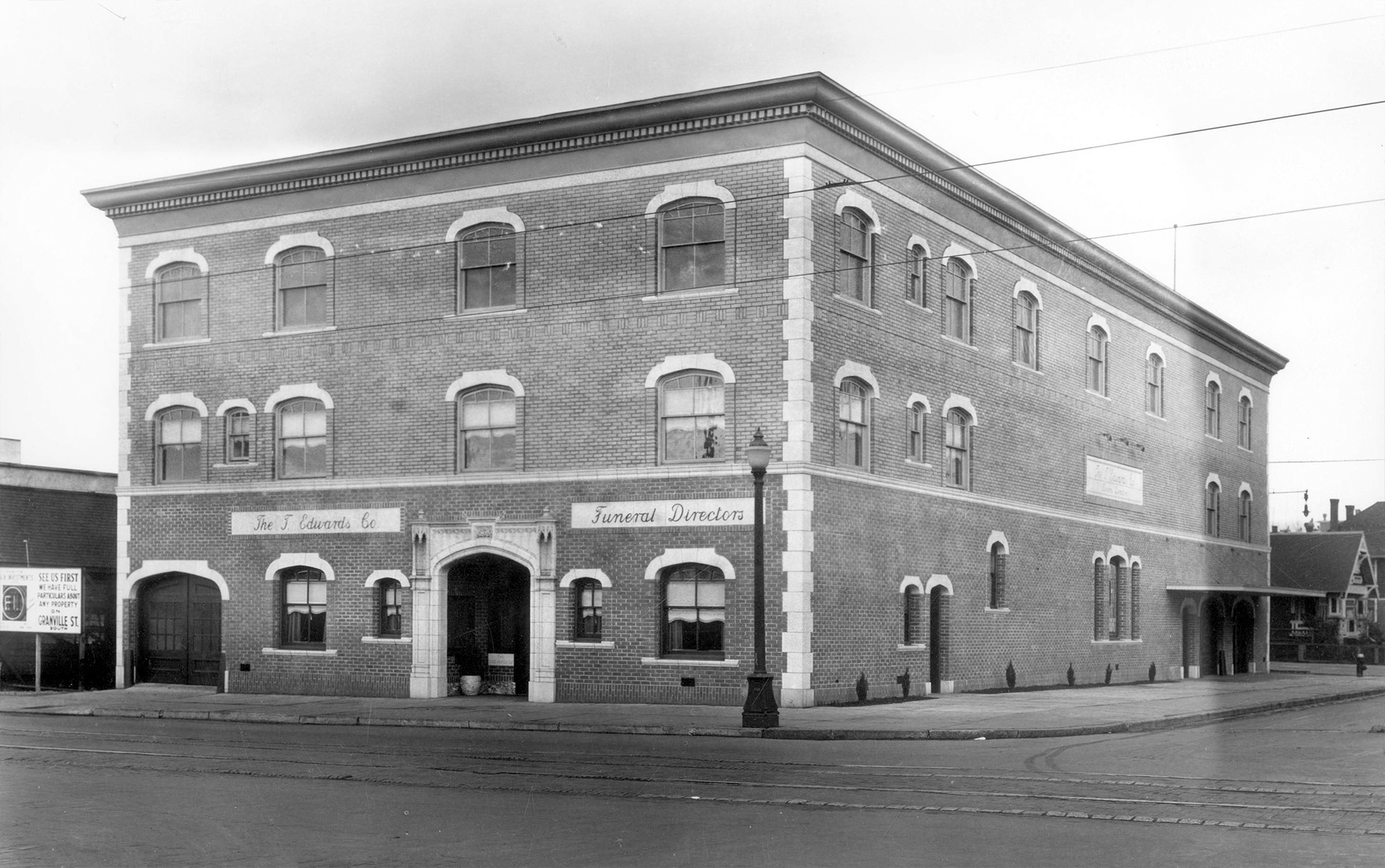
Added May 18, 2020.
A side note: One thing I’ve recently noticed is the lack of greenery in so many of the old pictures, even the ones into the mid-eighties. Many of the properties are almost totally barren of life. And as I mentioned above, in doing this project I have had countless photo opportunities ruined by trees and shrubs, so many that I’ve started a ‘winter’ folder of shots to remind me to go back when the leaves are gone. As much as I enjoy riding through the neighbourhood streets under a canopy of leaves, I rarely find a house that is totally exposed to the streets. Not that I’m complaining.
Granville Island Brewing, 1974 and 2000.
It wasn’t long ago that Granville Island was nothing more than an oil-soaked shanty town full of decrepit warehouses hidden under the Granville Bridge. I remember driving there in the early 1980s and getting stuck in the mud. Now it’s one of the city’s most popular destinations for both locals and tourists. Many old buildings remain, like this one. and there are some pretty exciting plans for the future.
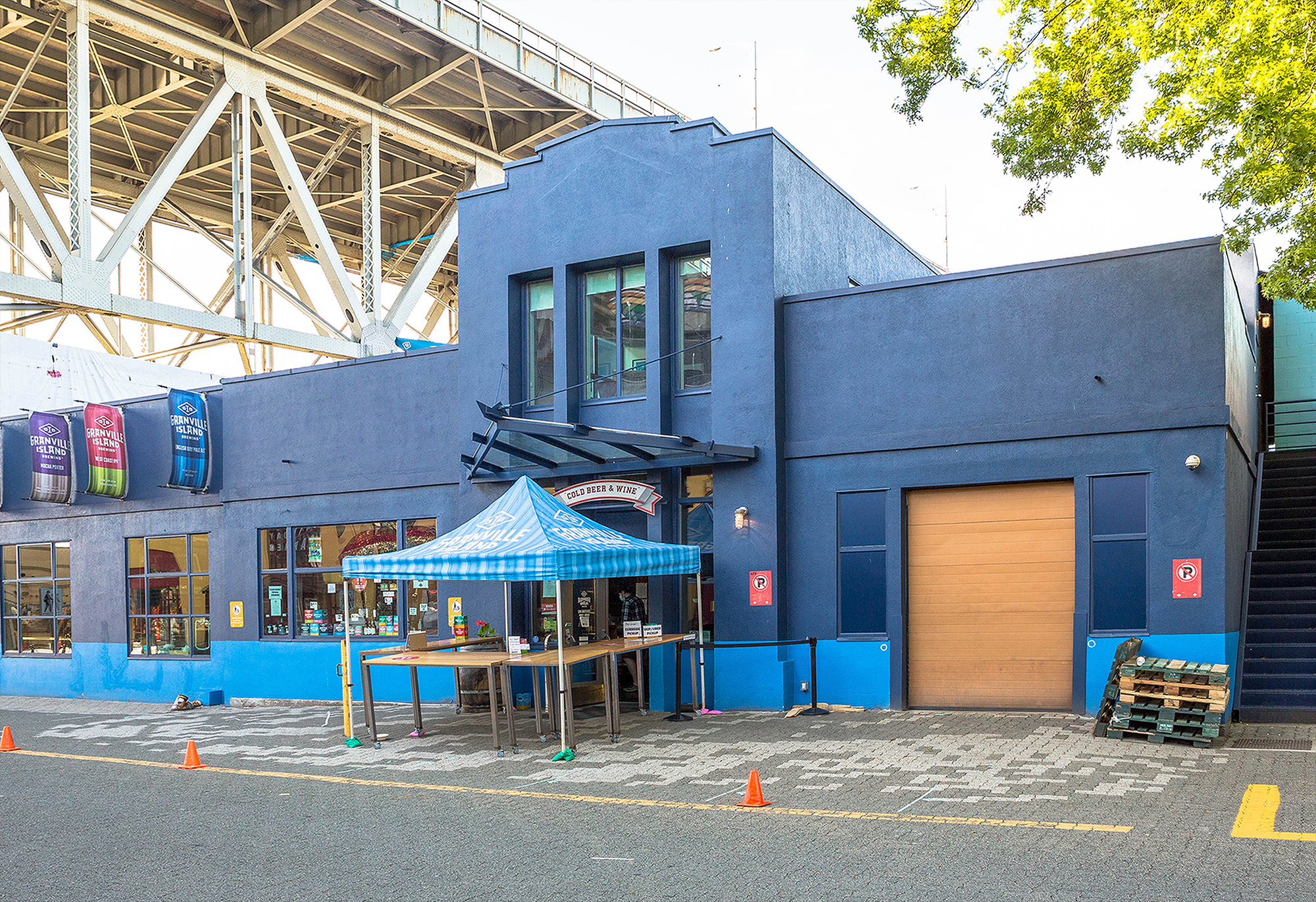
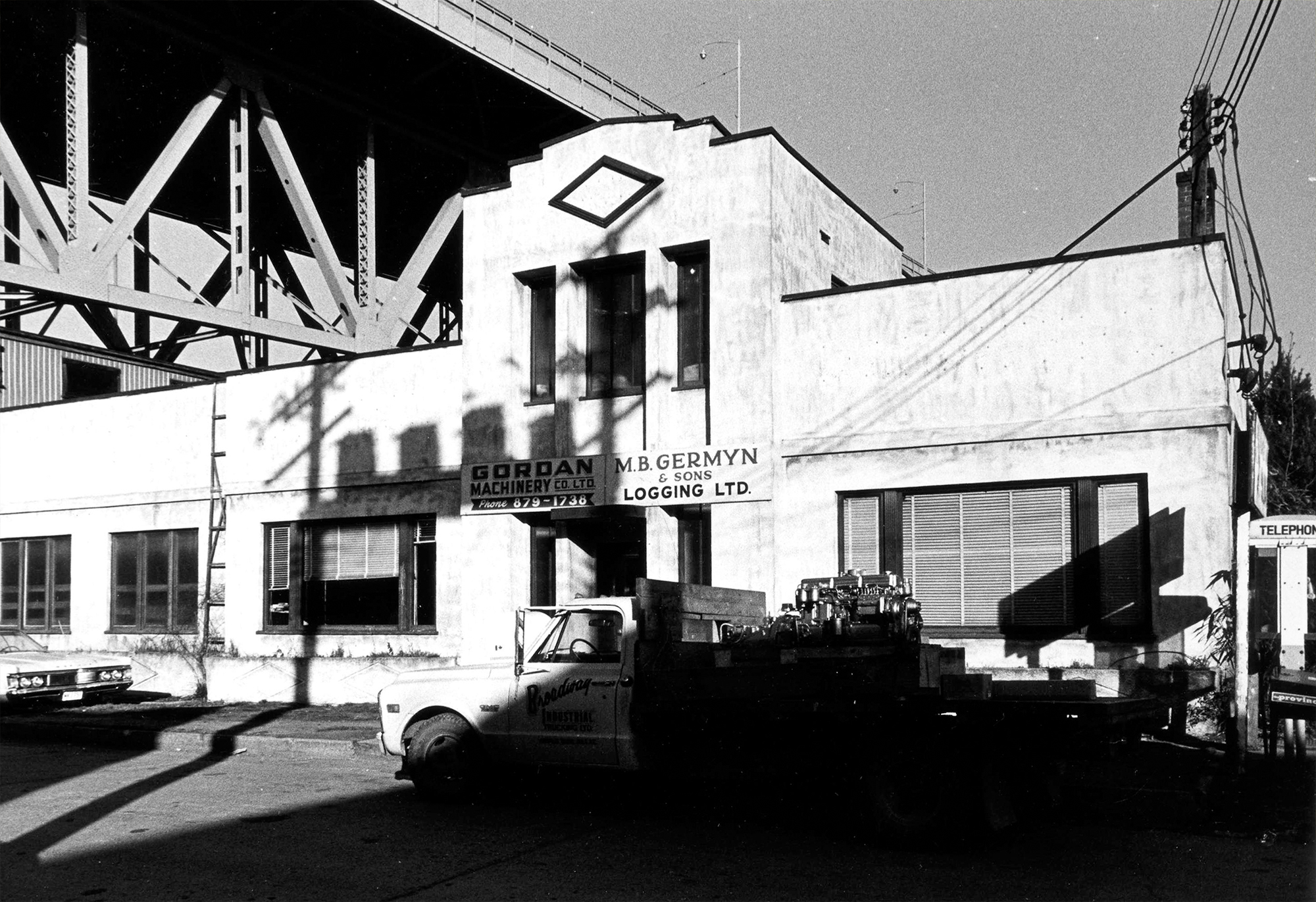
2818 Granville, 1928 and 2020.
You have to look pretty hard to see this 100-year-old house peeking over the shops on Granville Street. The website Vancouver As It Was tells an interesting story about feuding bookstores in the neighbourhood back when this picture was taken.
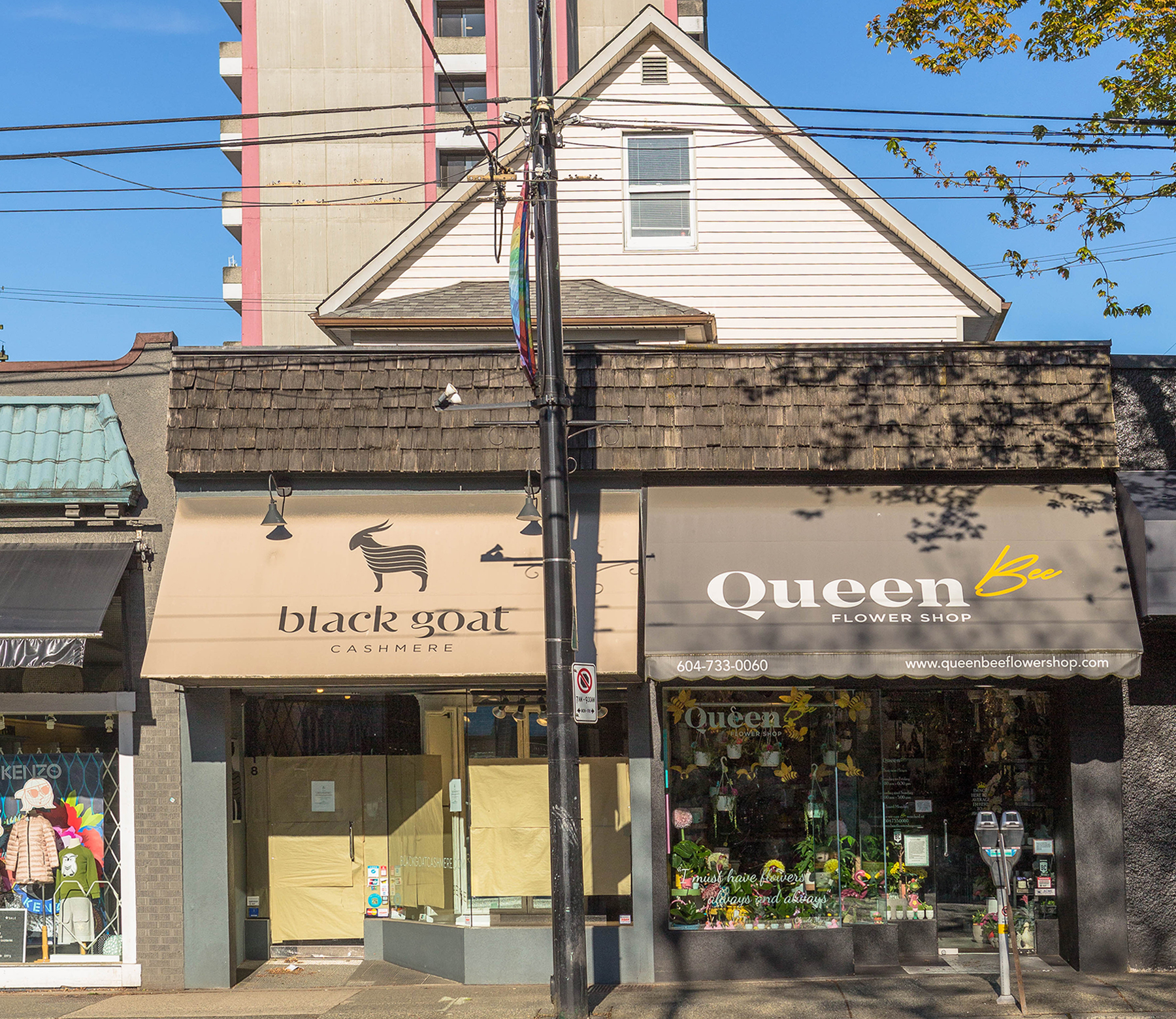
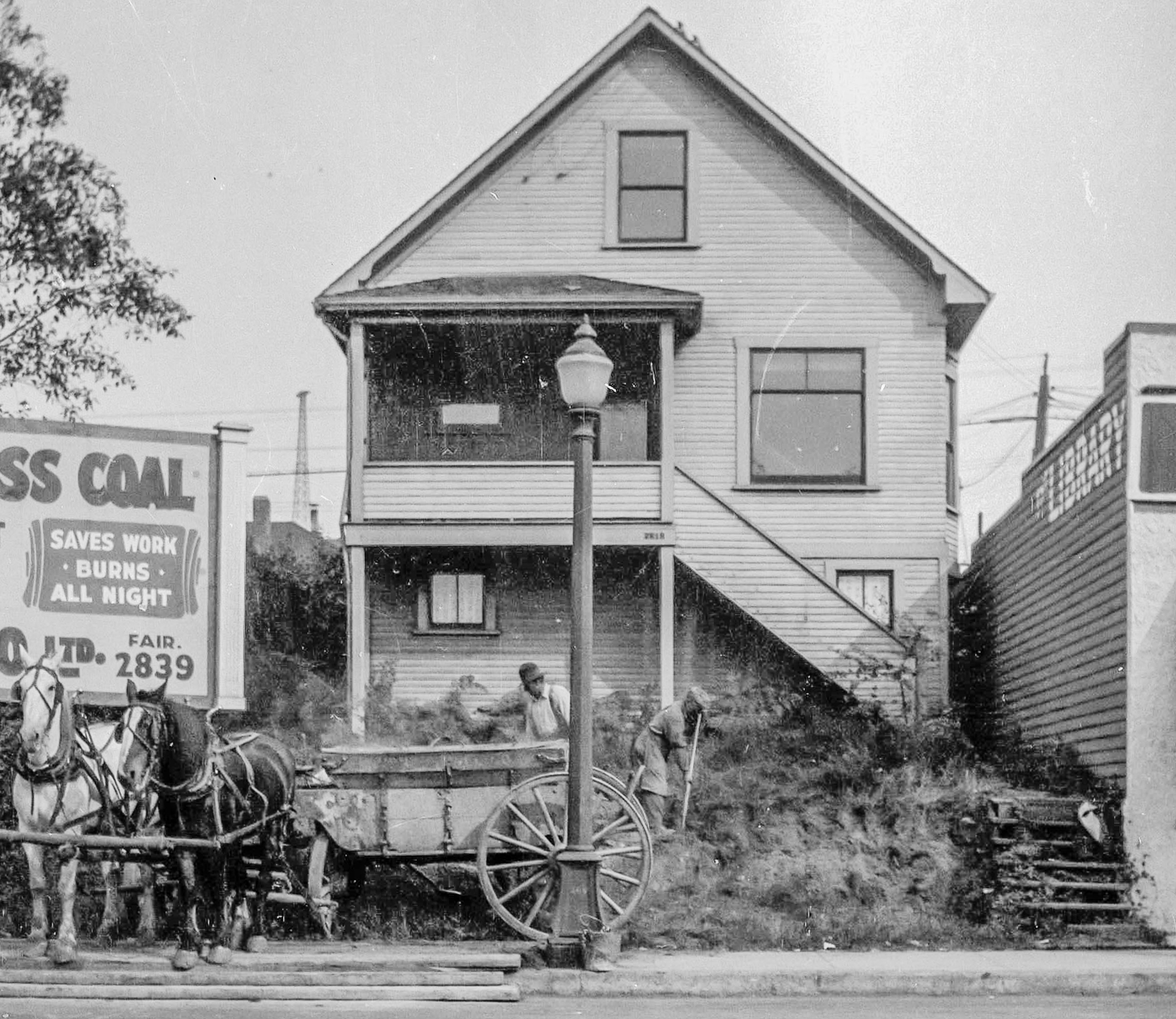
Added May 17, 2020.
Simon Fraser Annex, 1930 and 2020.
Built in 1929, this building is on the heritage watch list, as it has some architectural significance. Unfortunately its future has been the subject of some debate, as it sits on city-owned land that has been rezoned to increase density. Judging by the For Sale recently added, it’s days are numbered. (Use the slider to see the then and now pictures).

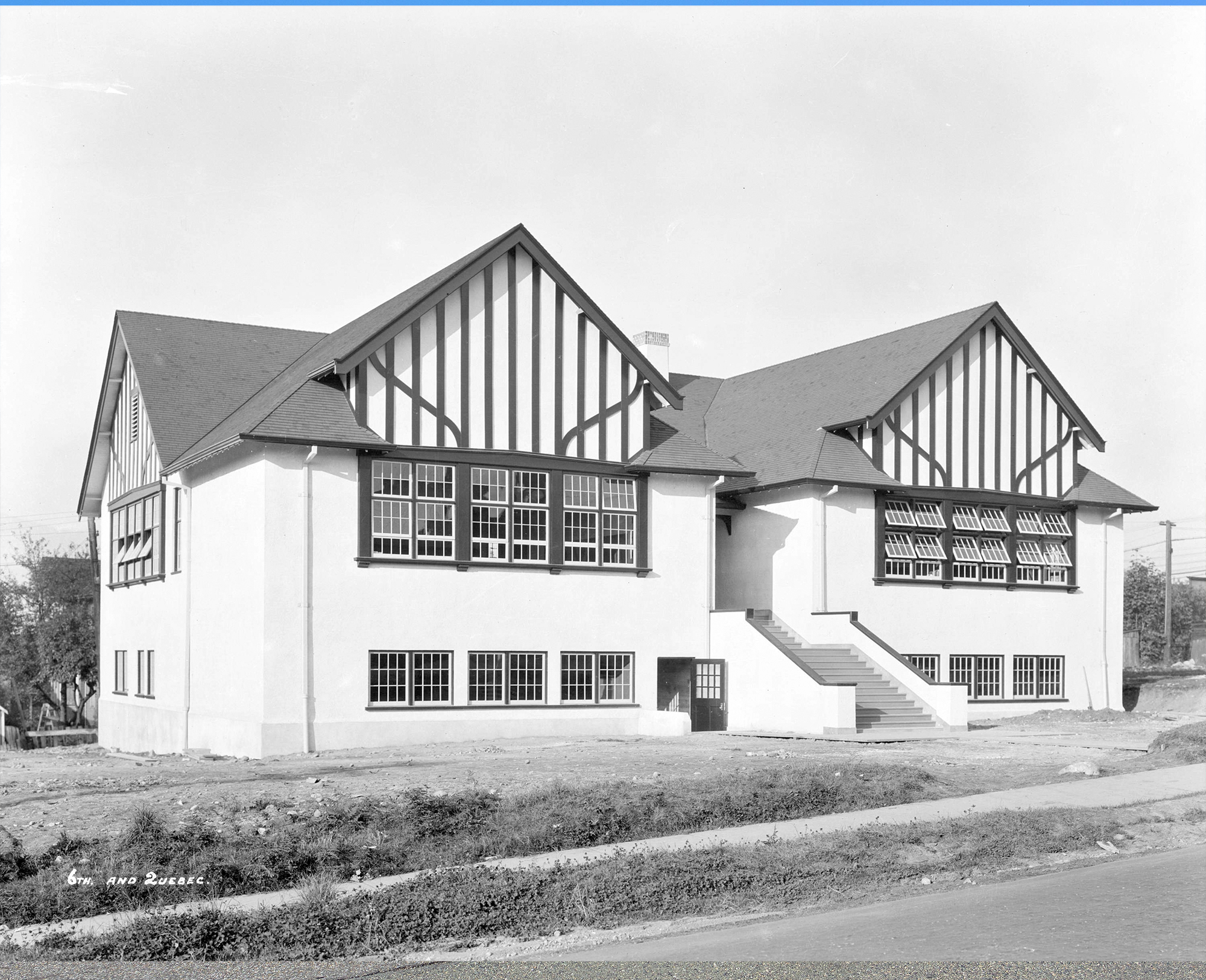
Quebec Manor Co-op, 1912 and 2020.
Well, the fancy cornice is gone and has been replaced by a looming crane, with others in the background. They’re everywhere! But this old beauty isn’t going anywhere. Here’s some background information on the owner, the builder, and its evolution to a co-op; a well-managed one by the looks of things.


Added May 16, 2020.
Heritage Hall, Mount Pleasant, 1917 and 2020.
This towering Main Street landmark was originally built in 1915 as the south Vancouver post office. Its ornate (by Vancouver standards) design is described in detail here. The original photo was taken from above street level, so the shots don’t line up as well as some of the others.
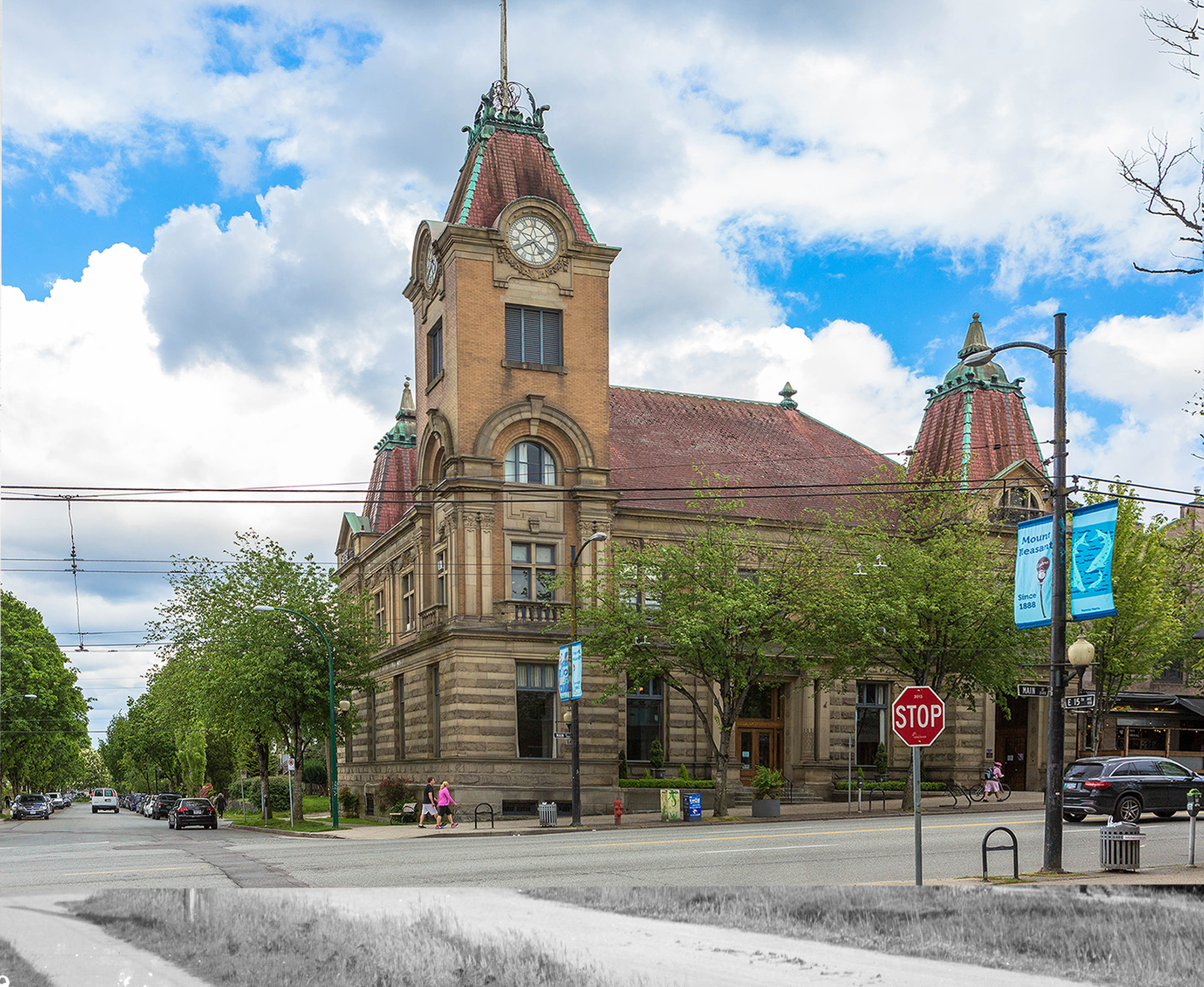
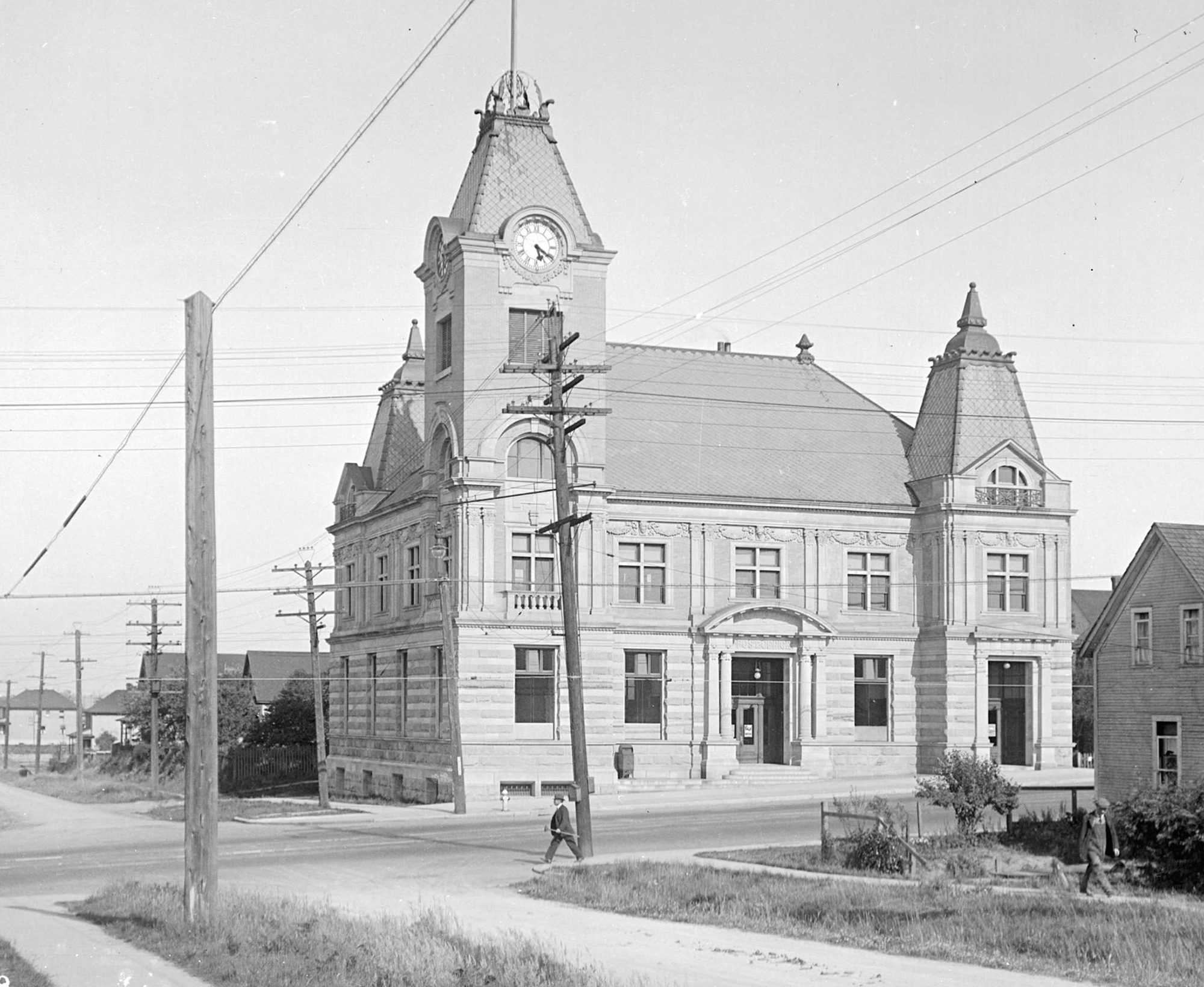
Clarendon Hotel, 1908 and 2020.
In 1907, the year this hotel was built, the 900 block of Main Street was a popular stop for people coming from New Westminster and the US to the busy port of Vancouver. It’s one of a small group of buildings that owe their existence to the fortunes of the Klondike Gold Rush. In between the two pictures below, the Clarendon changed its name to the American Hotel, and it became known for drugs and violence. A recent renovation has made it a popular destination for burgers and beer.
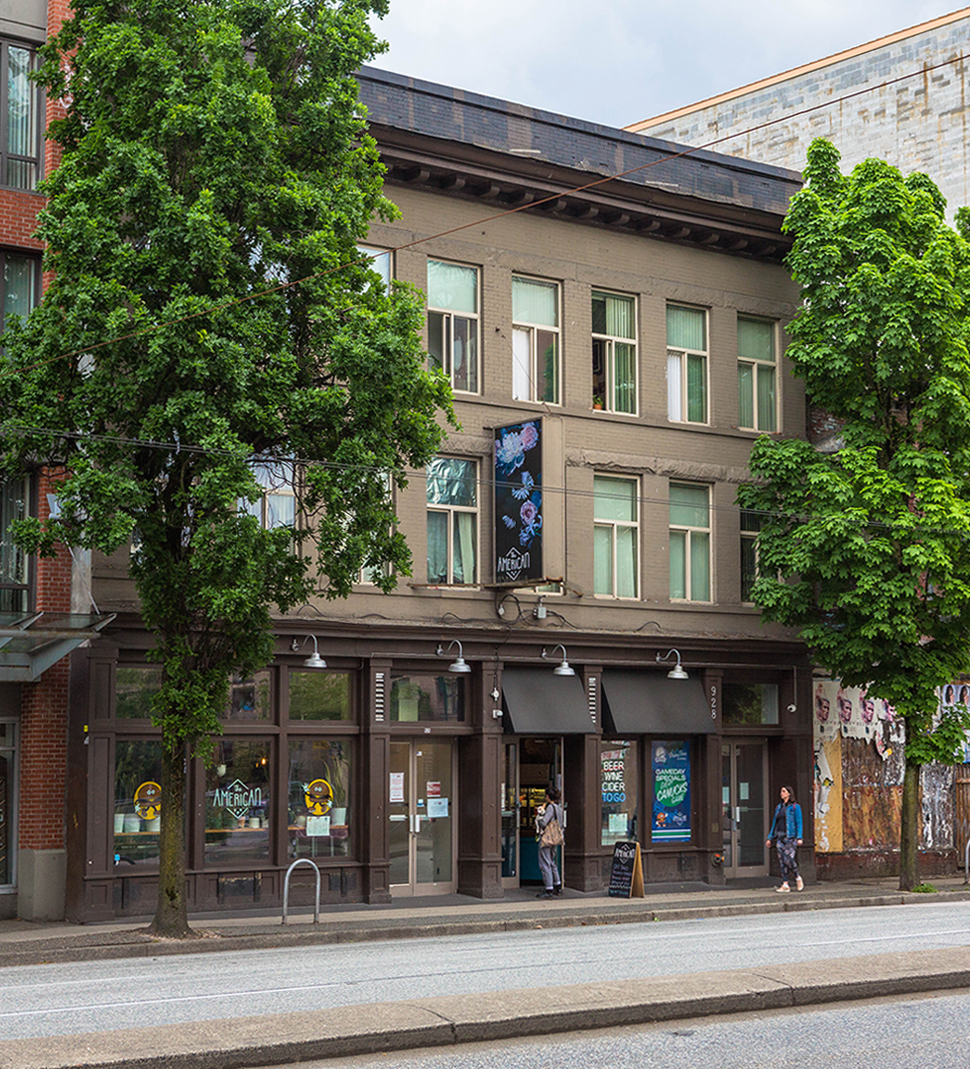
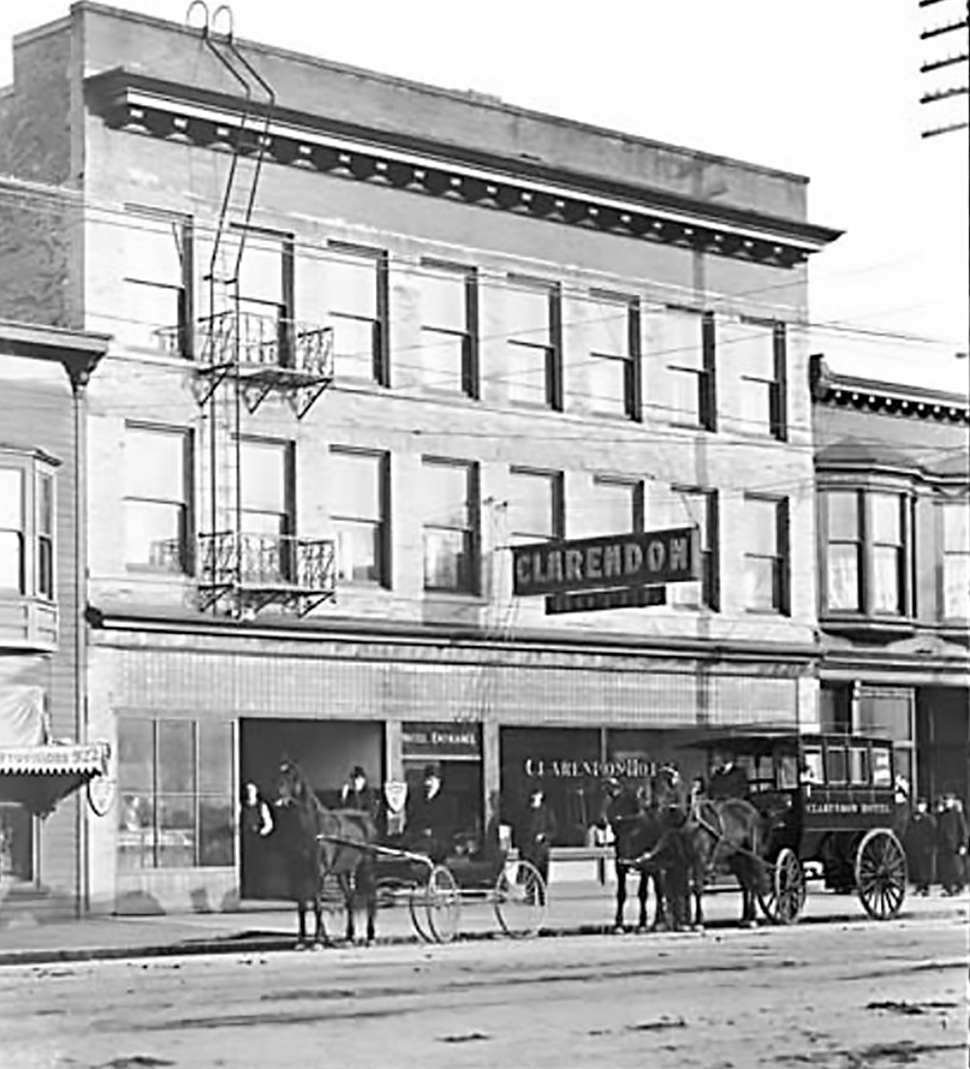
Added May 13, 2020
Arbutus Coffee, 1978 and 2020.
Built in 1907 and originally called the Eureka Grocery, the neighbourhood grocery store was conveniently located next to the interurban rail line that ran to Steveston. Those train tracks became a popular bike path a few years ago, and lots of cyclists now stop here for coconut water and home-made cranberry flax muffins.
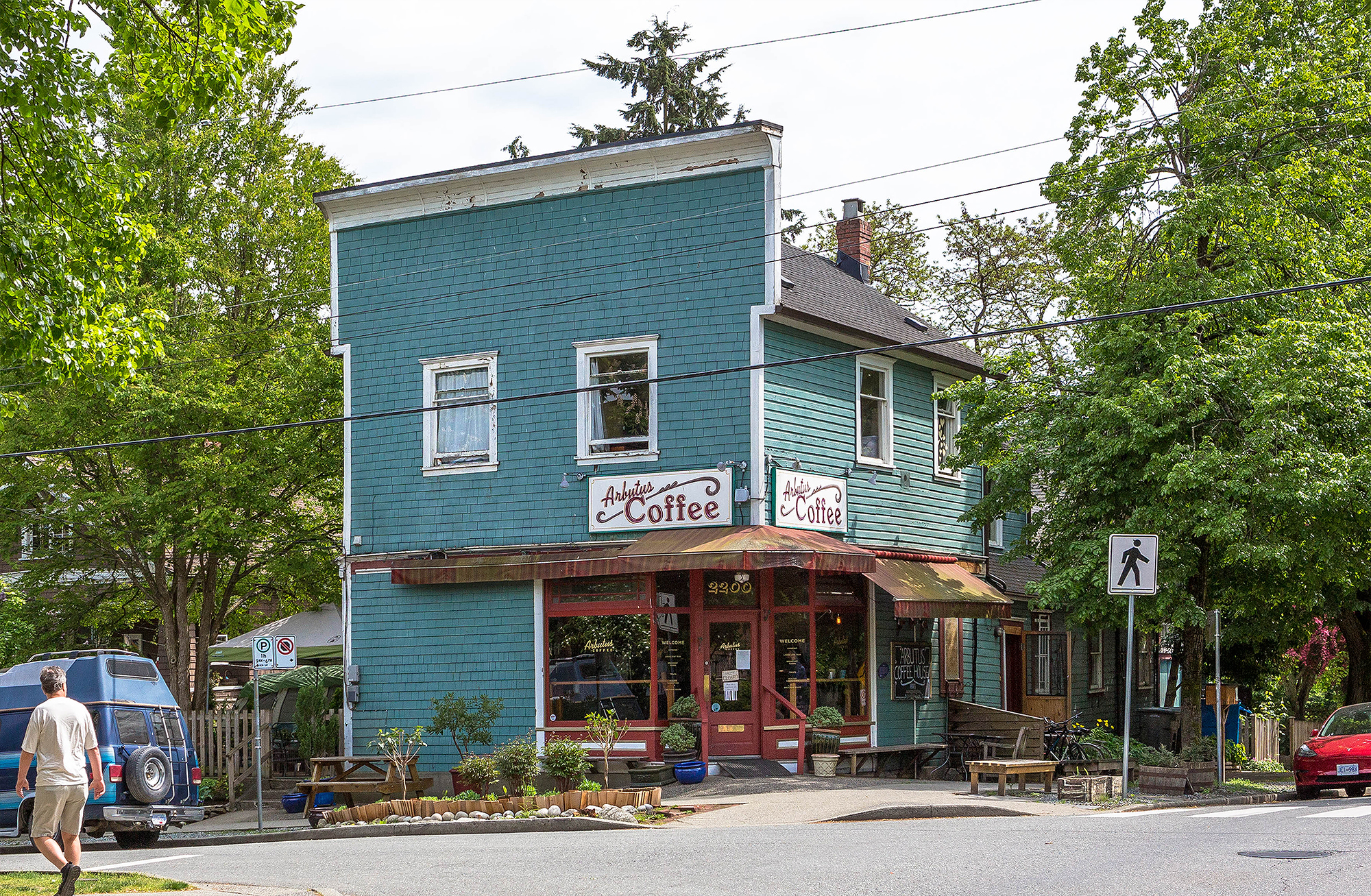
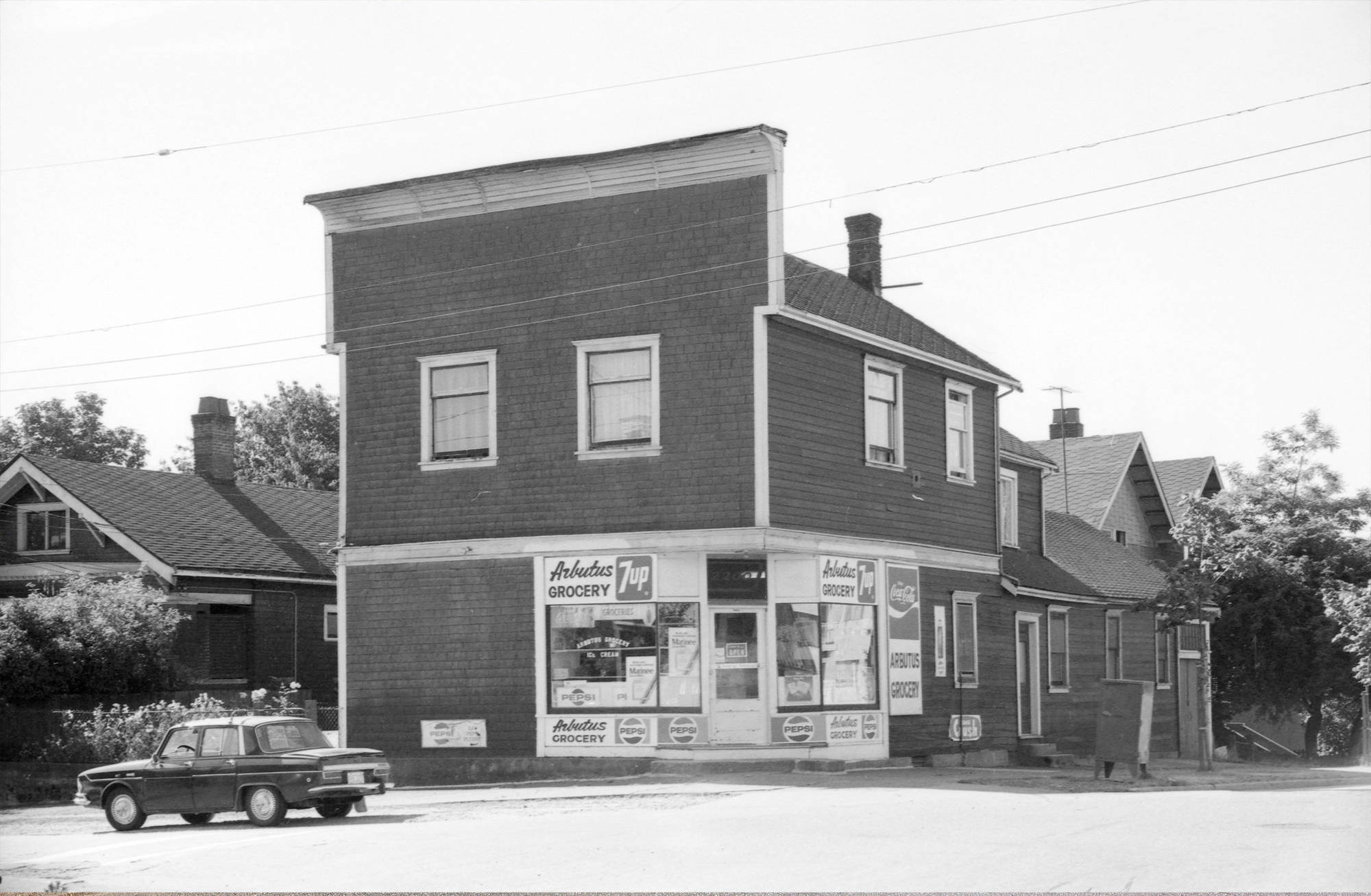
Japanese School, 1929 and 2020.
Built to educate the children of Japanese immigrants who came here in the late 1800s, the building is now a national historic site. The treatment of people of Japanese descent was pretty heartless during World War II, as property was seized and families forced into internment camps. This property is the only asset that was returned to the Japanese community after the War.
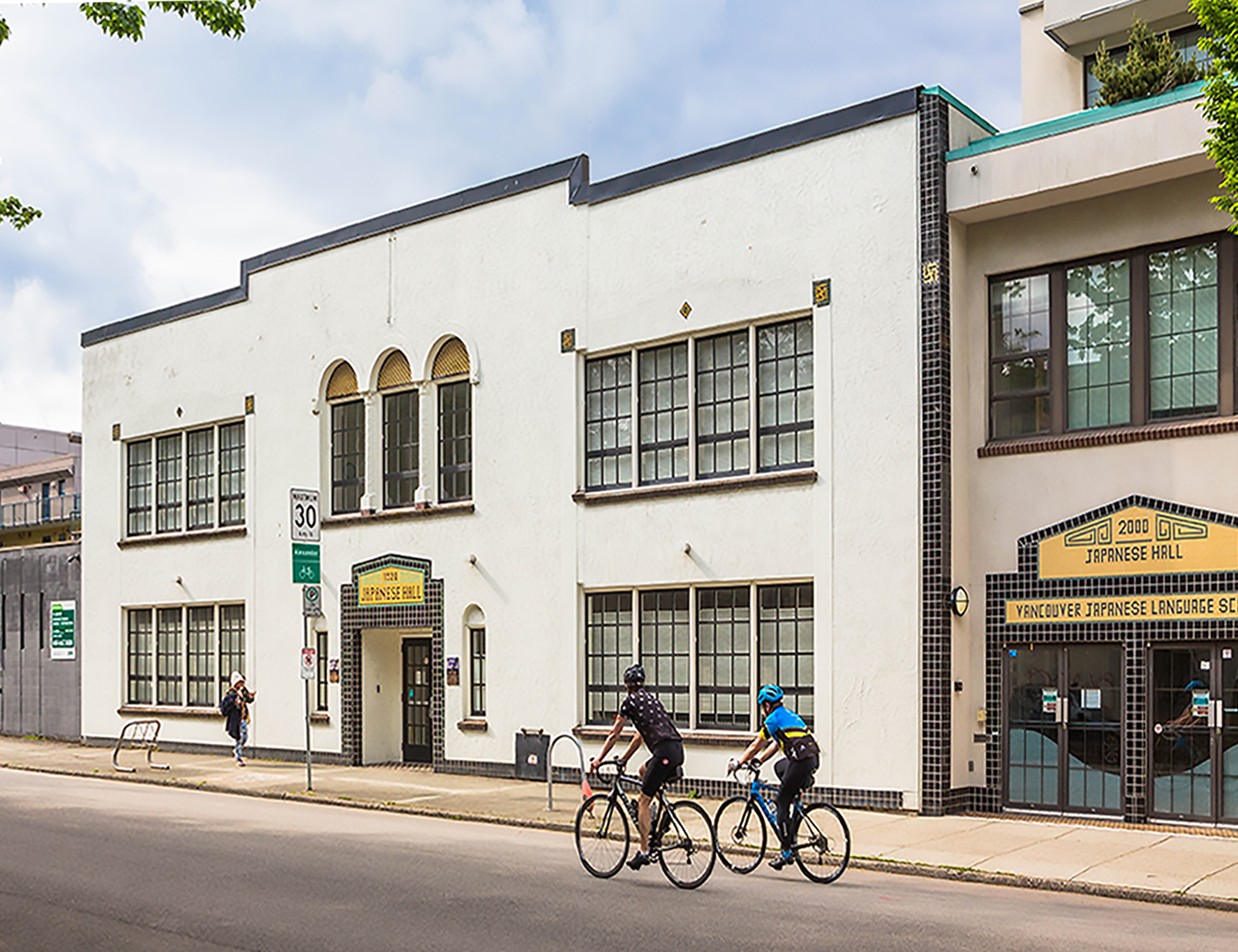
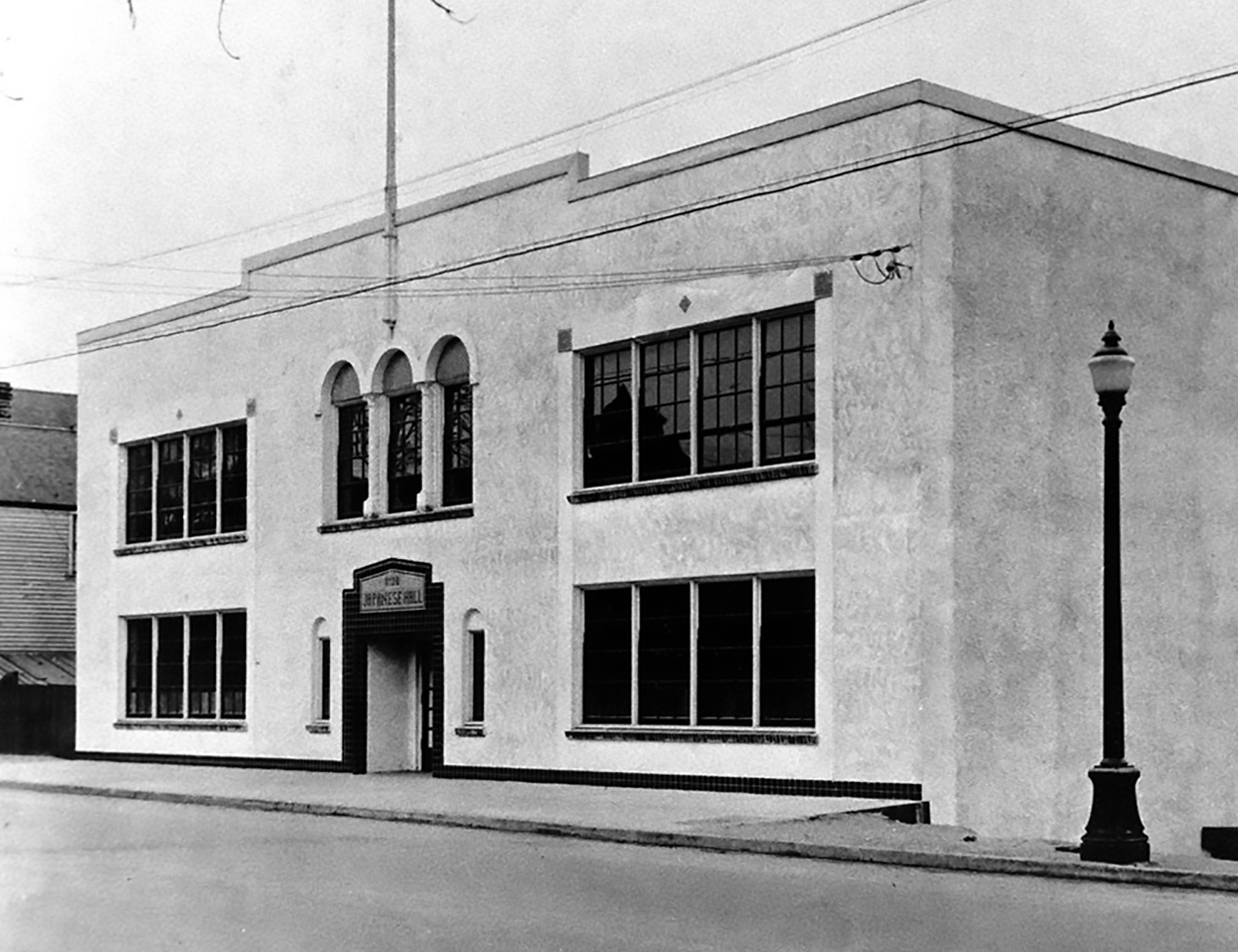
Helen’s Grocery, Kitsilano, 1978 and 2020.
I can’t find anything on the history of this store, but it’s still in business, and it’s right up the street from me. The building looks like it could date from the 1920s based on the style but that’s just a guess.
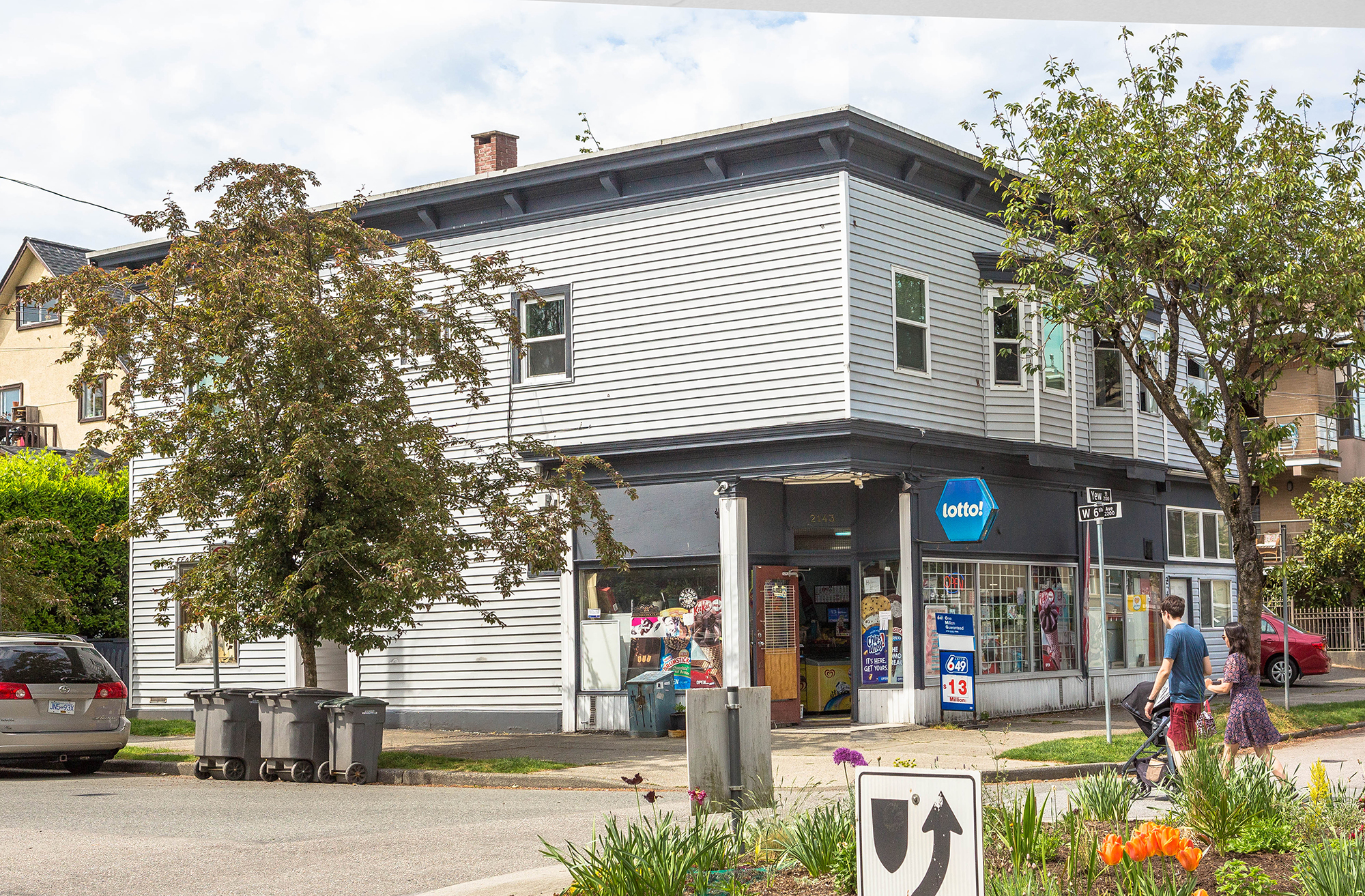
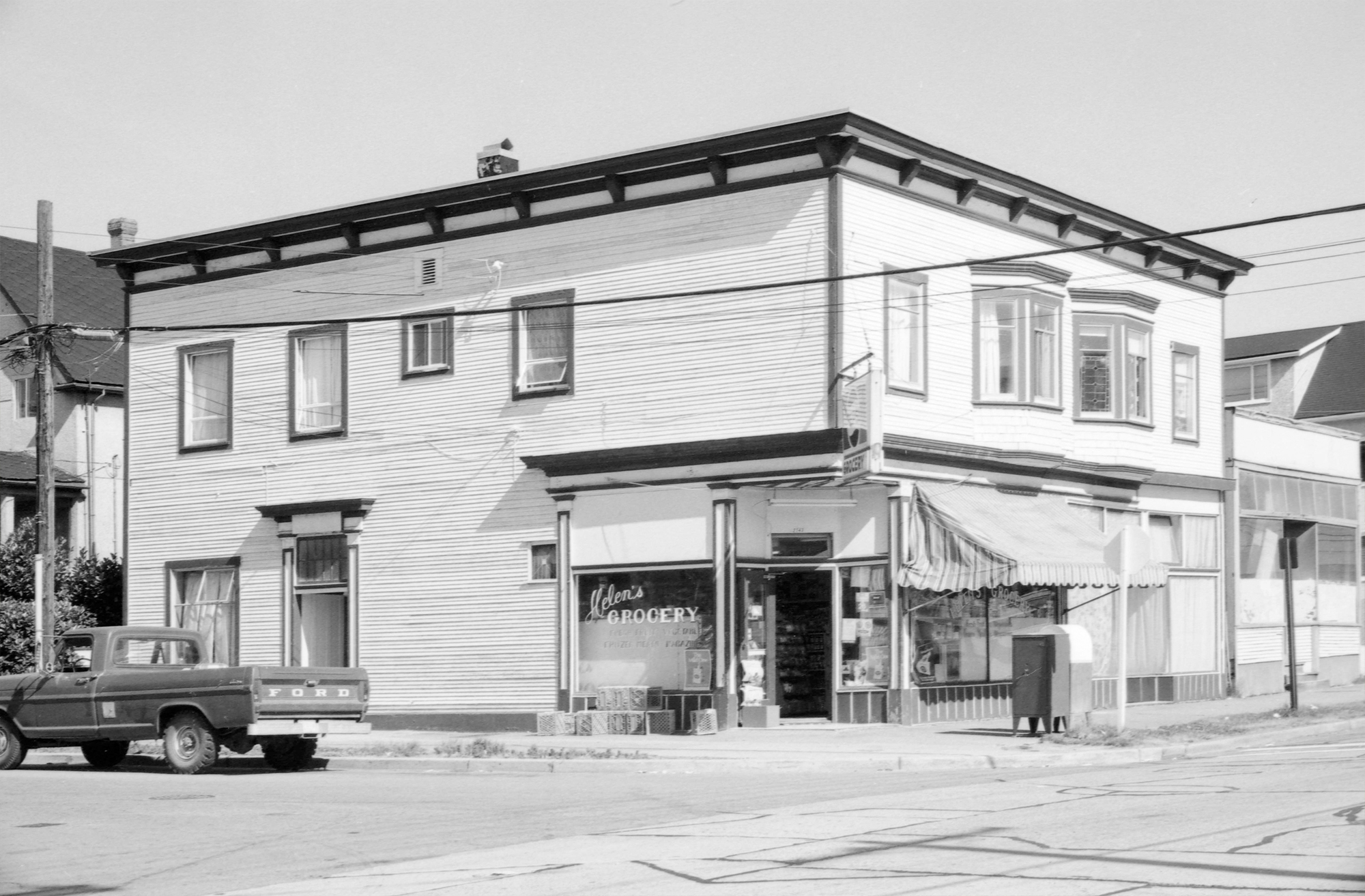
Added May 3, 2020
Jersey Farms delivers to the Bessborough Armoury, 1932 and 2020.
I’m old enough to remember glass bottles of milk appearing on our doorstep in the morning, with a couple inches of cream at the top. I don’t remember horse drawn milk trucks though.
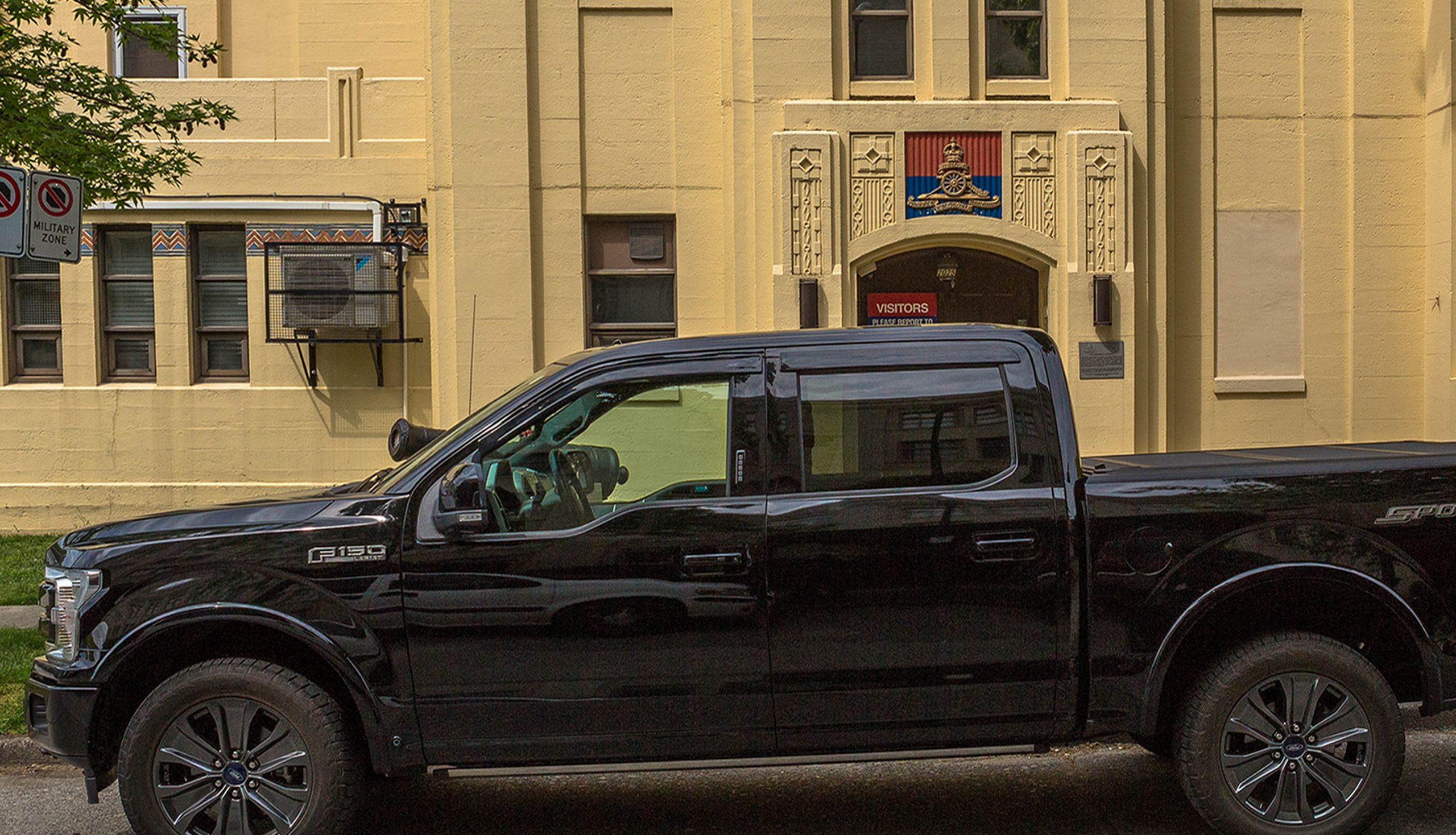
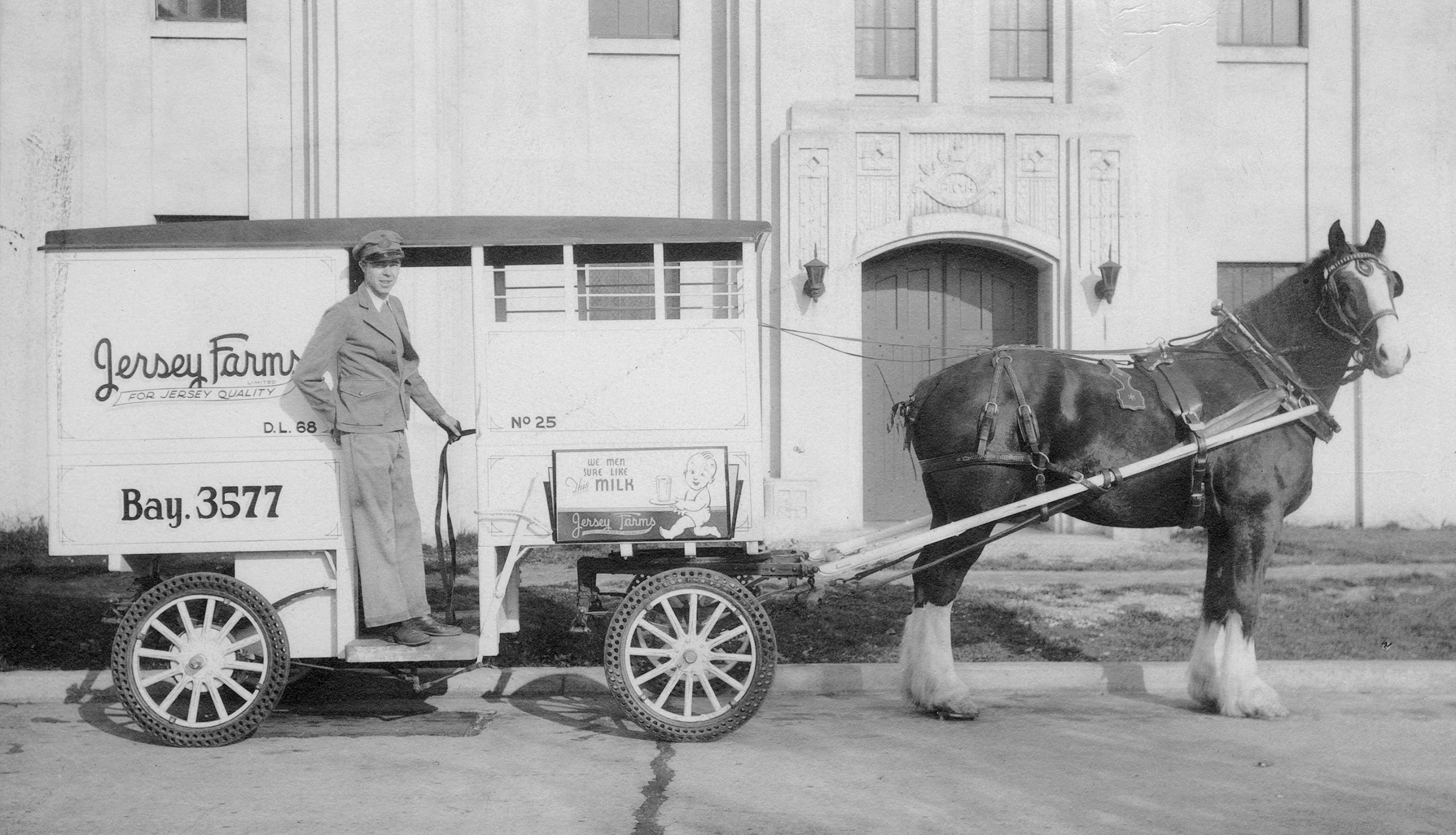
Bessborough Armoury, 1933 and 2020.
This picture was taken the year the Armoury was built.
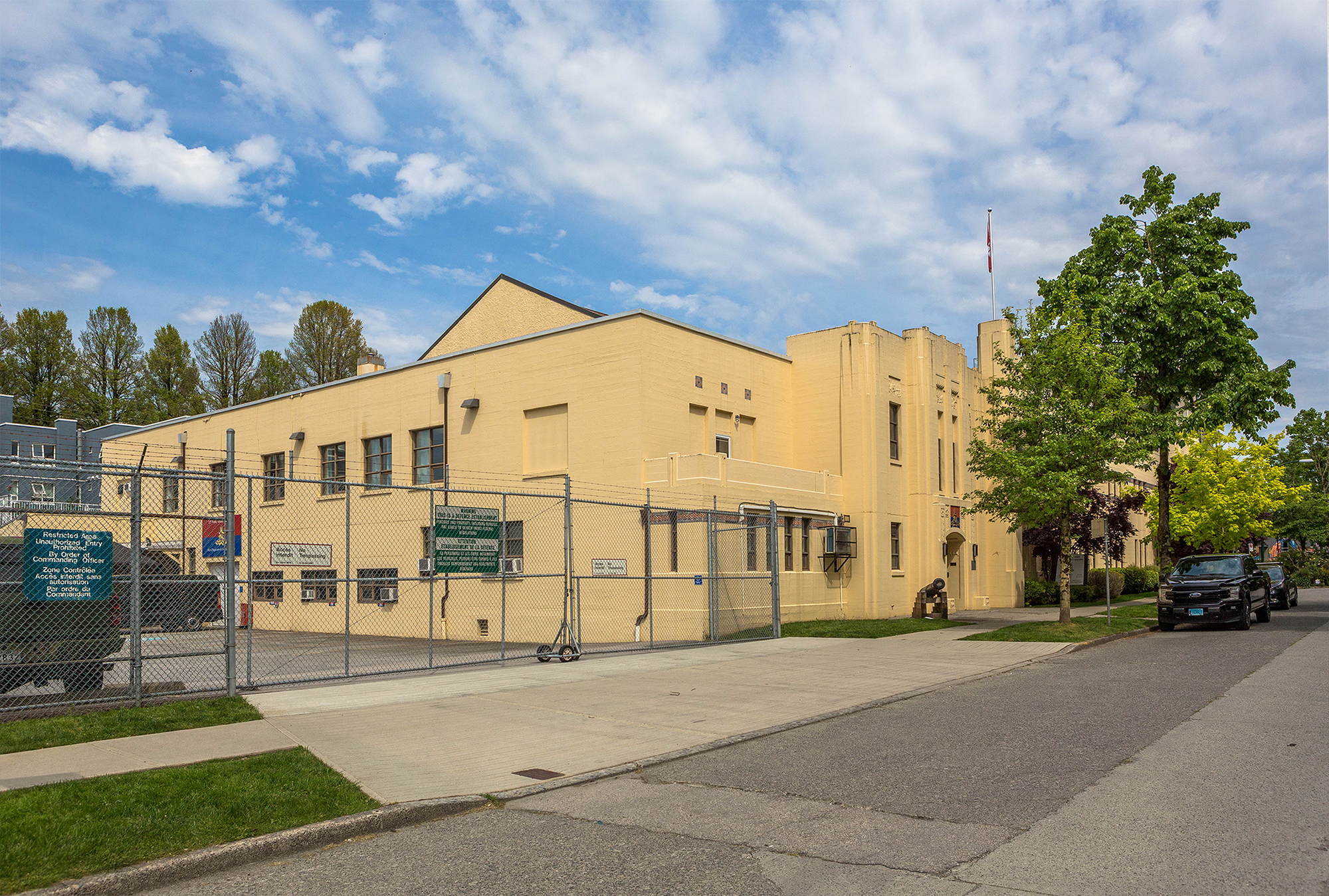
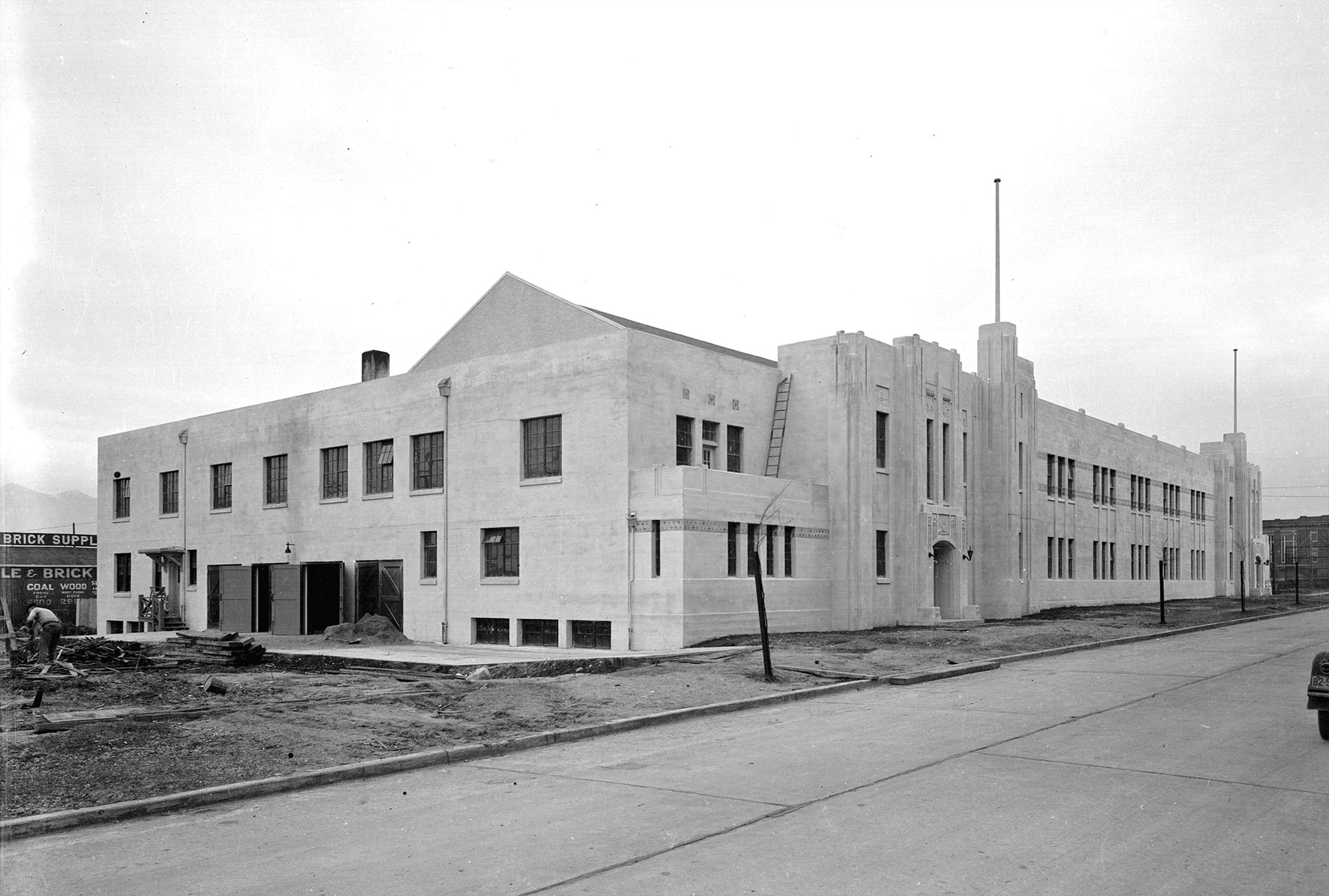
Seaforth Armoury, Burrard Street, 1936 and 2020.
Home of the legendary Seaforth Highlanders, whose exploits are well documented here. There are also lots of great shots of the armoury before, during and after construction.
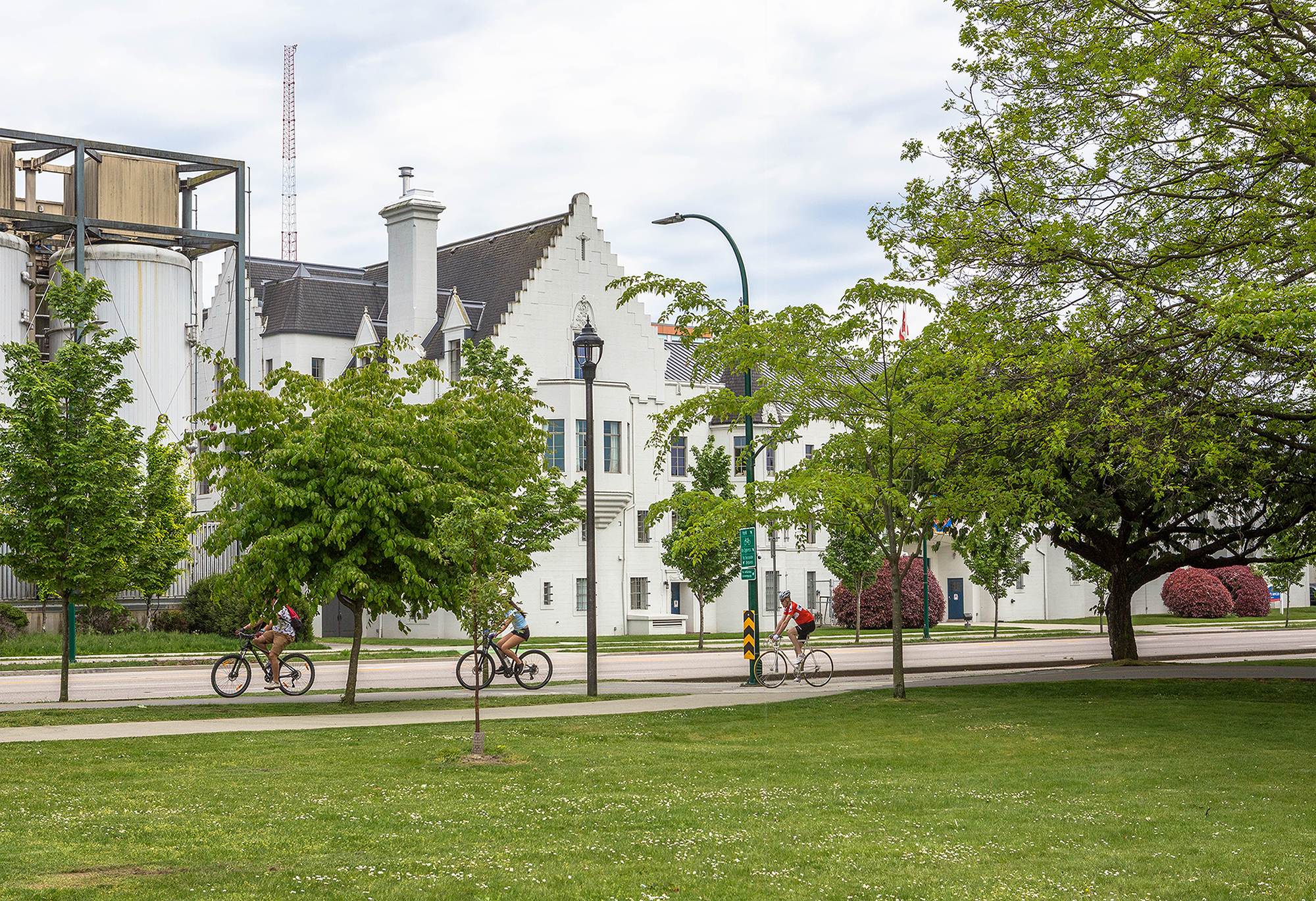
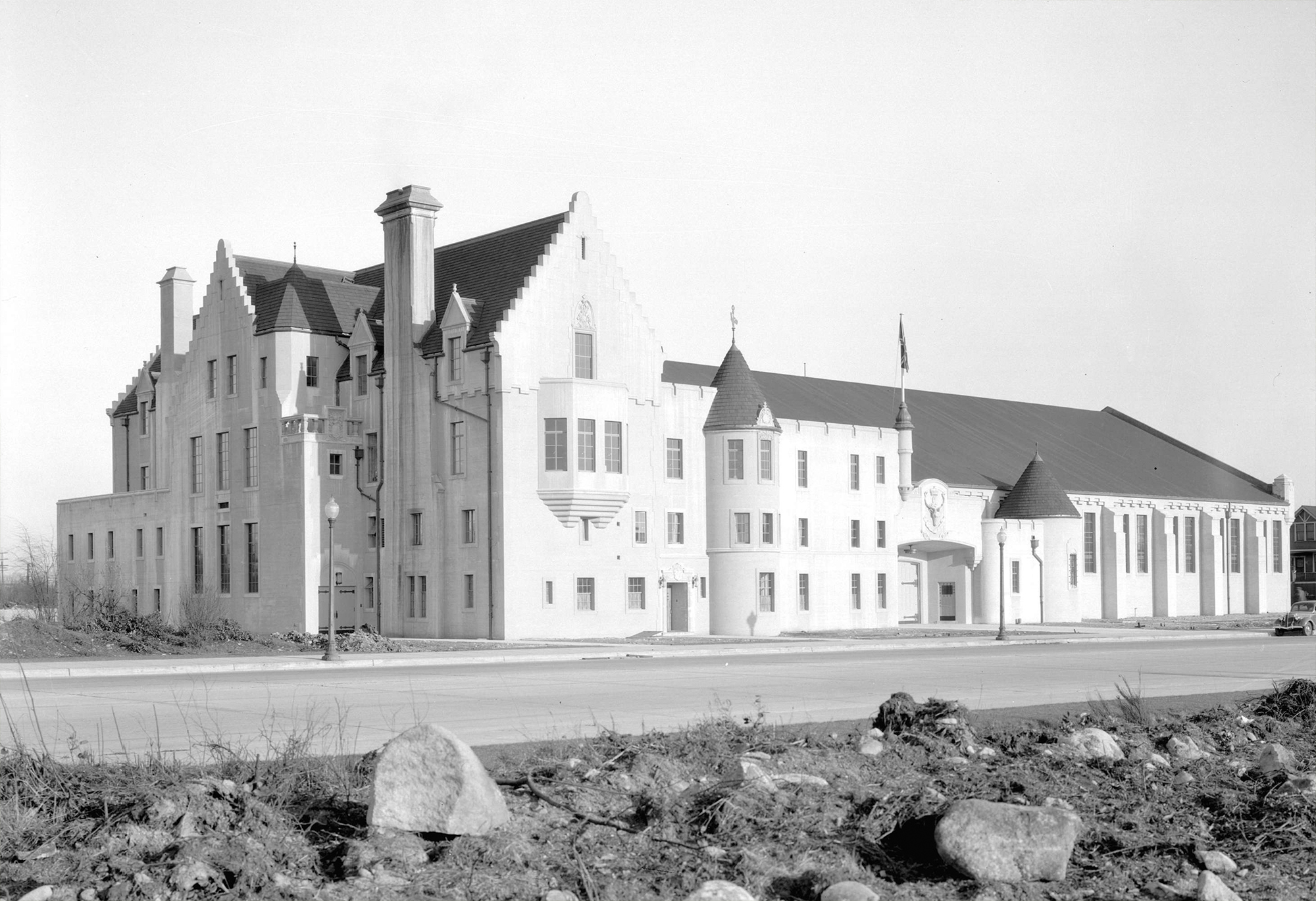
Added May 1, 2020.
Cardero Grocery, 1978 and 2020.
One of the West End’s first convenience stores, the Cardero Grocery closed in 2017 and it, along with the house next door, were sold to an investment company for around $4 million. Plans for the future are unknown, but the property, although designated by the City as having significant heritage value, is not legally protected from demolition. The houses were built in the early 1900s.
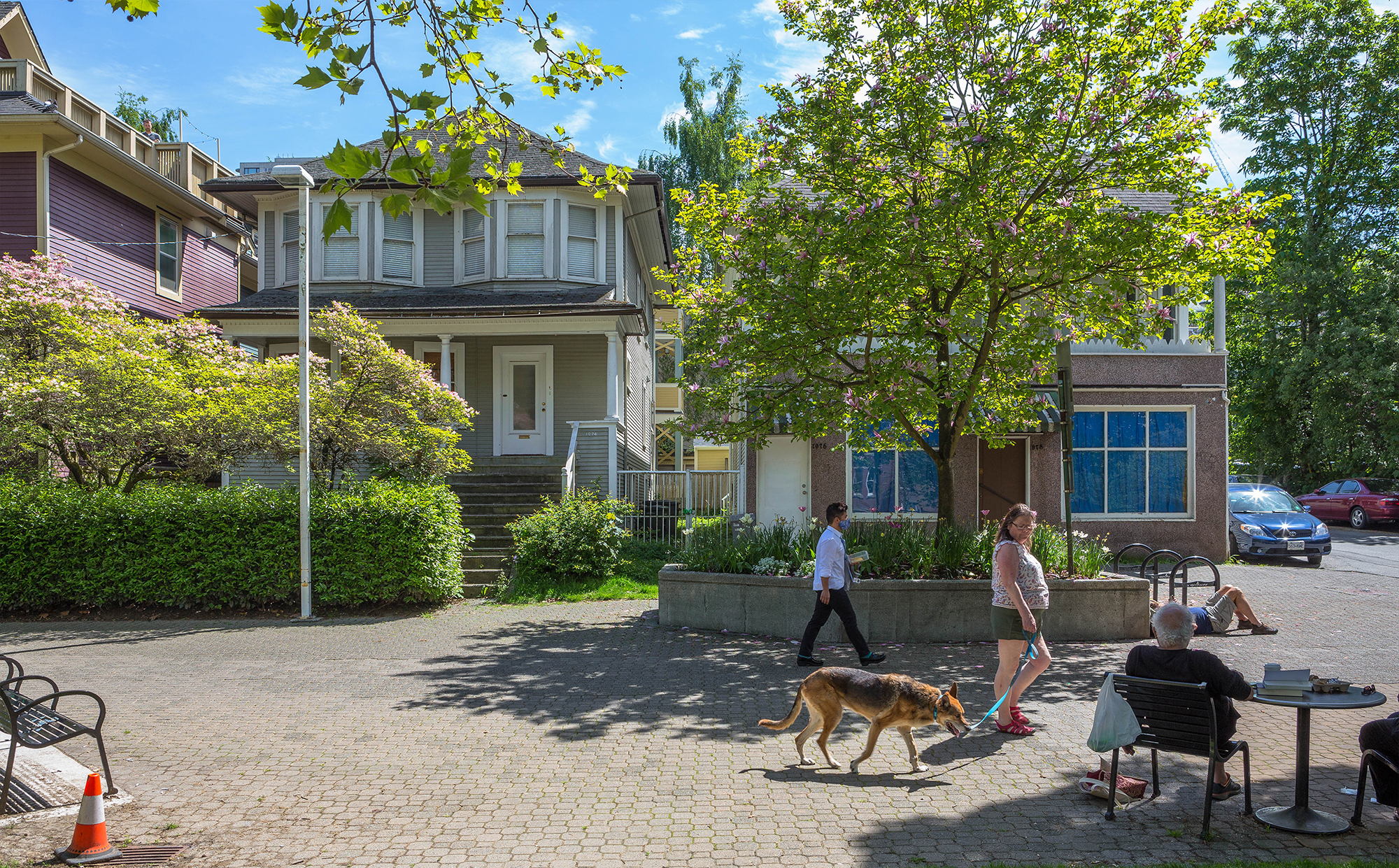
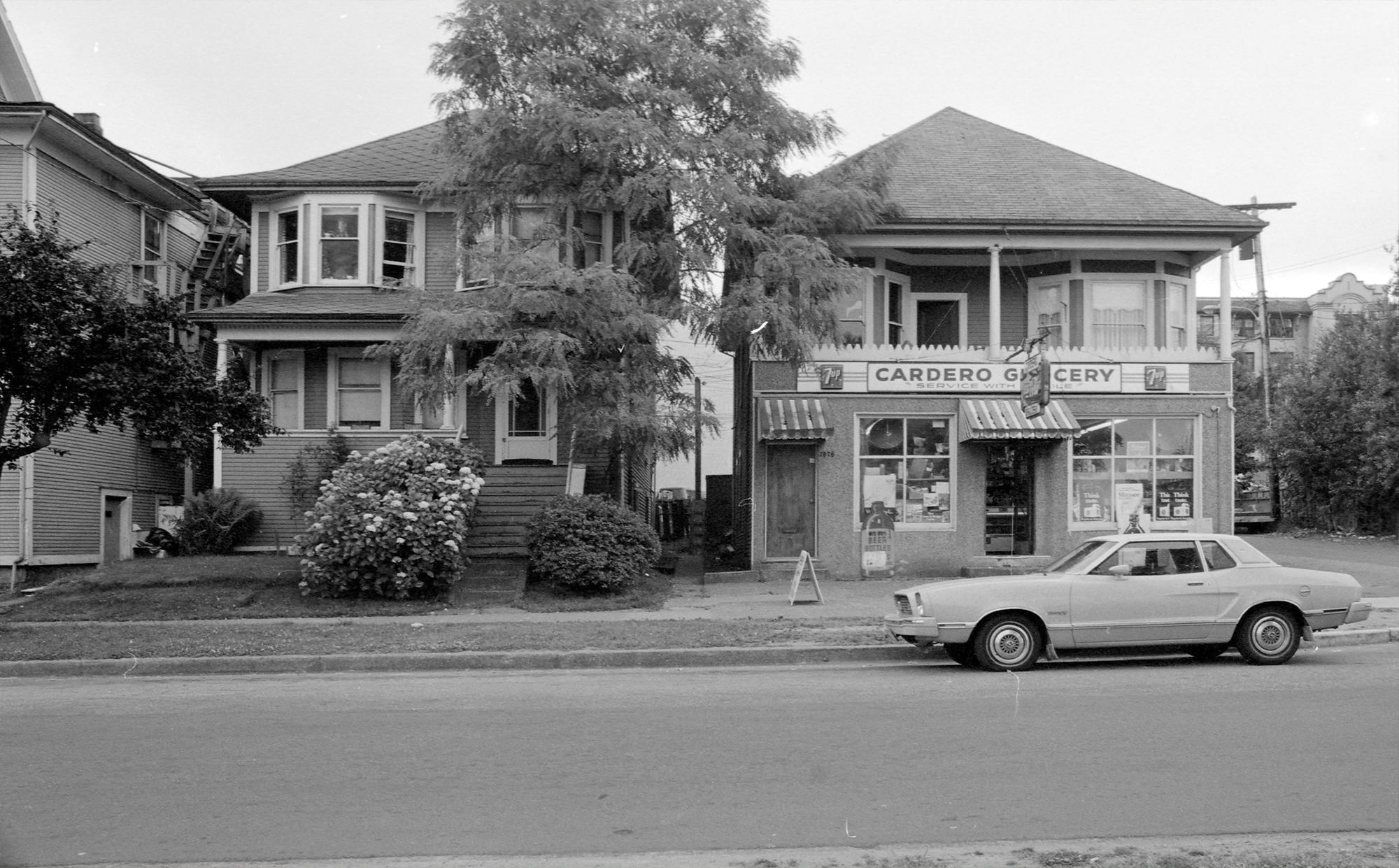
Little Cottage Confectionary and Grocery, 1960s and 2020.
I imagine a lot of love went into the transformation of this corner store into a beautiful home. It’s getting hard to find these little neighbourhood retail relics, although I recently came across a good trove of old photos so I’m going to focus for a while on finding the remaining ones in the City.
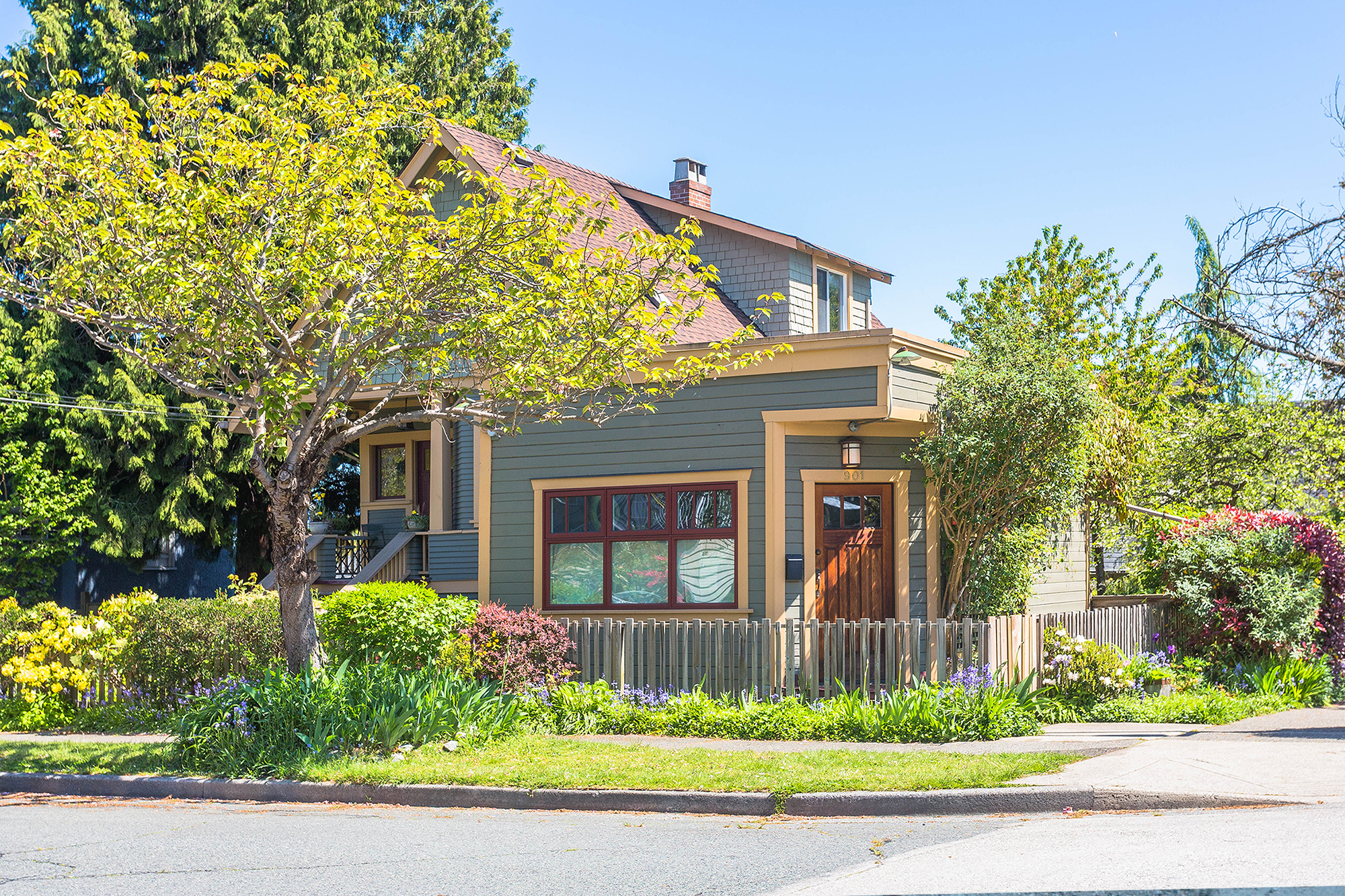
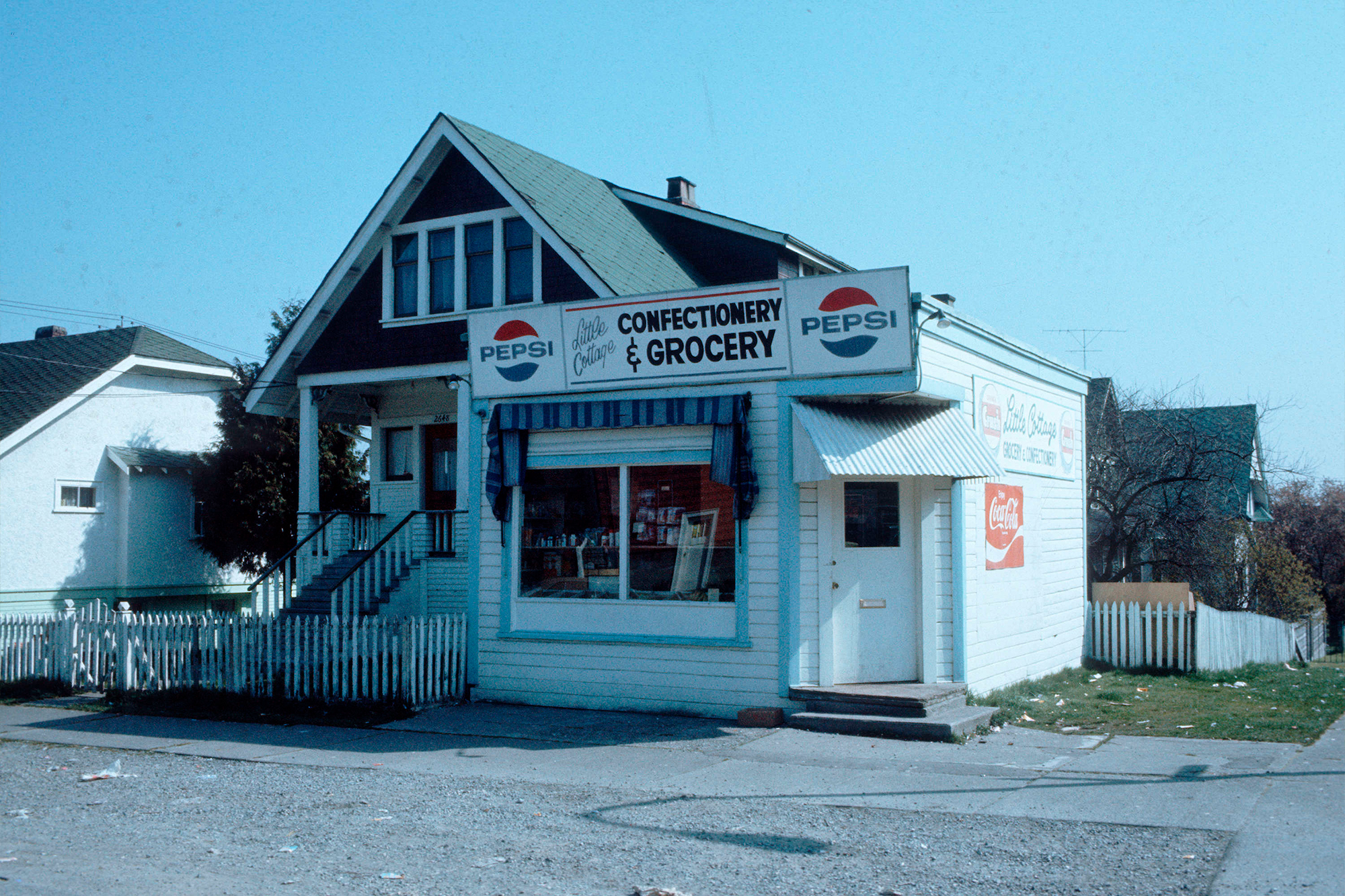
1024 Cardero, 1978 and 2020.
These two homes were built around 1908, and one is now a popular coffee shop for the West End crowd. The other one got a new hat!
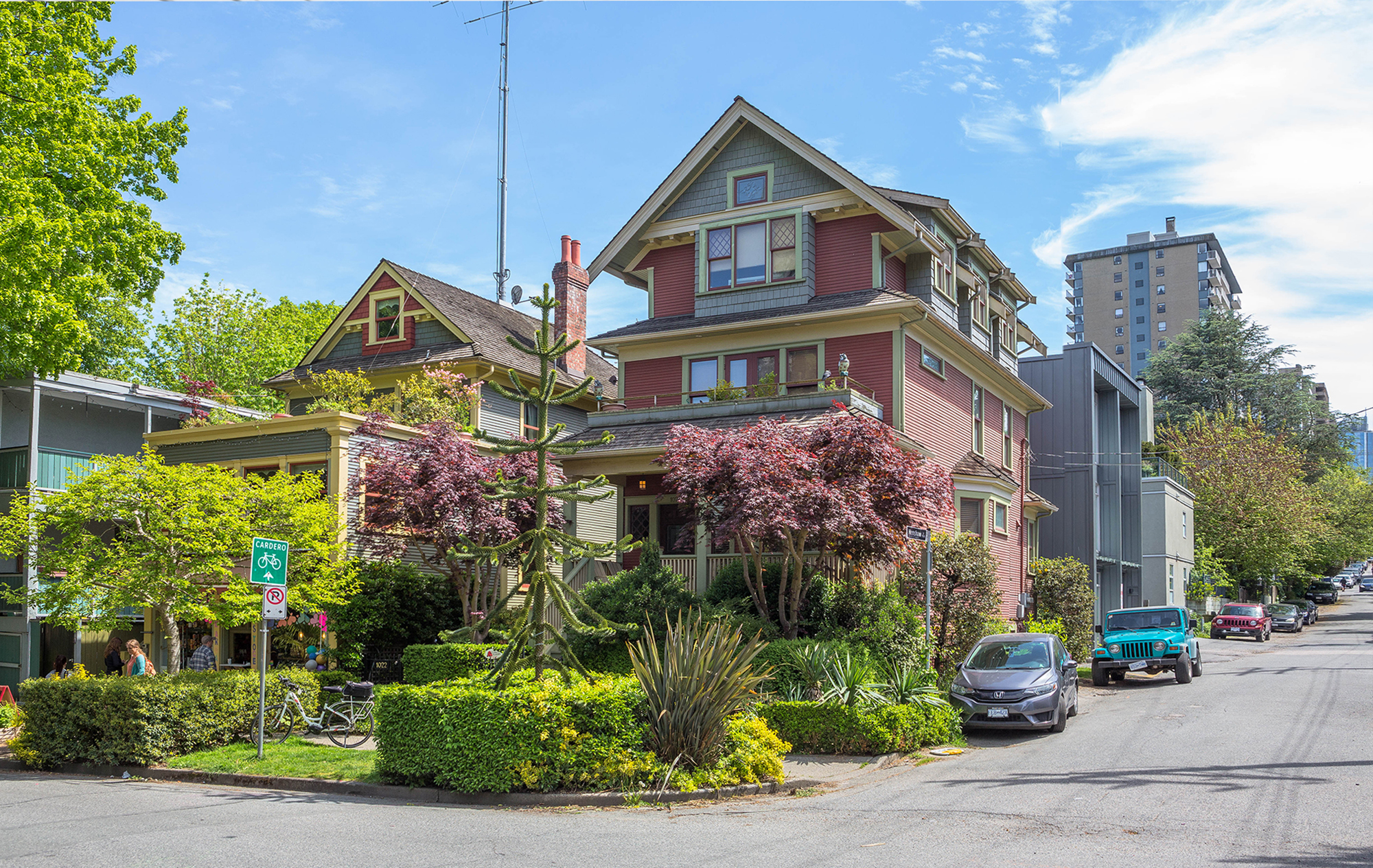
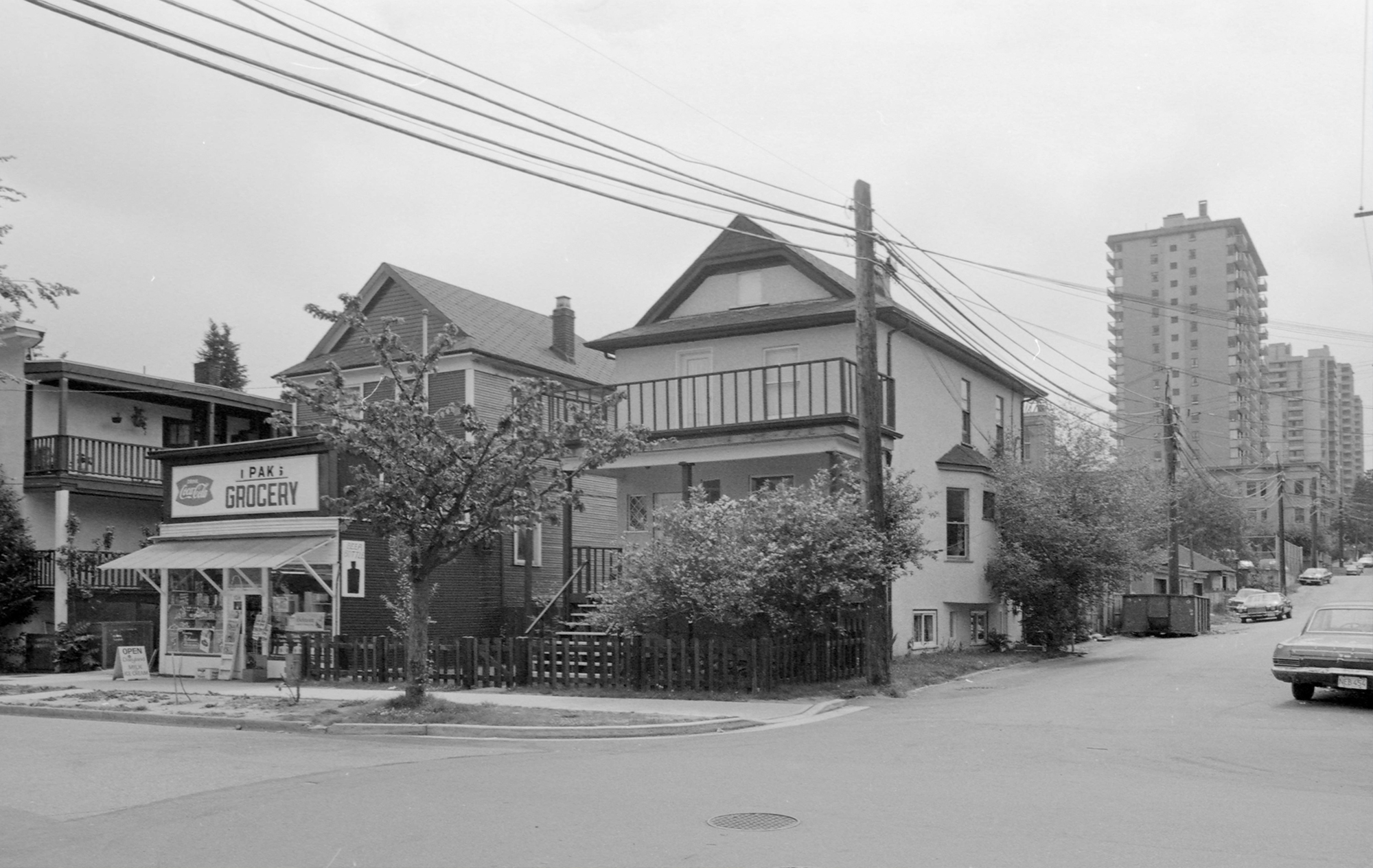
Main Street between 7th and 8th, 1918 and 2020.
Mount Pleasant was Vancouver’s first suburb, providing affordable homes to working class families in the city. Calladine’s Grocery offered home delivery to the area.
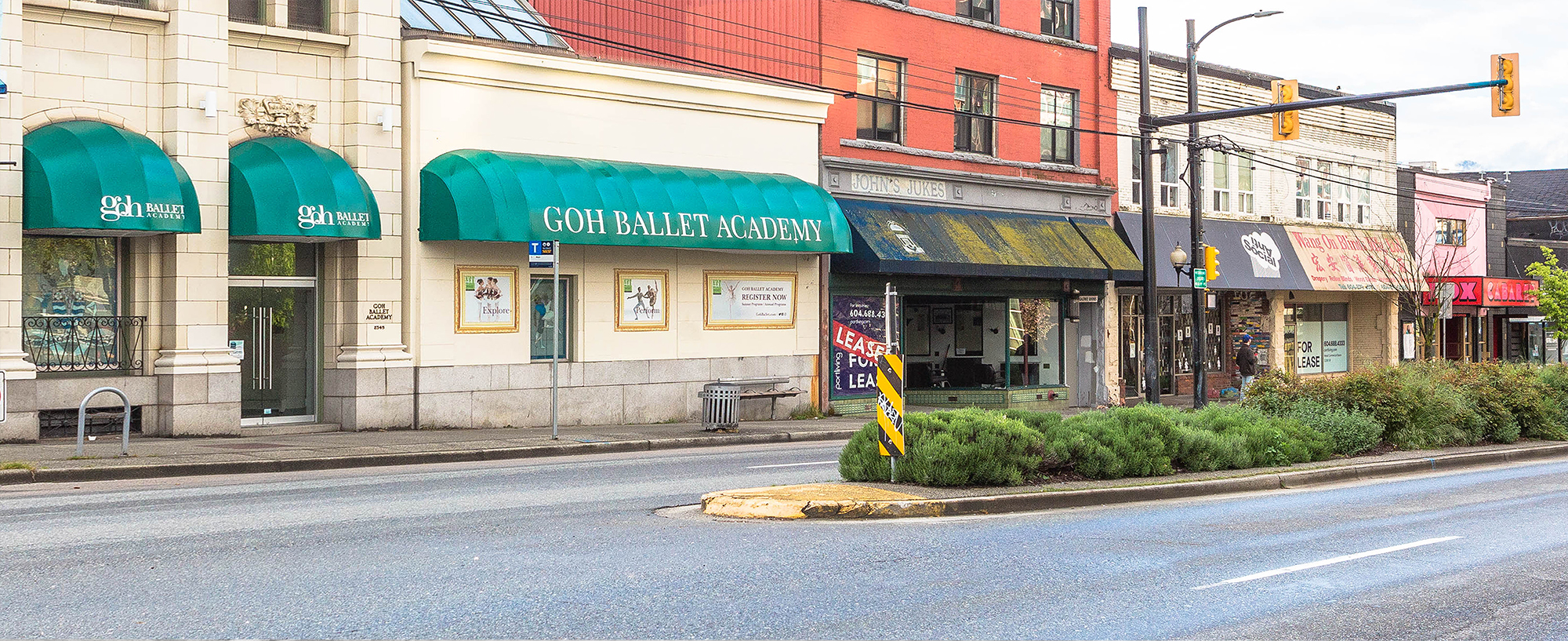
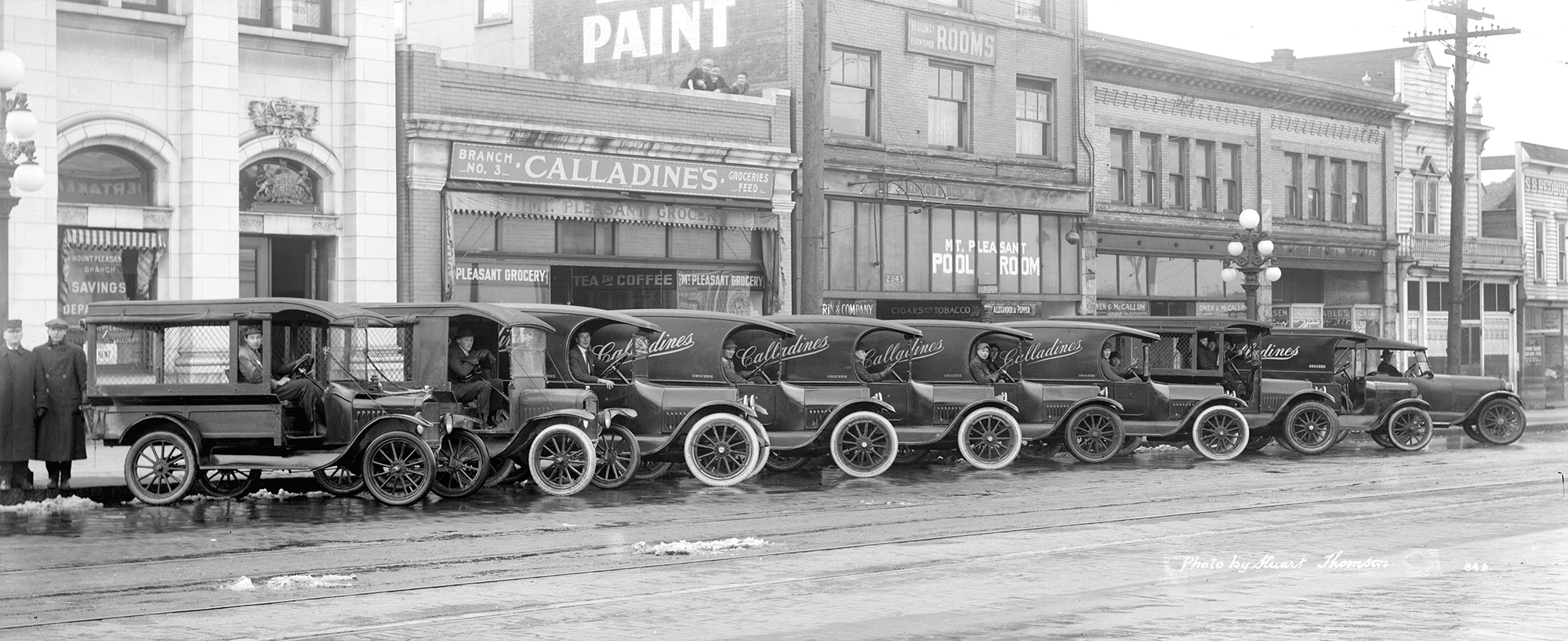
Added April 28, 2020.
Depencier House, 8th and Main, 1958 and 2020.
This Edwardian style house, built around 1894, is regarded as the oldest currently occupied single family residence outside of the downtown core. It has gone through many incarnations, including a brothel, candy company, shoe repair and restaurant.


144 East 6th Avenue. 1958 and 2020.
Along with the Depancier house above, this one might qualify as the oldest residence outside the downtown core. Built in 1894 or so, the photograph is from 1958, the oldest one I could find. The house is now home to The James Black Gallery.
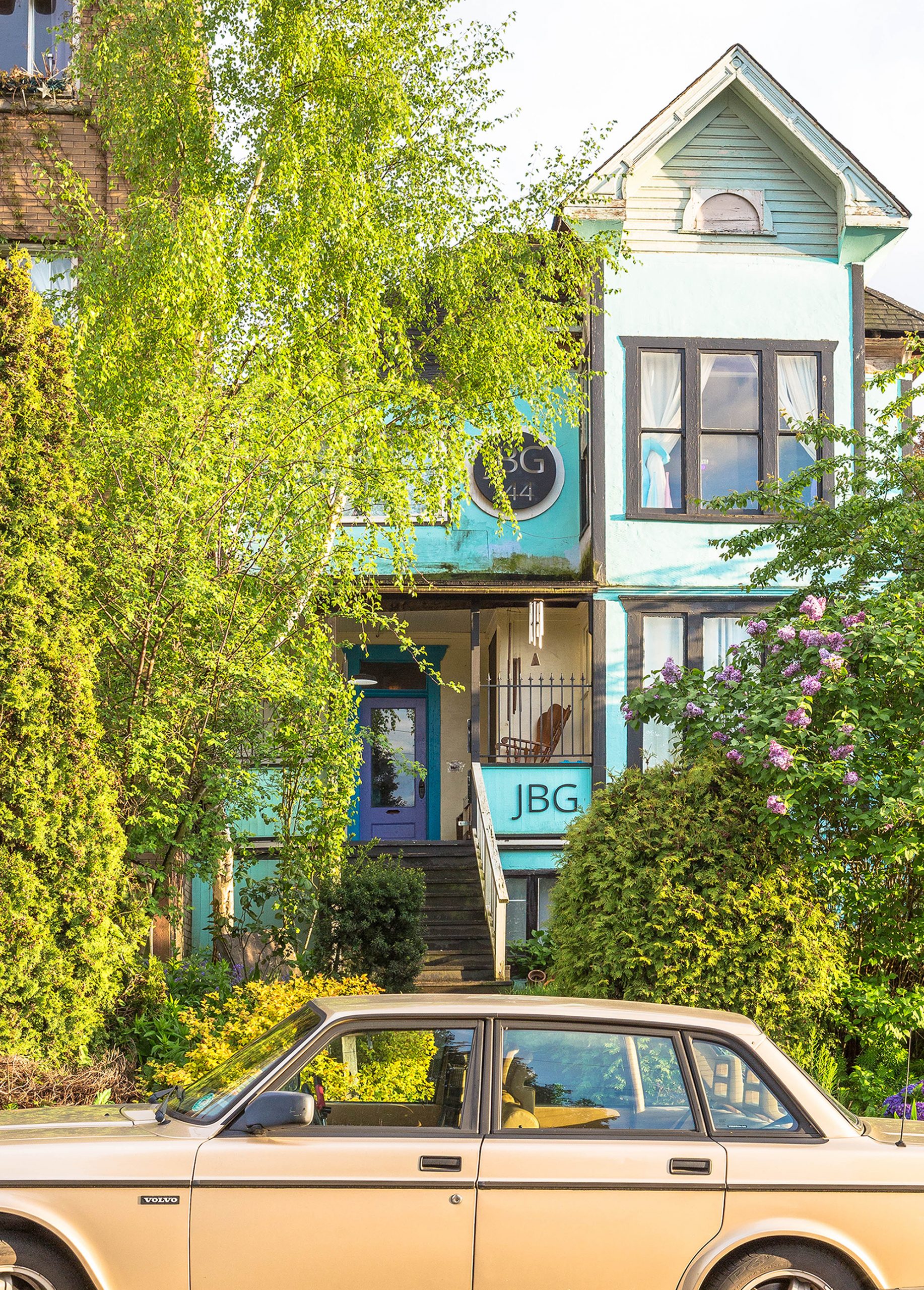
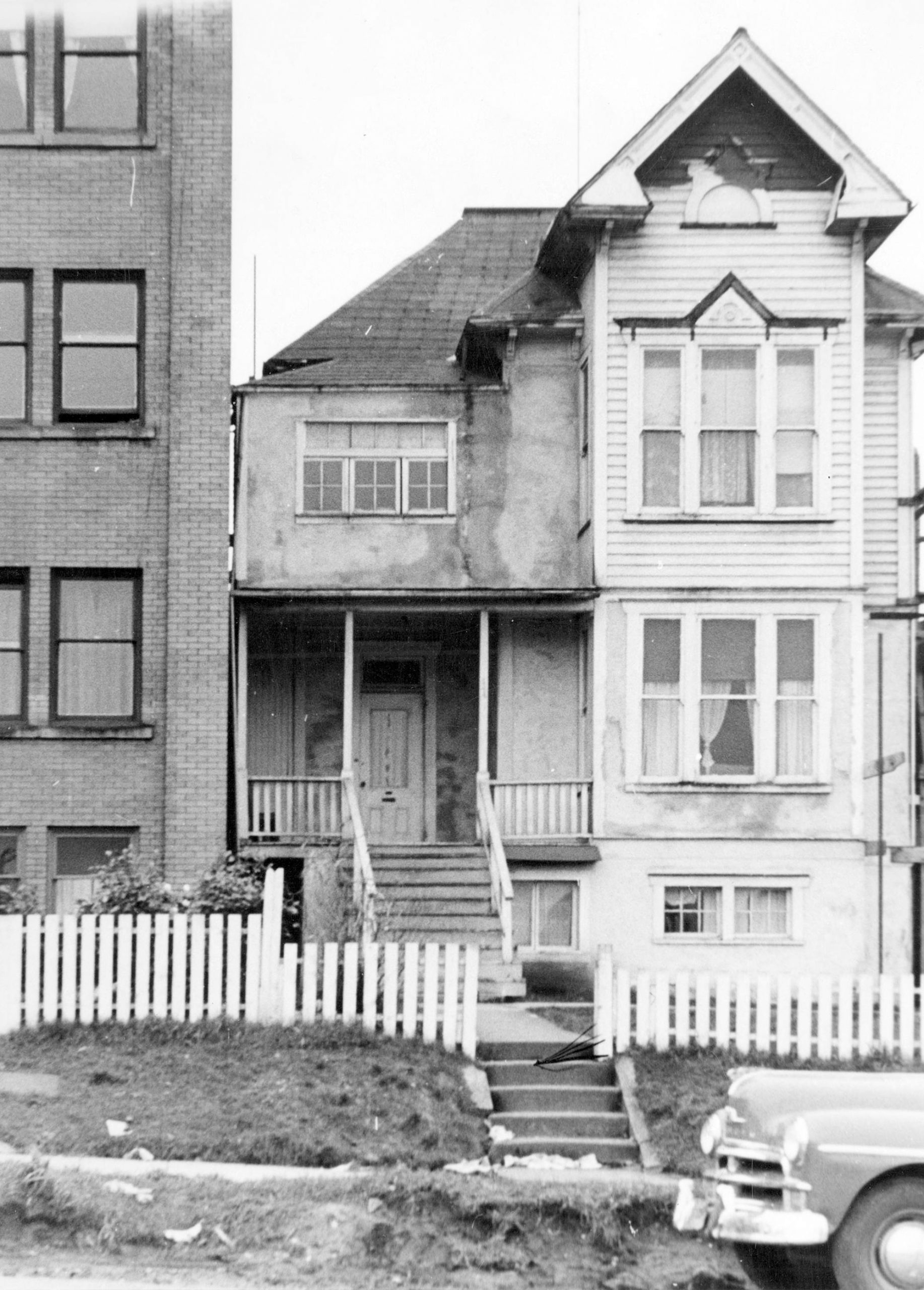
The Naam, West 4th Avenue, Vancouver, 1985 and 2020.
One of the city’s most popular vegetarian restaurants, the Naam opened in 1968 when Kits was known as Rainbow Road. It’s open 24/7 and has remained virtually unchanged, both inside and out.
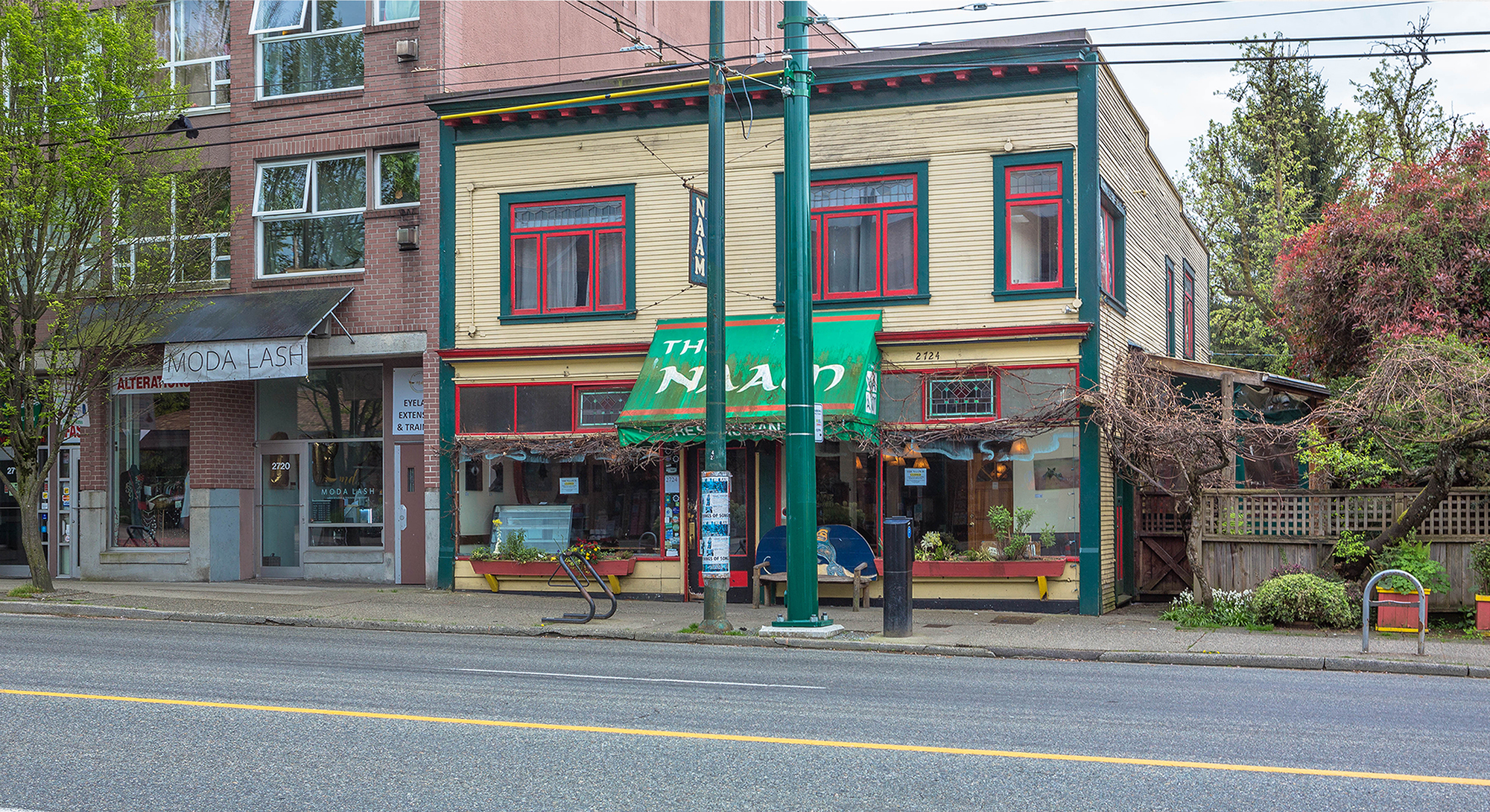
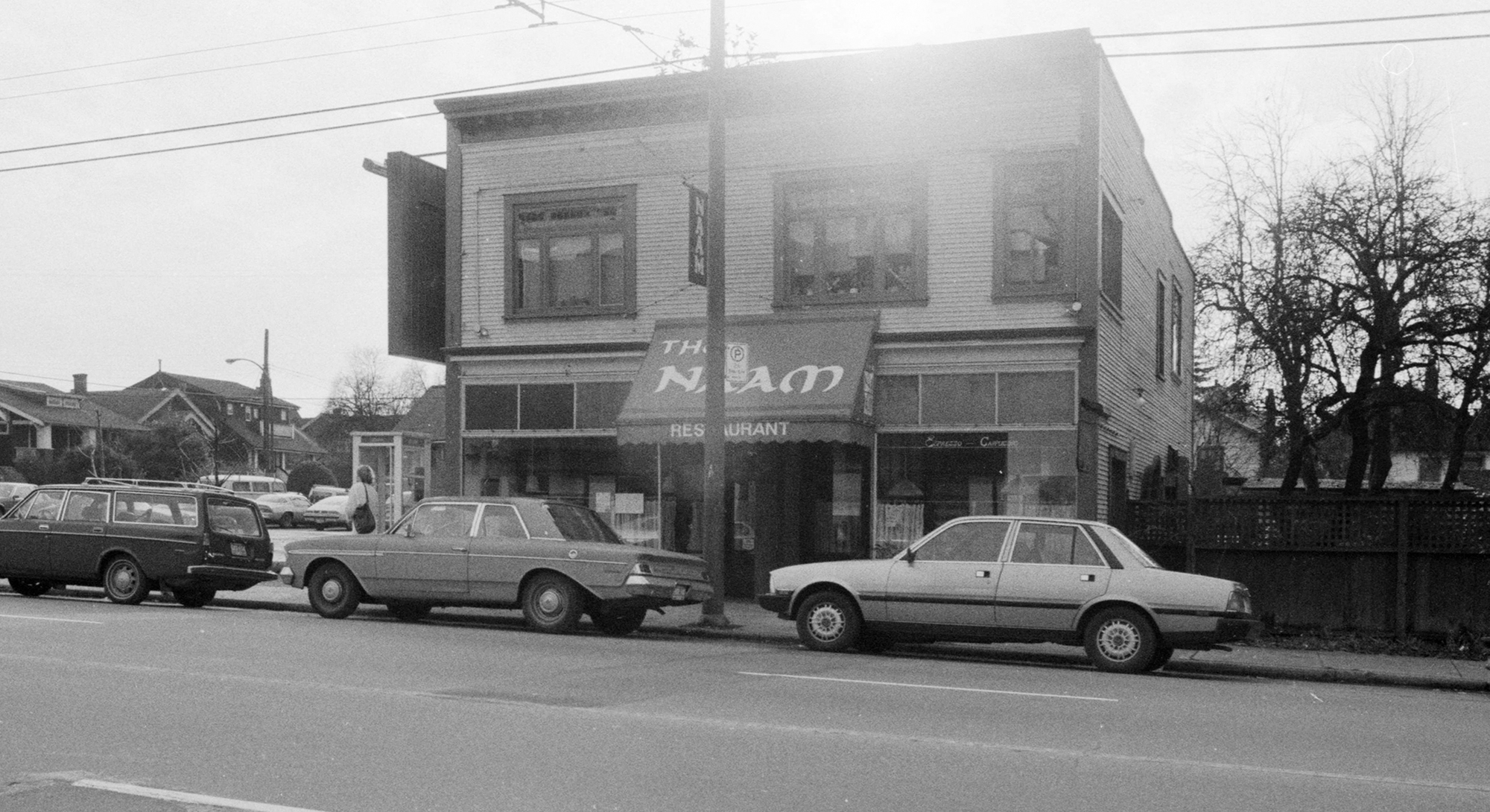
Kitsilano Theatre, West 4th Avenue, 1920s and 2020.
This nondescript building on a busy street in Kits has a colourful past. Originally built in 1913 for the Vaudeville circuit, it became a movie house until the doors were closed in 1955. The Russian Community Centre took it over in 1958, and in 1966 it became The Afterthought, a psychedelic concert hall. The Grateful Dead and Steve Miller played there, among others.
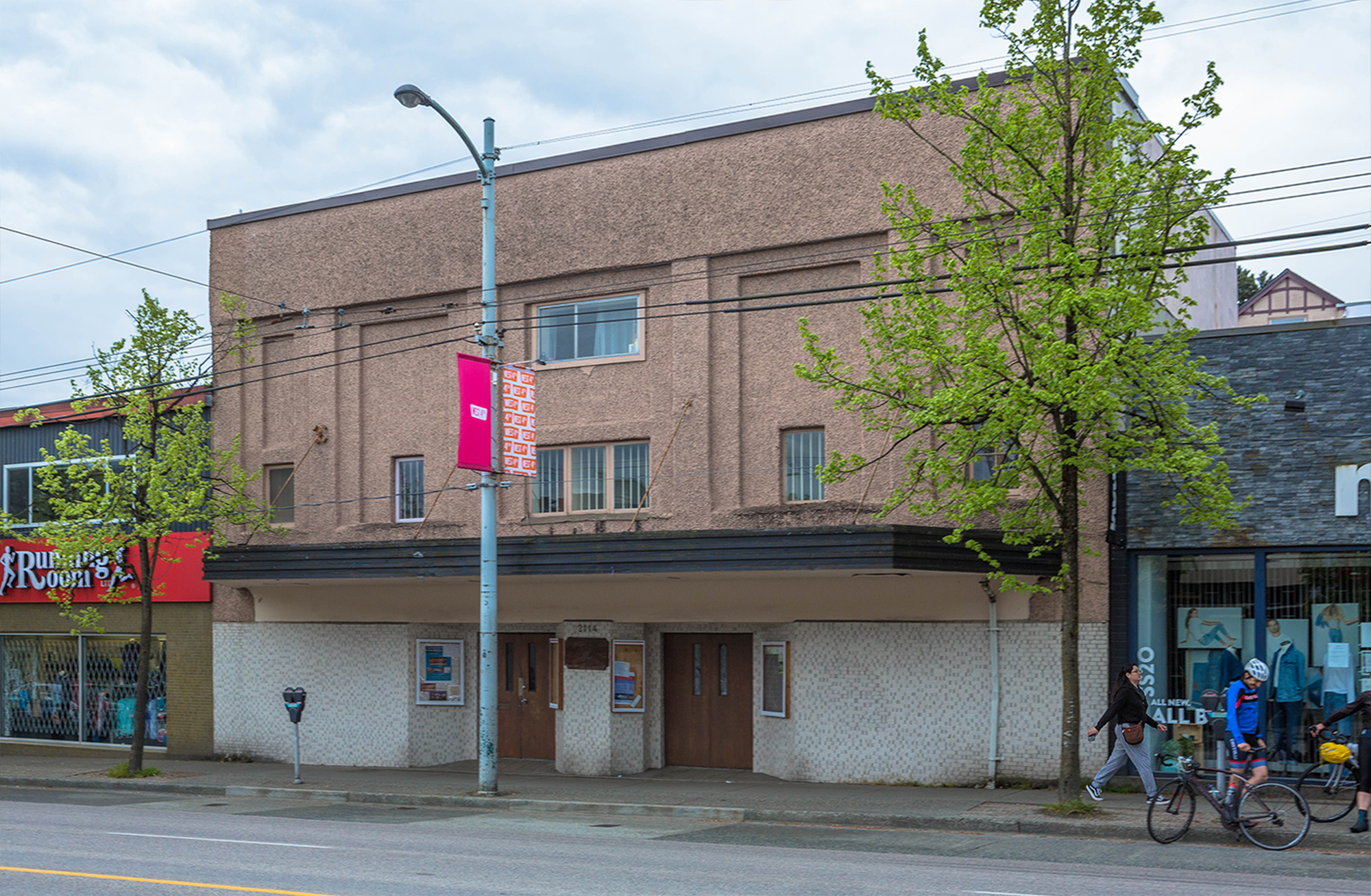
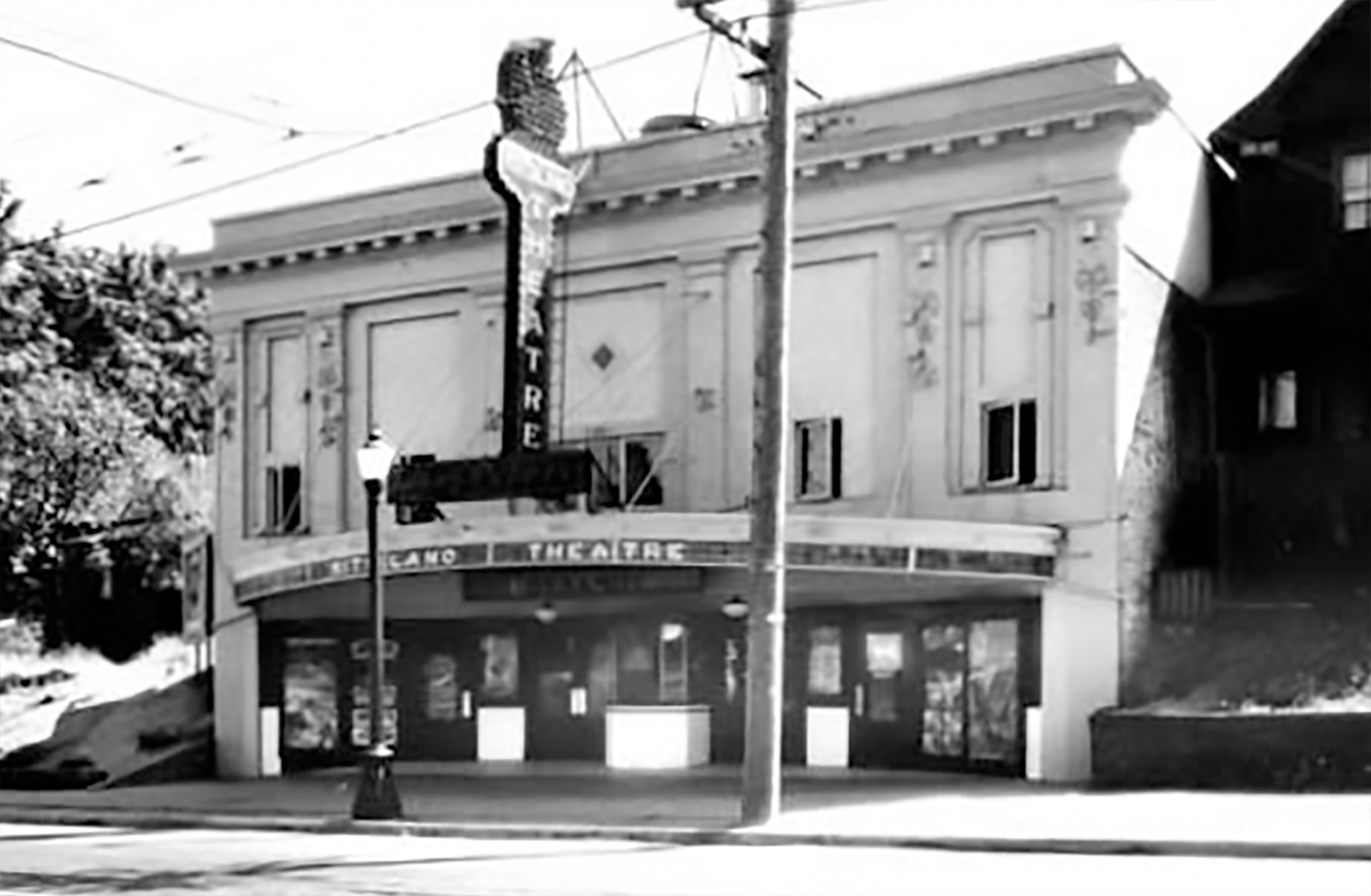
Added April 25, 2020.
Chalmers Presbyterian Church, 1923 and 2020.
Built in 1912, closed in 1990, taken over by the Anglican Church and renamed Holy Trinity.
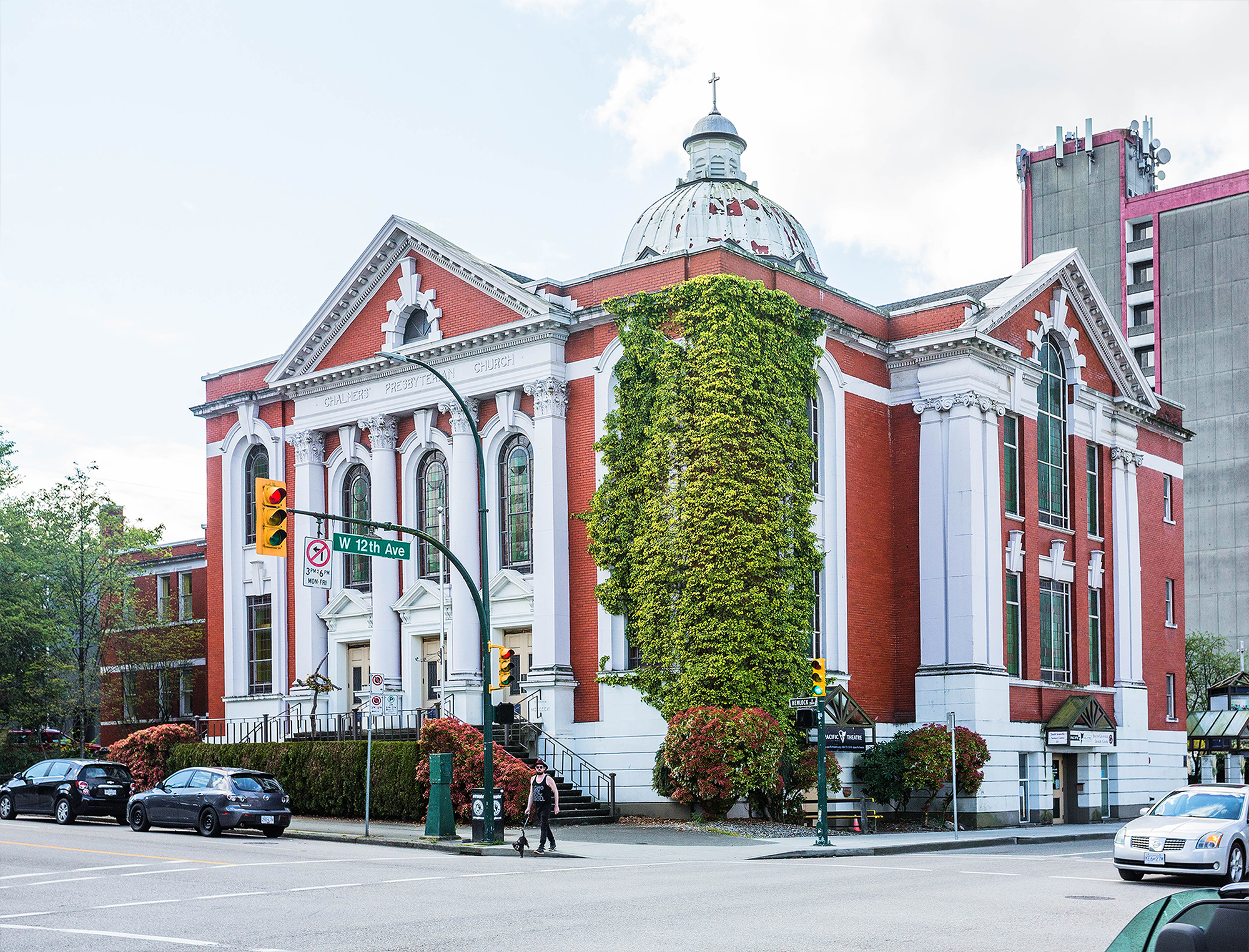
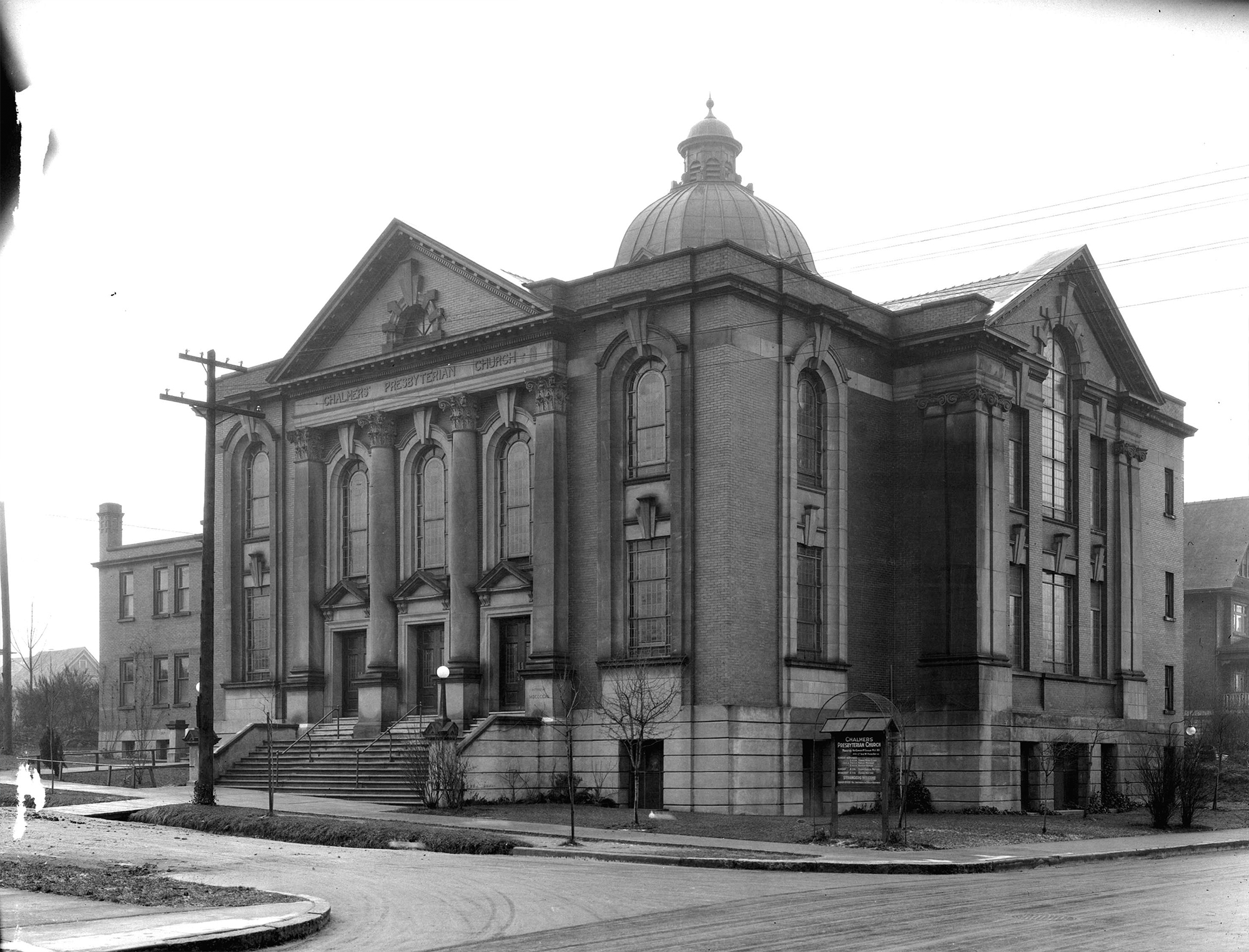
National Biscuit Company, 1706 West 1st Ave., 1931 and 2020.
Renowned maker of such culinary delights as Red Arrow Biscuits, Lucky Torpedoes and Lost Lagoon Chocolate, the building now houses an upscale furniture retailer.
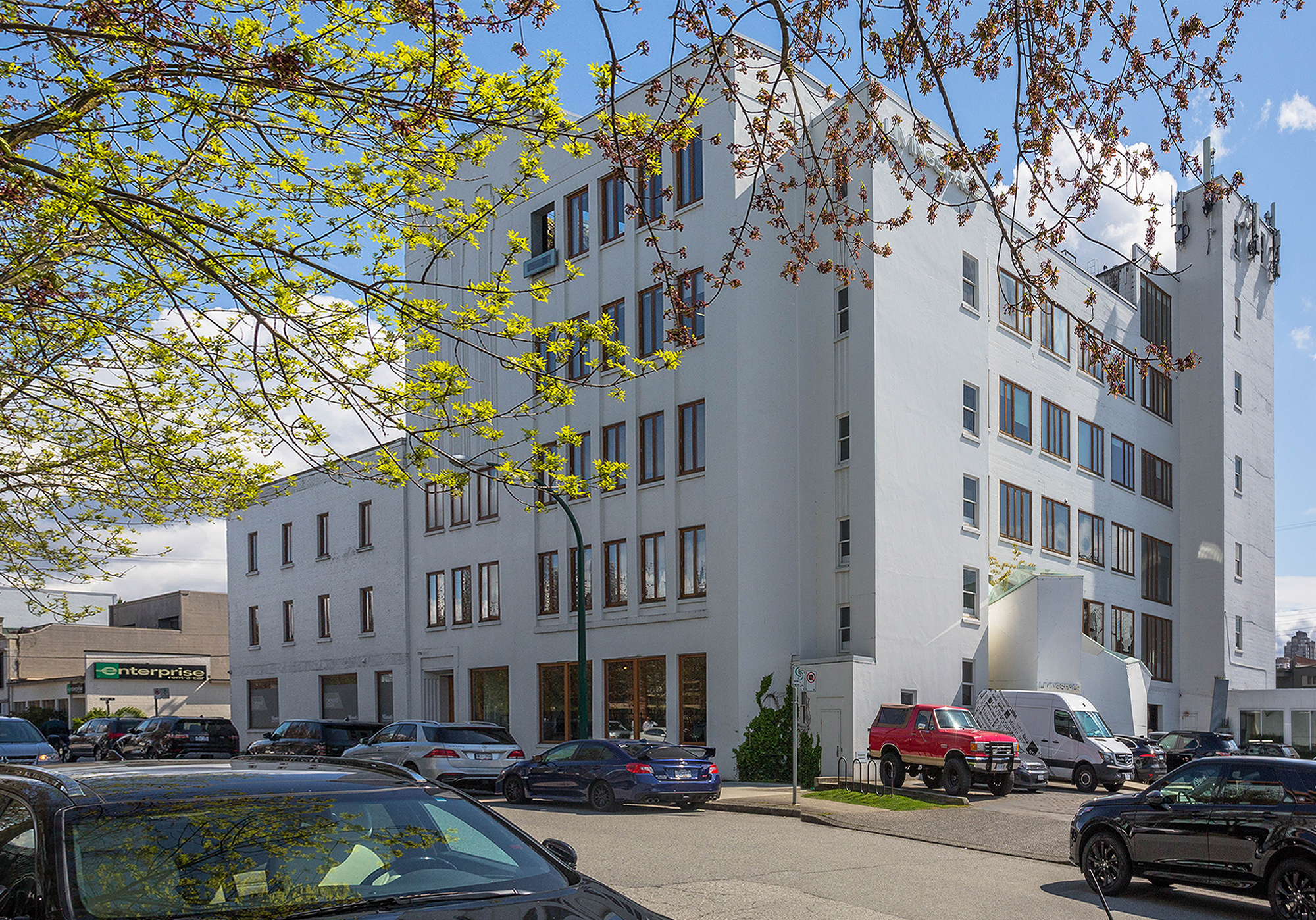
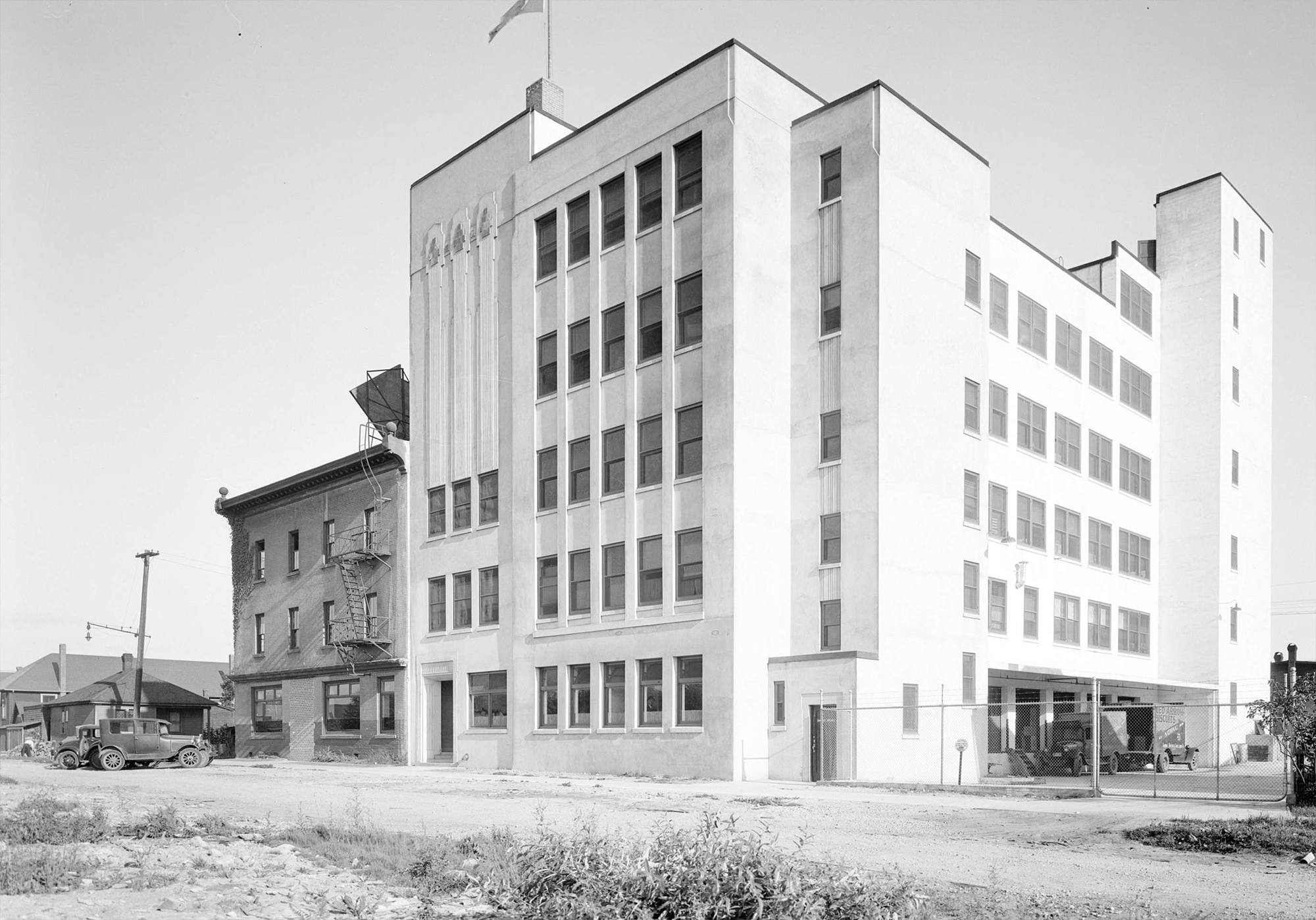
Granville Street looking north from Davie, 1928 and 2020.
There are a few remnants still visible today from the Roaring ’20s, most notably the St Helens Hotel. It’s now a Single Room Occupancy (SRO) hotel, and the neighbourhood has seen better days.
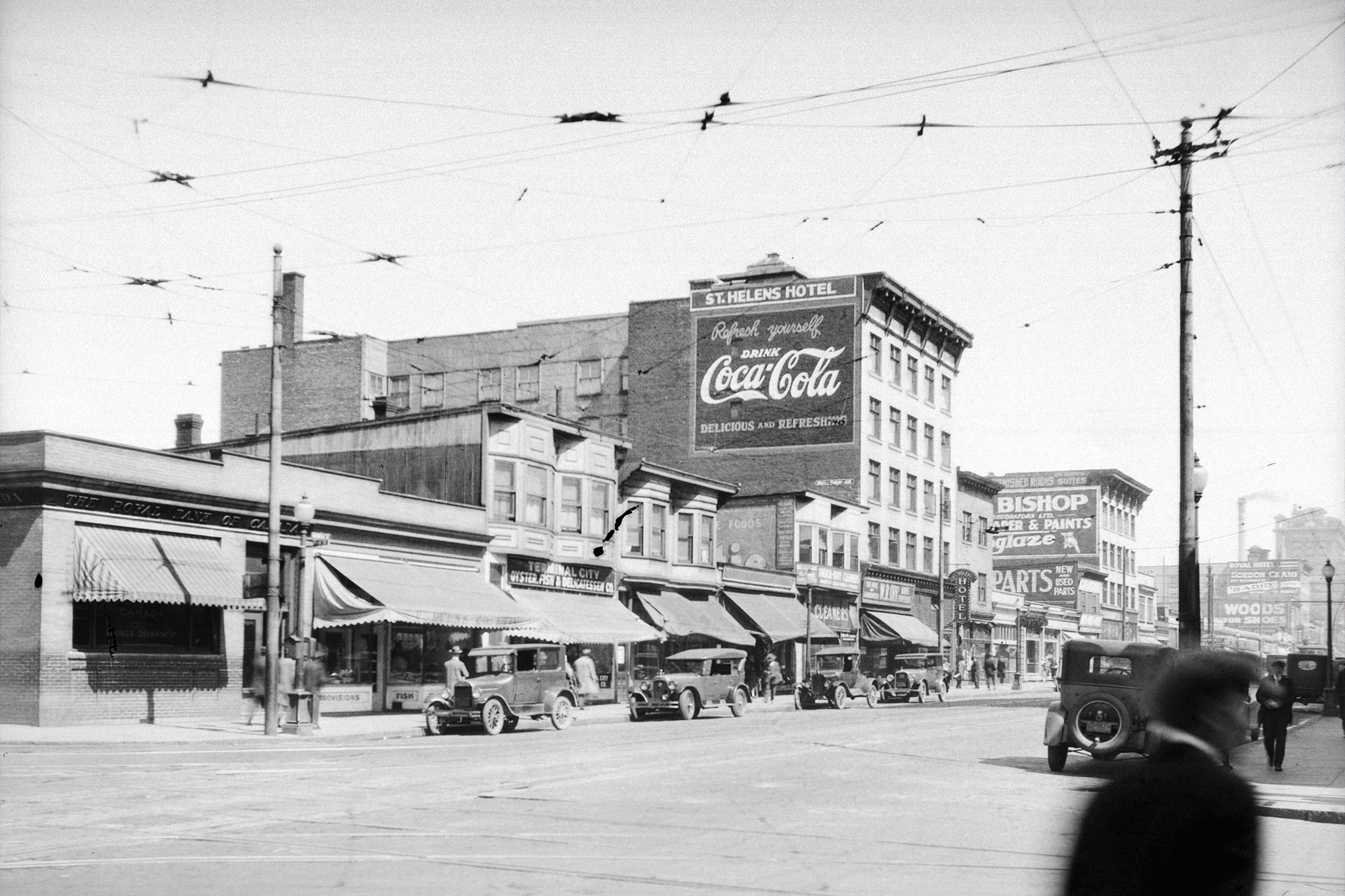
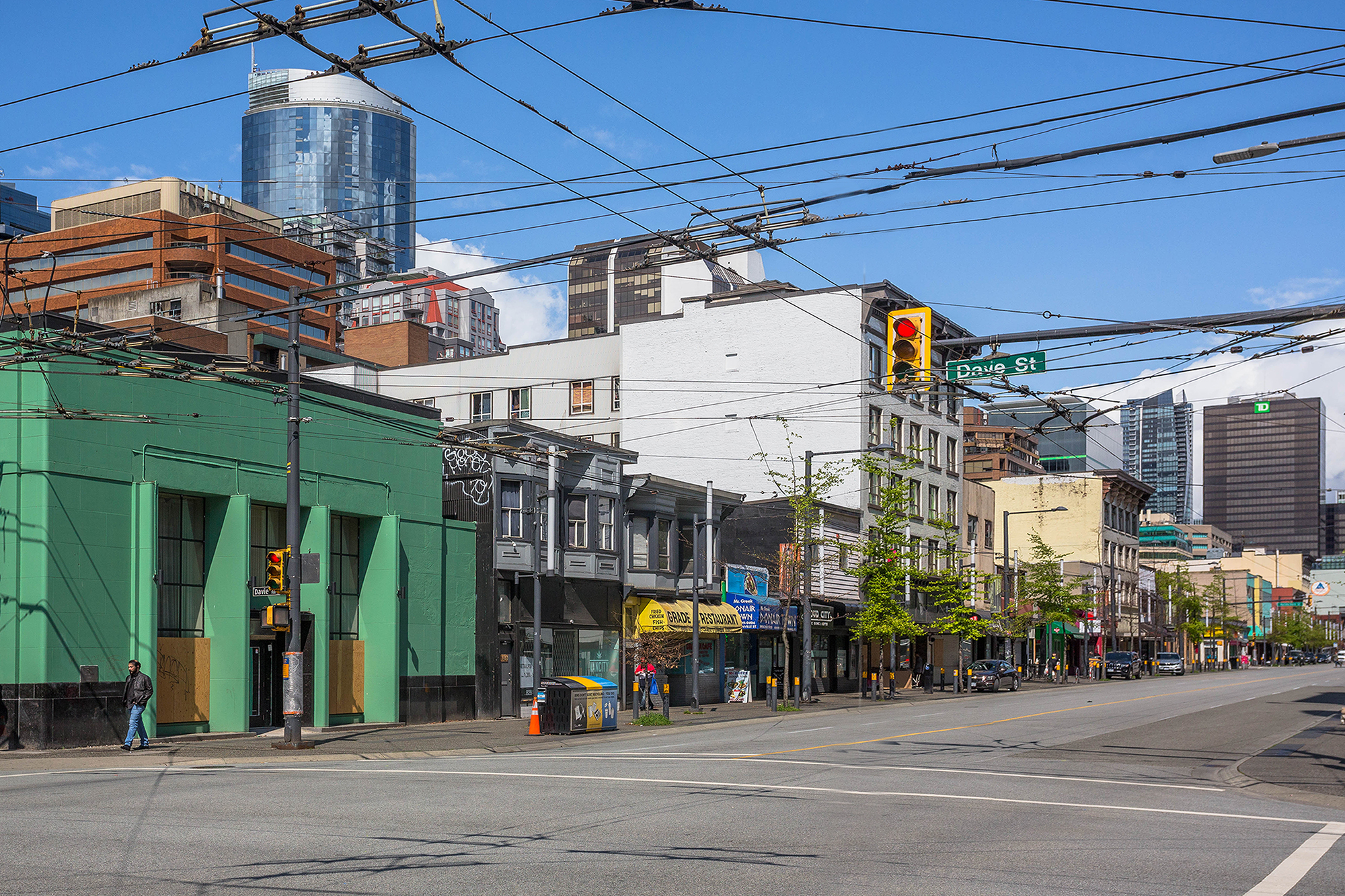
4th Ave and Yew Street, 1912 and 2020.
This old beauty has had some work done over the years, transforming from a dowdy old CIBC branch to a lifestyle-related retailer which specializes in selling apparel, clothing accessories and apartment products. Looking pretty good for 108!
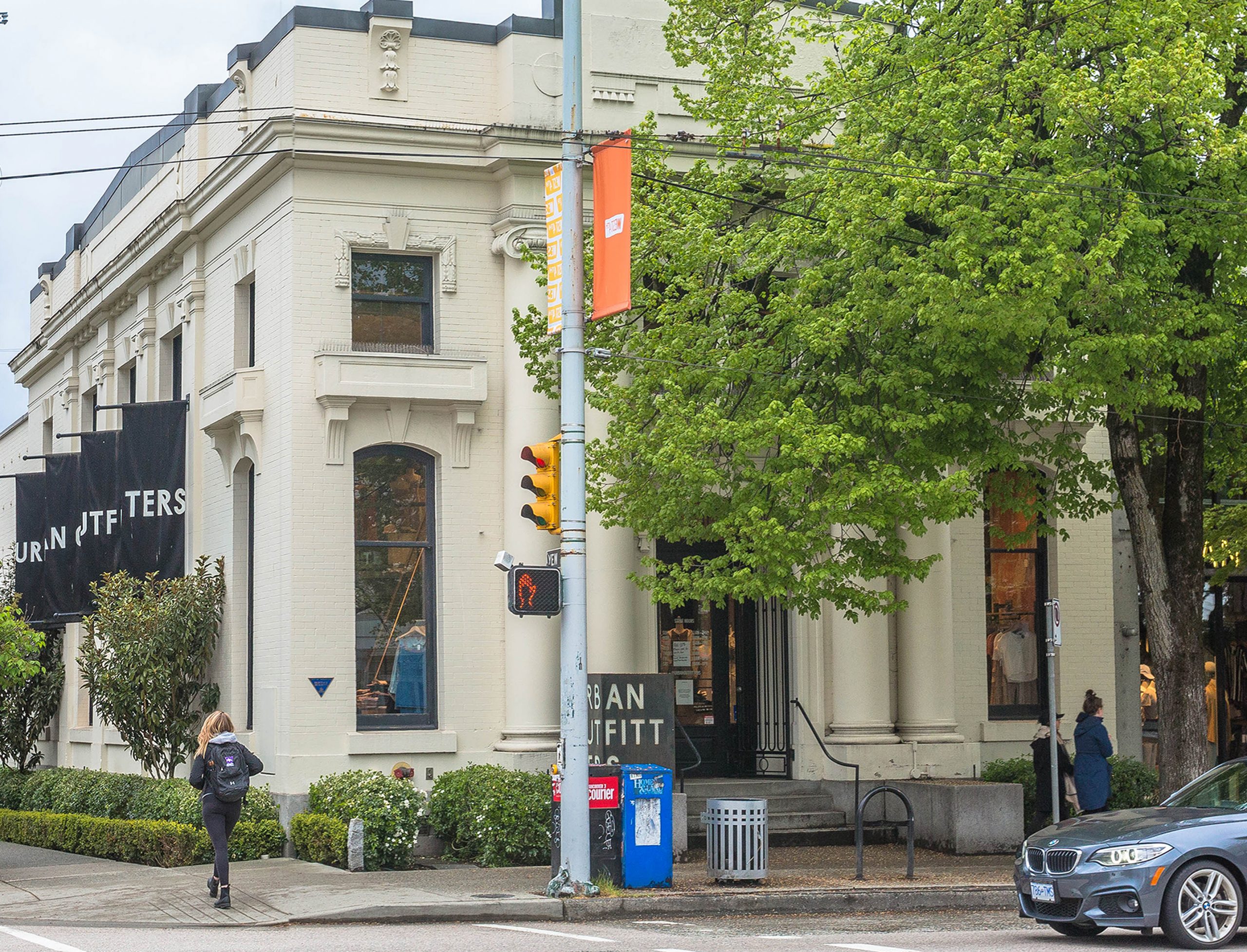
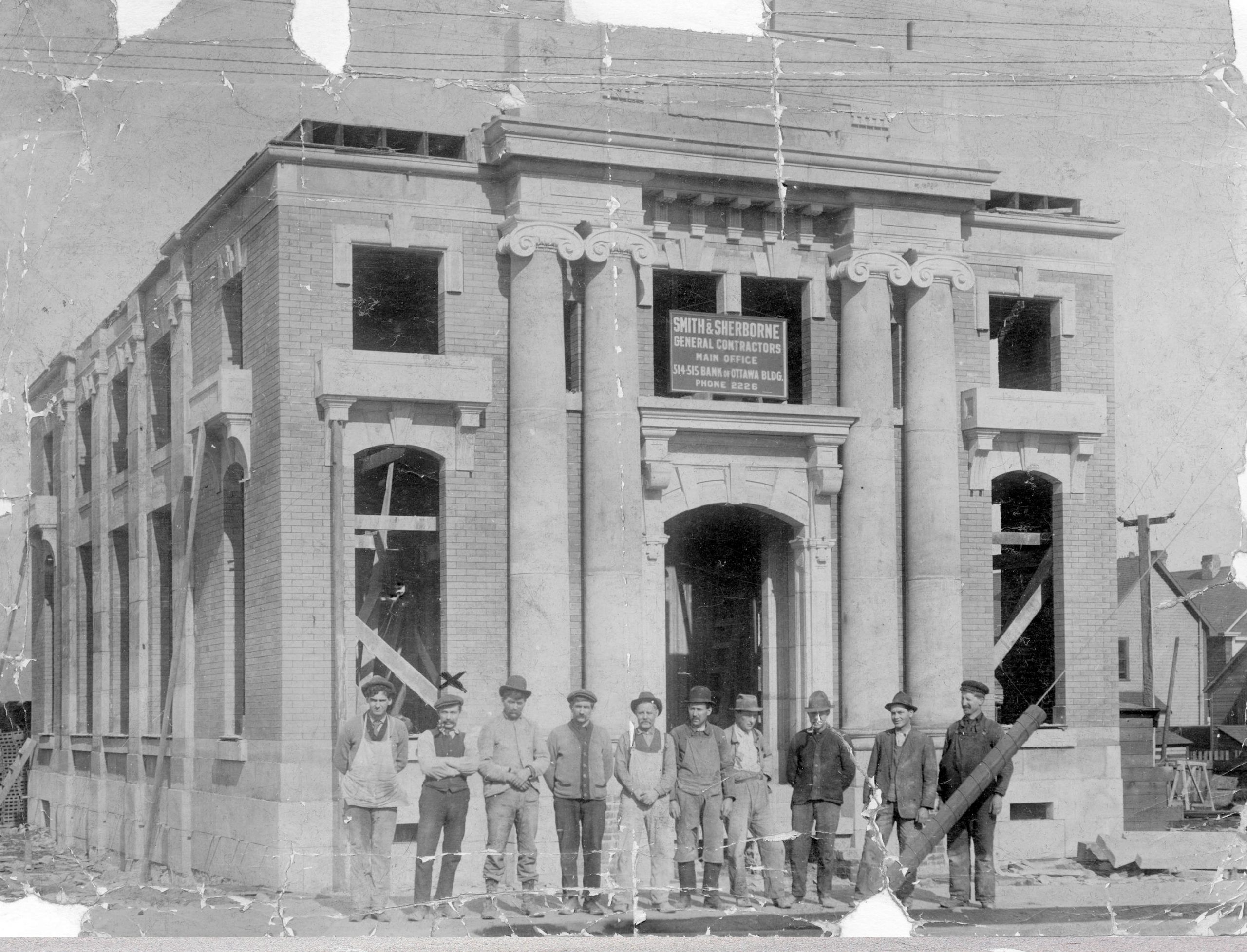
Cornwall and Yew Street, 1934 and 2020.
I had no idea that the building on the right, which until recently housed a popular Starbucks, was over 80 years old. This photograph shows the original tenants on the street, Kitsilano Tea Rooms, Pollyanna Home Cooking, Blenheim Apartments and Consolidated Grocers. Across the street are the tennis courts and the outdoor pool of Kitsilano Beach, a busy (usually) summer spot.
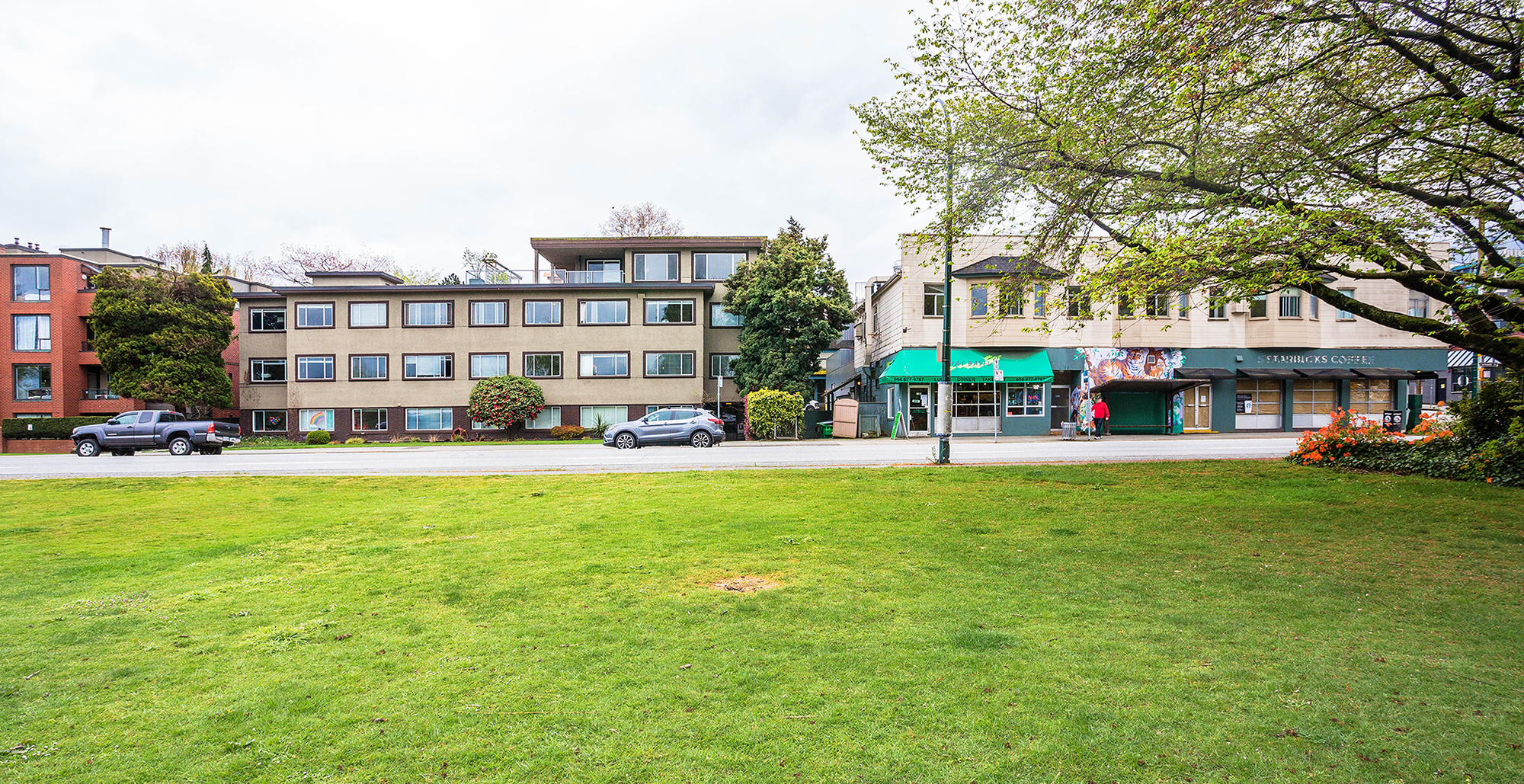
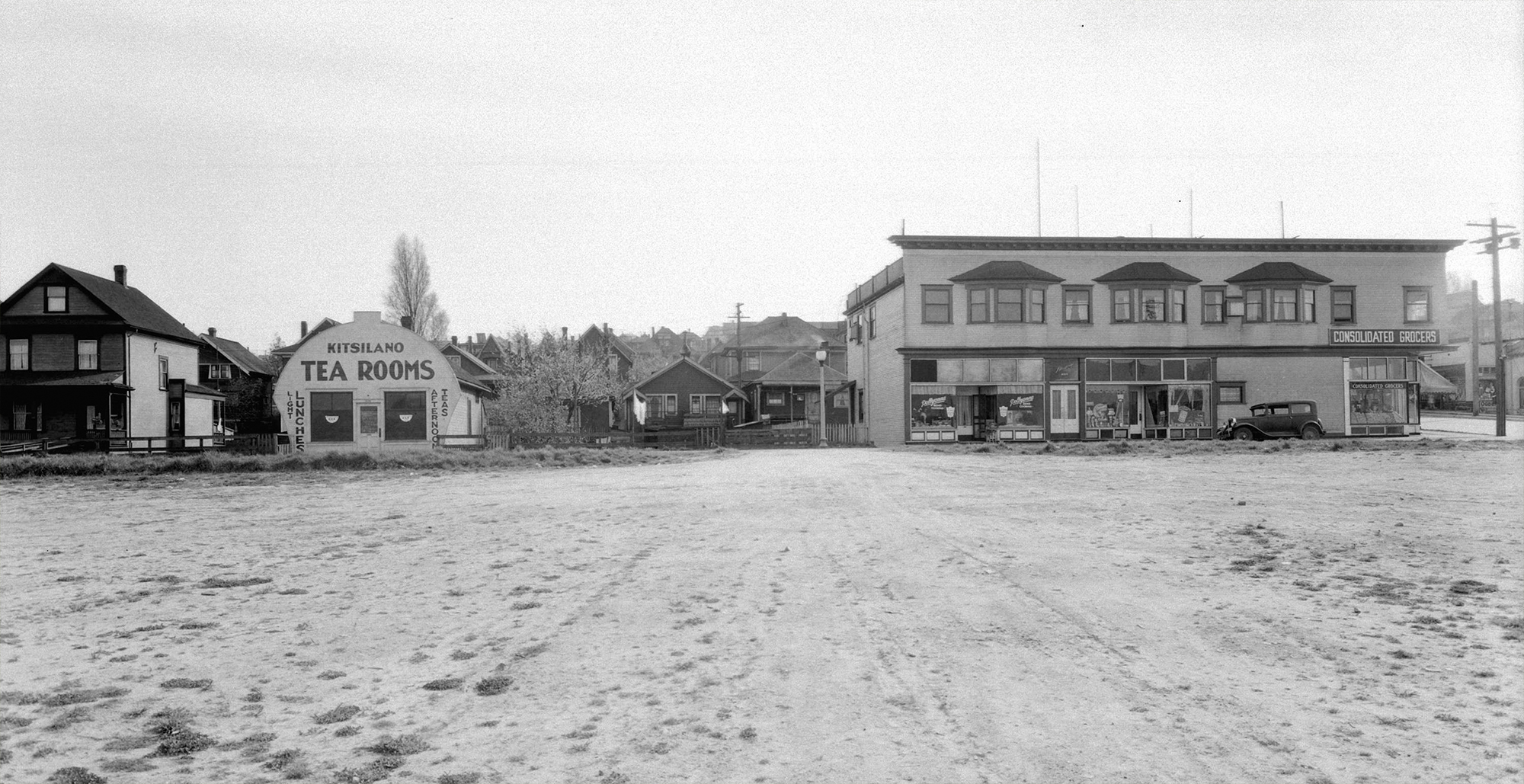
Arbutus and Broadway, 1920s and 2020.
This unassuming building existed when Arbutus Street was just a dirt road. It’s surprising that this modest structure has survived on some pretty valuable dirt for almost 100 years.
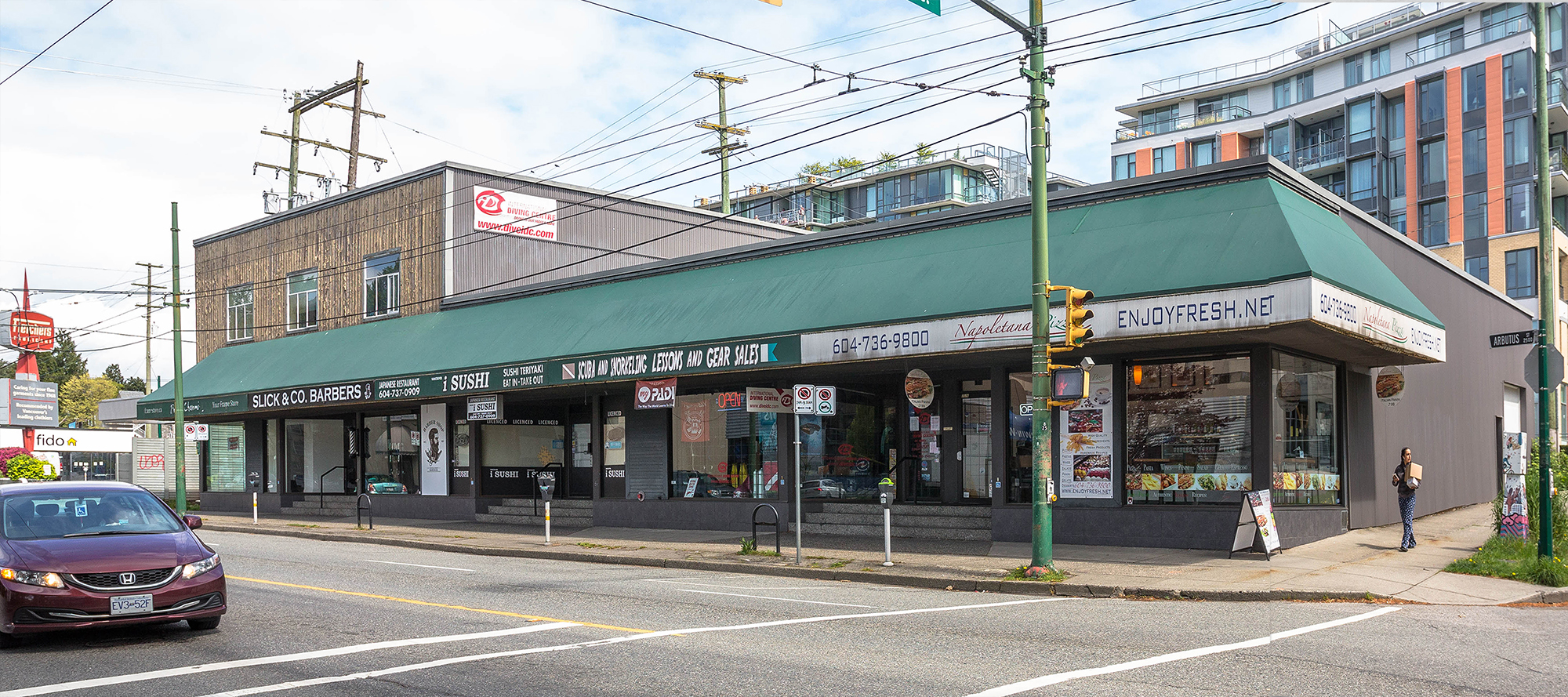
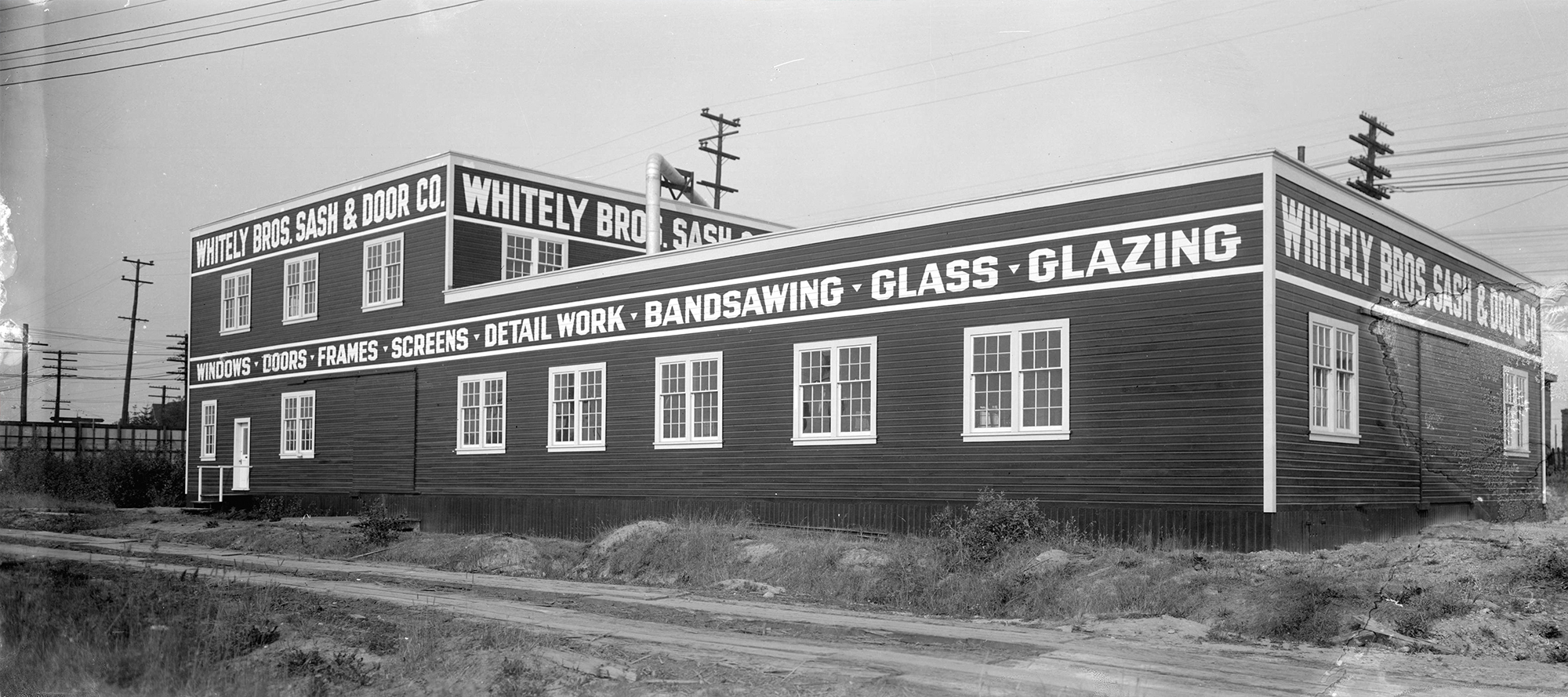
Dick Building, Granville and Broadway, 1929 and 2020.
This unique structure is the legacy of William Dick, prominent businessman and politician. It graces one of the busiest intersections in the city.
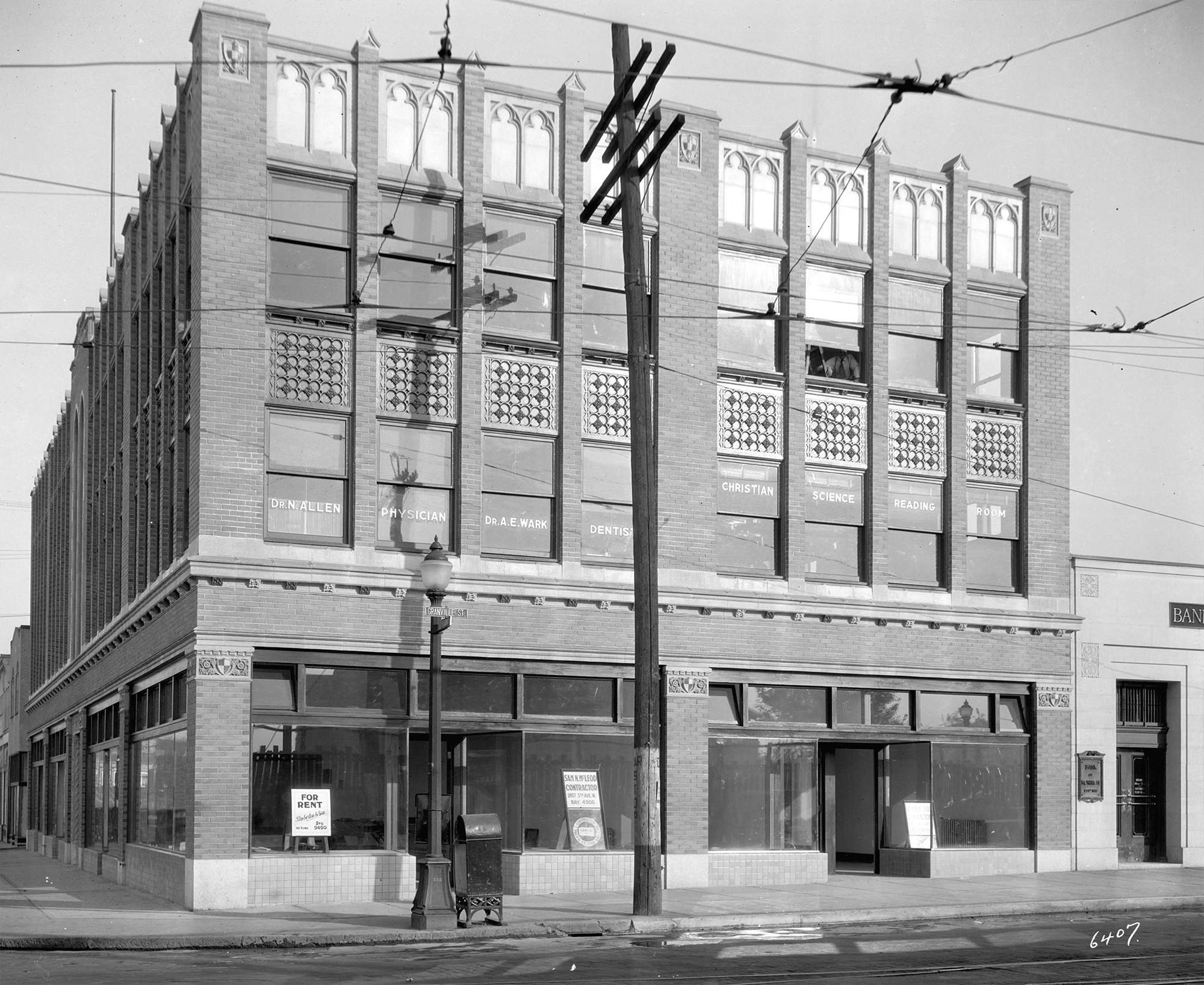
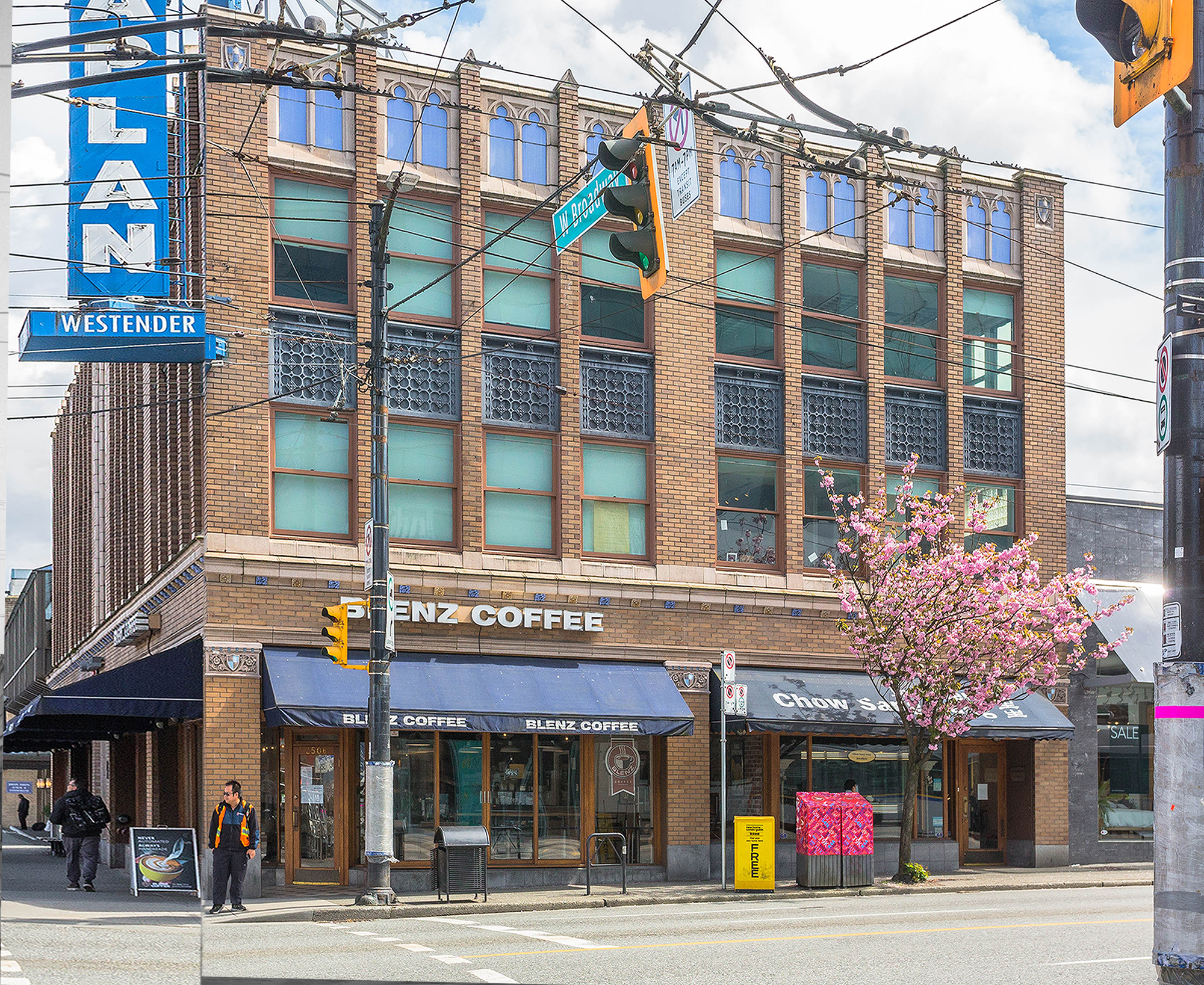
“Brown Skin Beach” 1932 and 2020.
According to Forbidden Vancouver, “From its opening in 1928 until 1945, Vancouver’s main indoor swimming pool, Crystal Pool, was racially segregated; “whites, negroes, and Orientals” could all swim there, but not at the same time. Perhaps because of such racial exclusion, non-white folks informally claimed the beach at the old Kitsilano Indian Reserve below Burrard Street Bridge as their own. It became known as “Brown Skin Beach,” but was lost when the old reserve lands were developed into Vanier Park.” There’s a marina on this spot now, and the water in False Creek is too toxic for swimming.
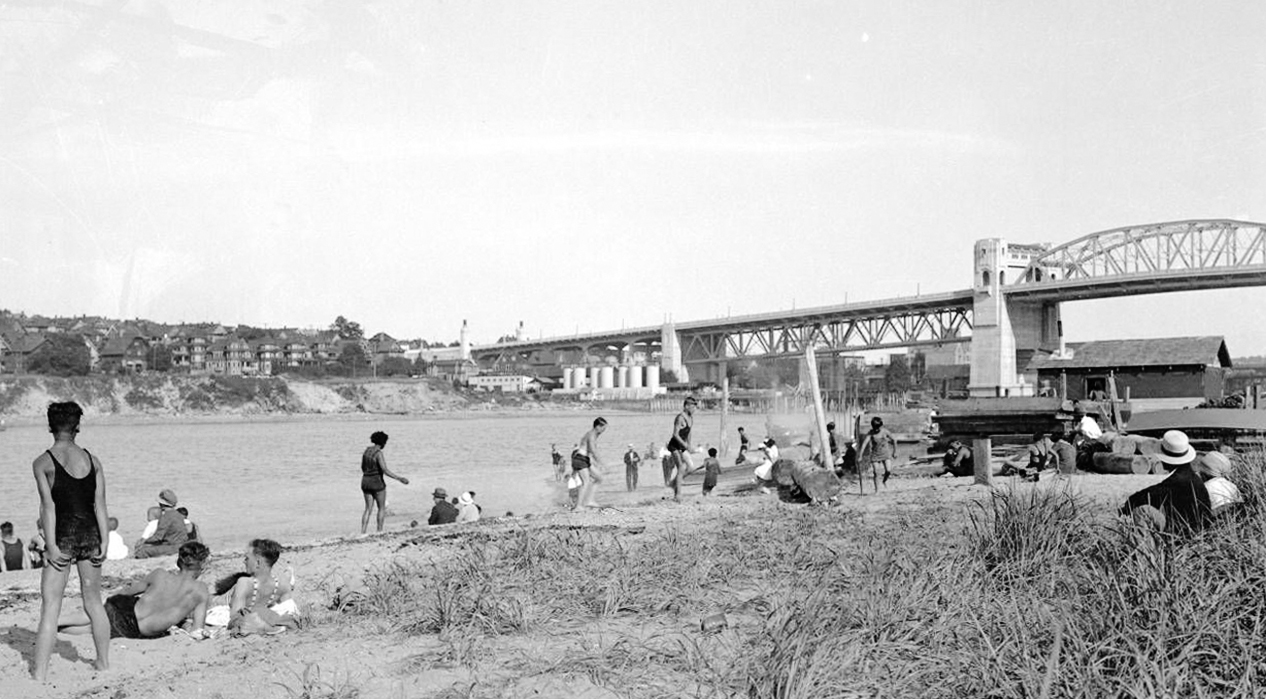
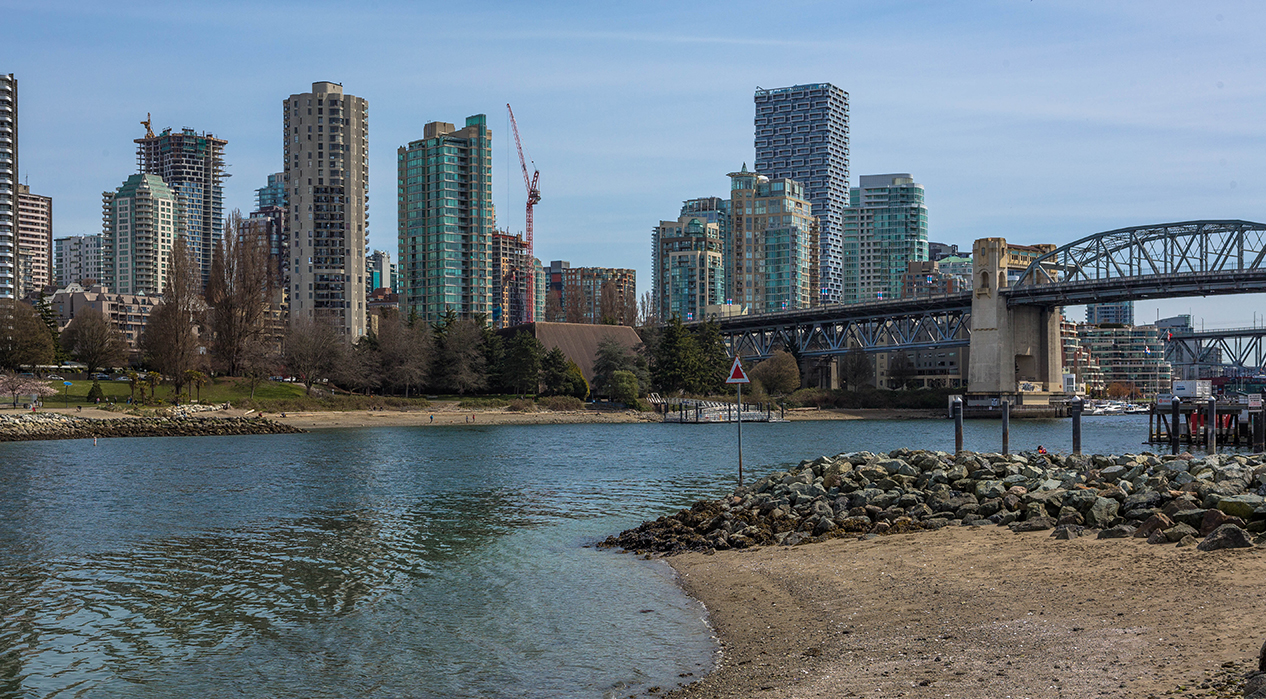
Dunbar Theatre, 1935 and 2020.
One of Vancouver’s last remaining neighbourhood theatres. You can read more about its history here. It is currently closed (although you can still buy their popcorn!), and its future is uncertain.


House at 2nd Avenue and Waterloo, 1912 and 2020.
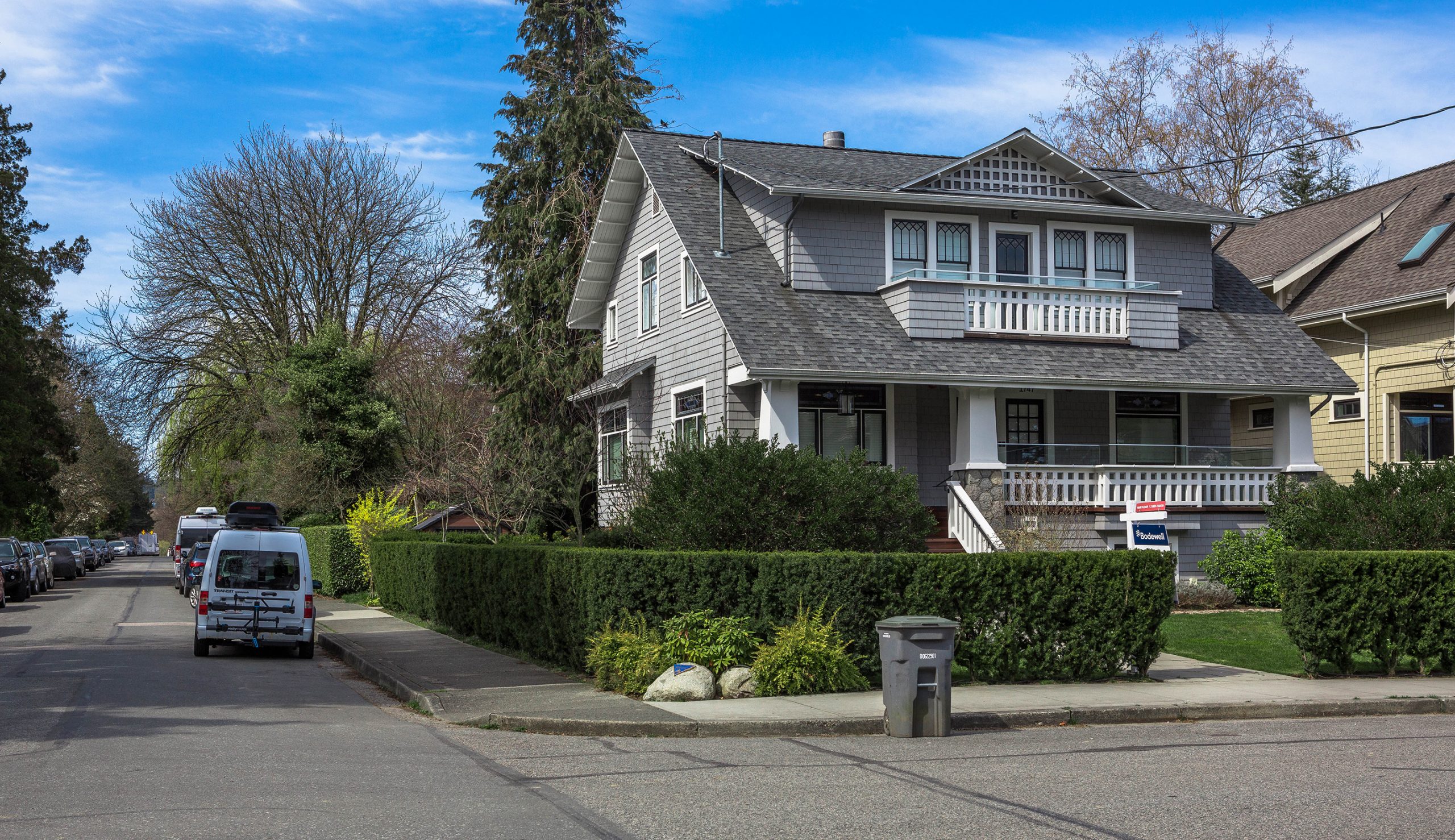
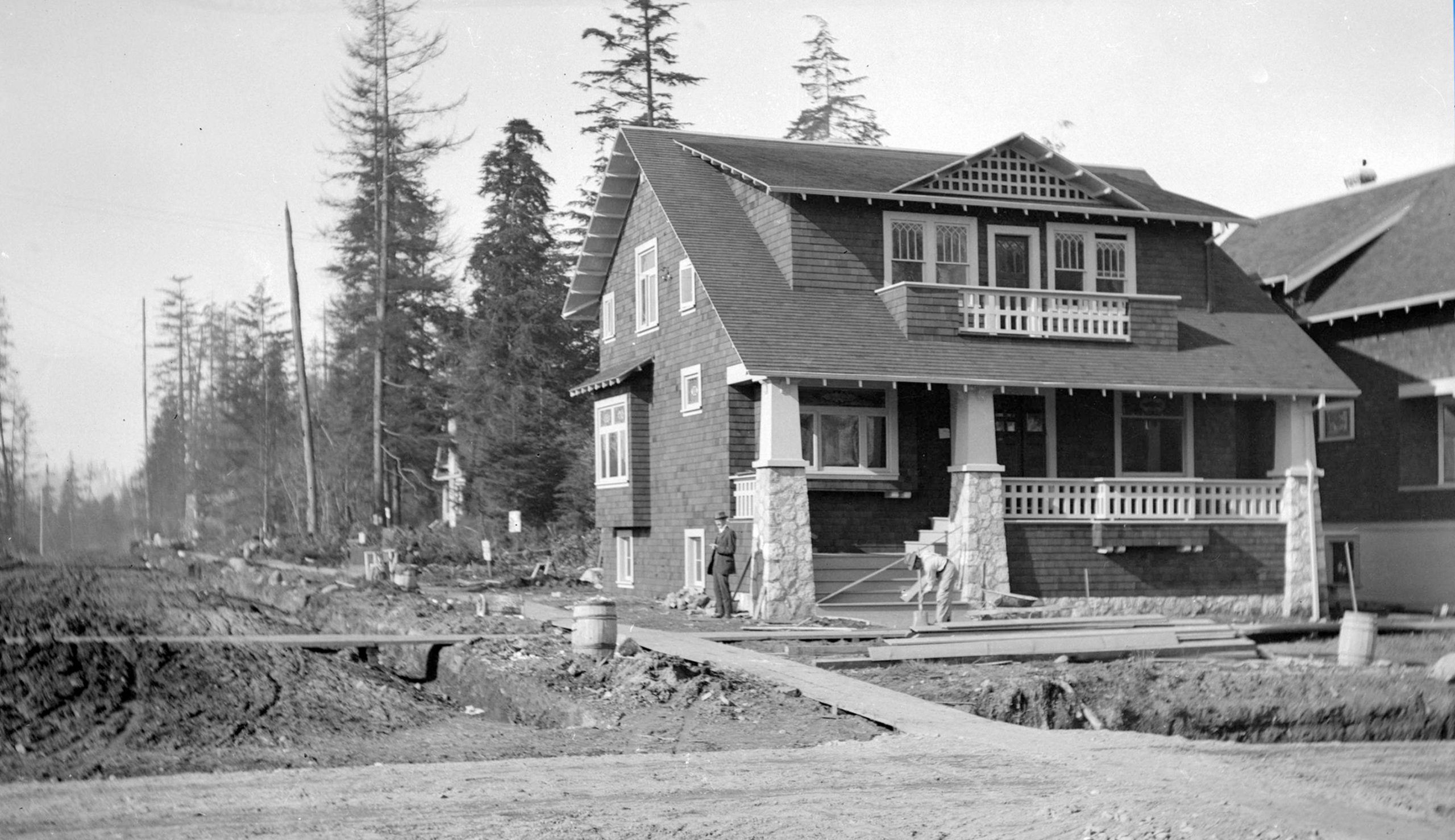
Broadway and Alma, 1951 and 2020.
Rights holder Jack Lindsay under copyright.
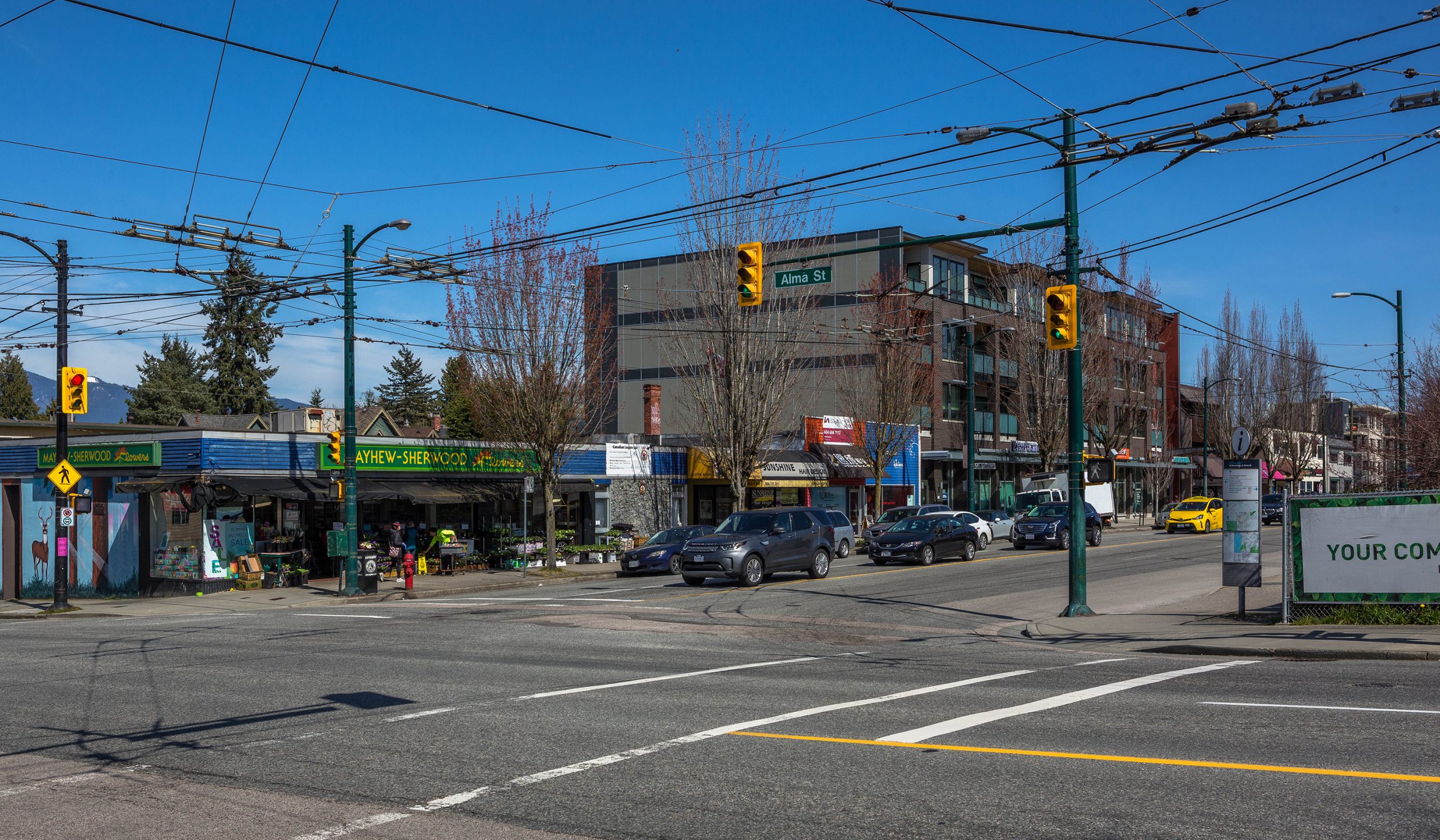
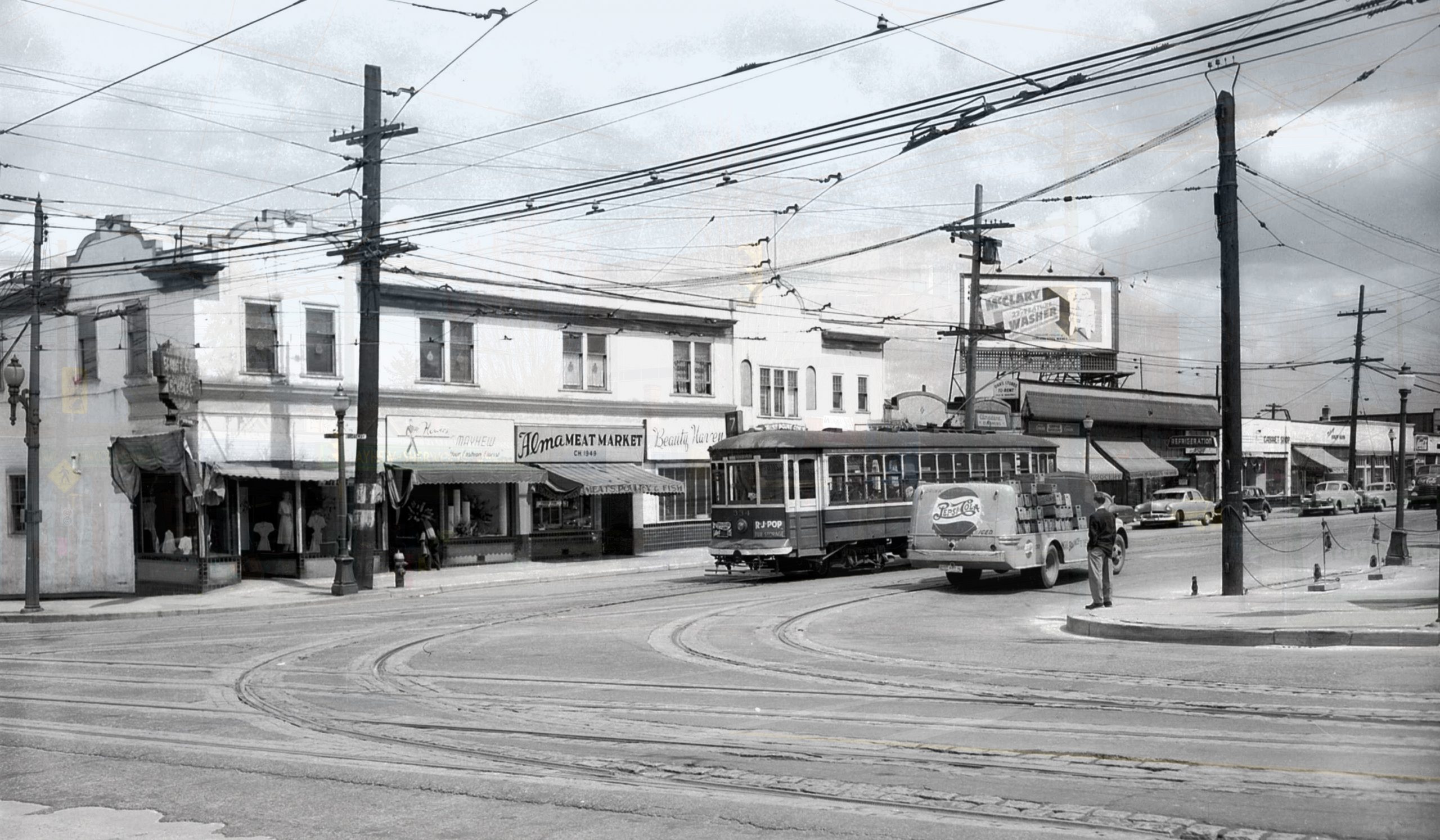
Dunbar and 17th, 1920 and 2020.
The corner building used to be a Safeway.


A Kitsilano home on West 7th Avenue, 1912 and 2020.
In 1912, the Titanic sinks, New Mexico becomes a state, and Annie Walker poses on the front porch with her son Eric.


Smith, Davidson & Wright Building, 1190 Homer Street, 1920 and 2020.
From the Vancouver Heritage Foundation: “Smith Davidson & Wright were a wholesale stationers and paper dealer formed in 1907 by Fred Smith, William E. Davidson and Francis Wright. The building was designed by E.E. Blackmore and completed in 1910 on the newly released CPR lands east of Homer. By 1930 the company had expanded to Victoria, Calgary, Saskatoon and Edmonton. In 1953 the Company became Smith Davidson & Lecky. The name is still inscribed over the entrance. The new partner, John Lecky, was married to H.R. MacMillan’s oldest daughter Marion. H.R. MacMillan bought the company for his son-in-law to run. The company also had a warehouse on Granville Island.”

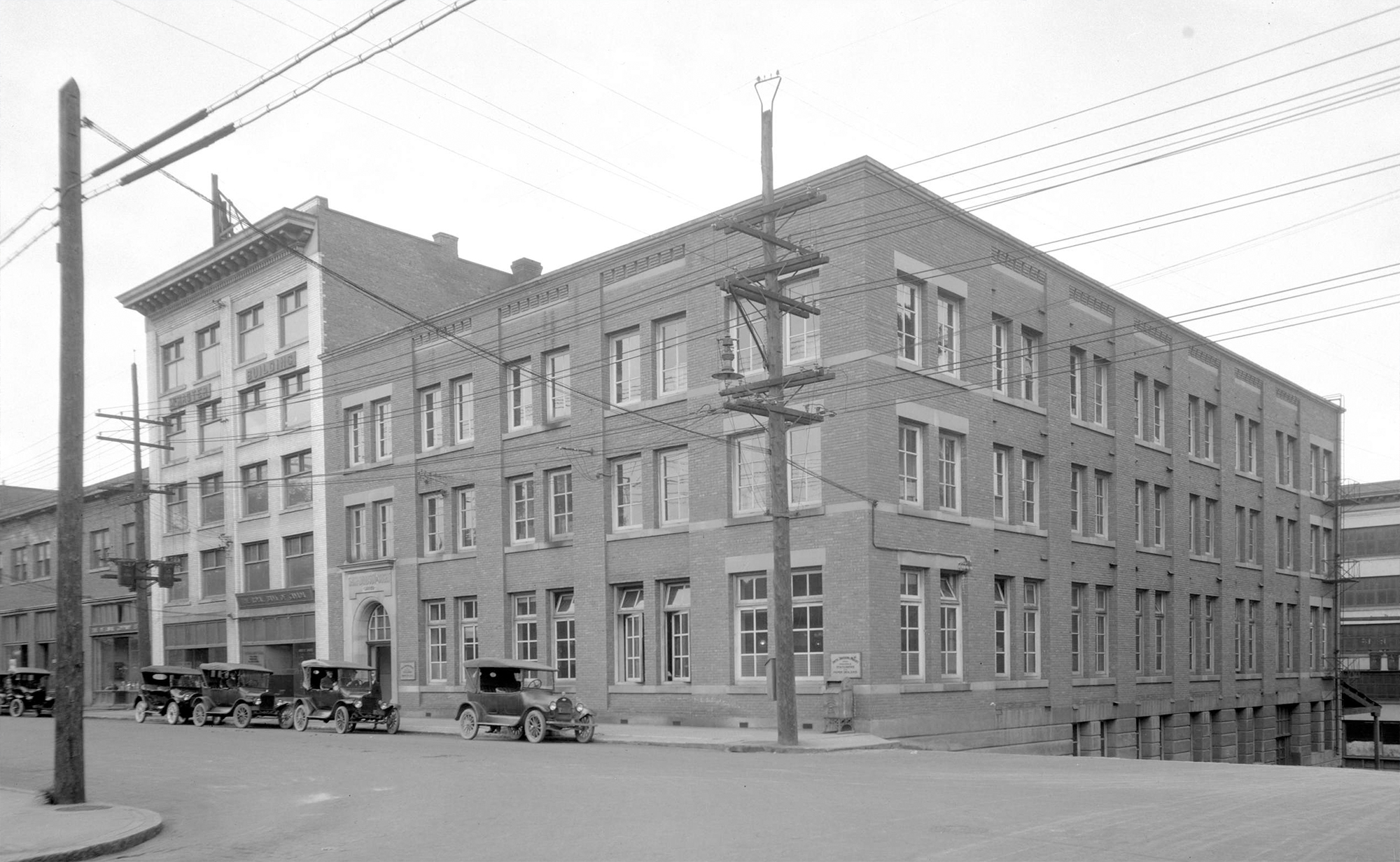
Capitola Pharmacy and Apartments, Davie and Thurlow, 1924 and 2020.
Built in 1909 by John Seabold, an American who left Vancouver to avoid serving in the Great War, abandoning this building and others throughout the West End.
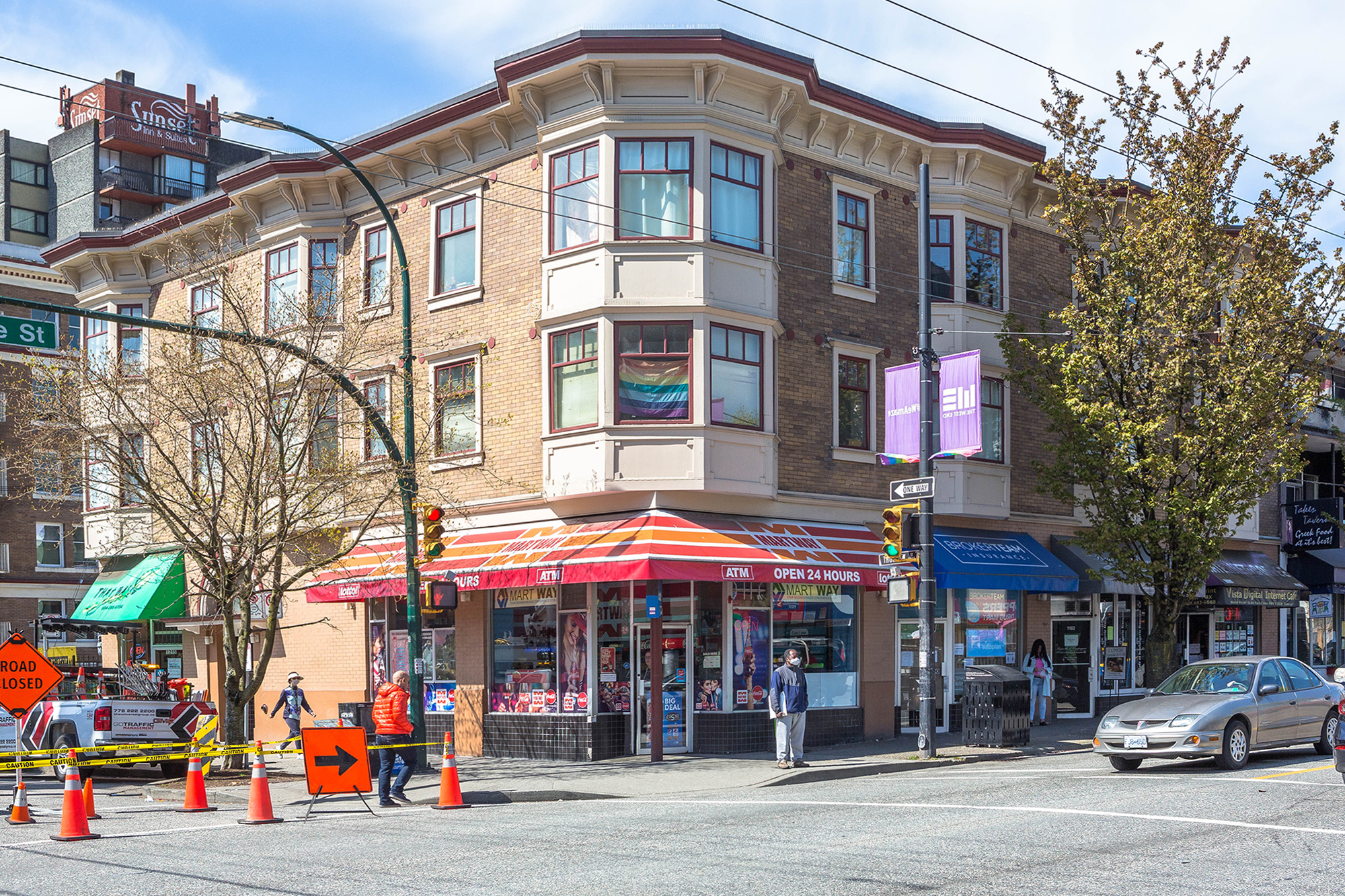

Man crossing Beach Avenue at Davie Street, 1960s and 2020.
Photo courtesy City of Vancouver. There are lots of reference points in these two photographs, the most obvious one being the Berkeley Tower in the background, now dwarfed by others competing for views. The 16-storey building was constructed in 1958, and was the first highrise in the West End.

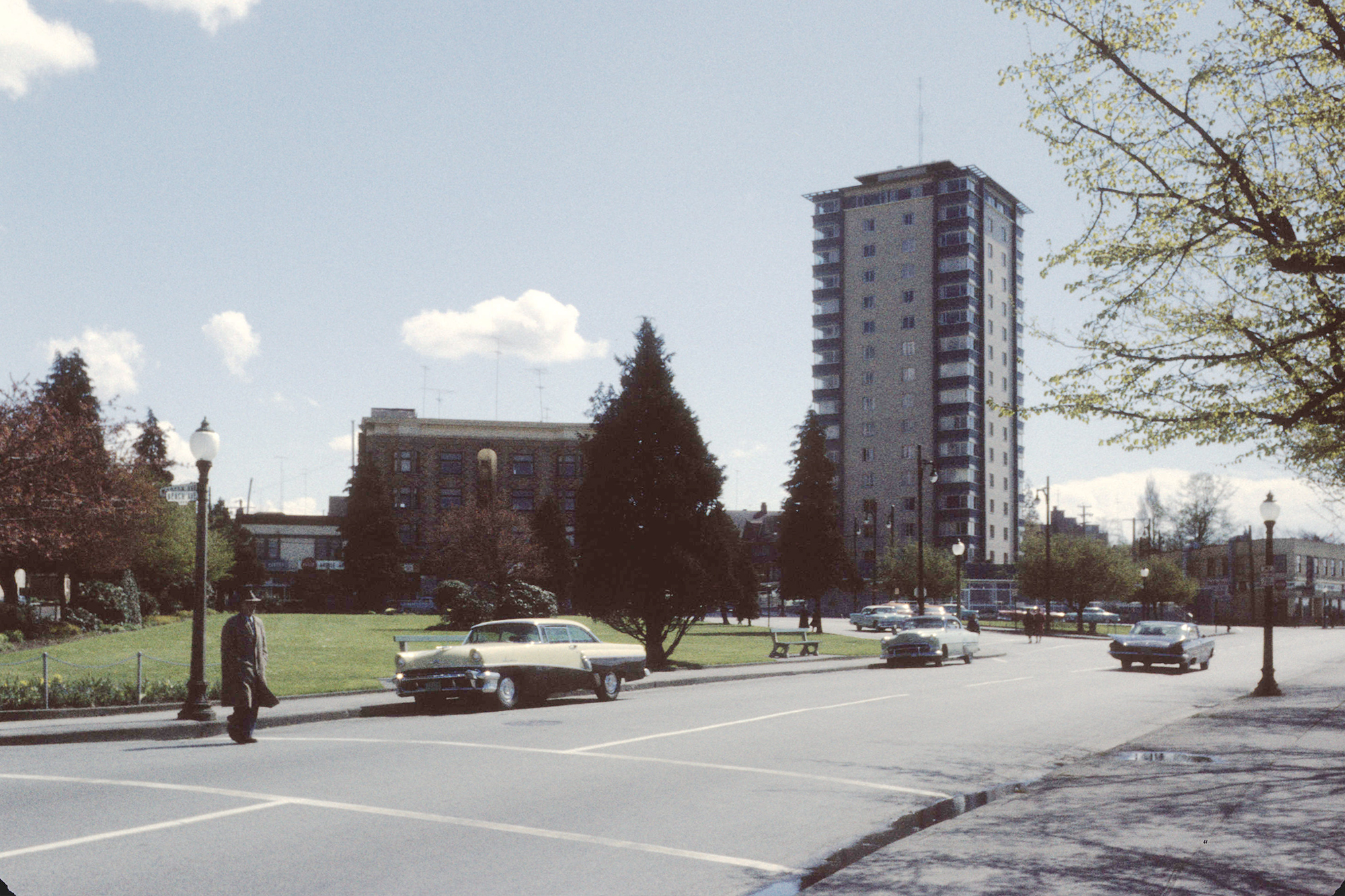
Vancouver Fire Hall Number 6, Nelson and Nicola, 1908 and 2020.
Very few buildings in Vancouver have survived as long as this one. And it is still an operating fire hall.
